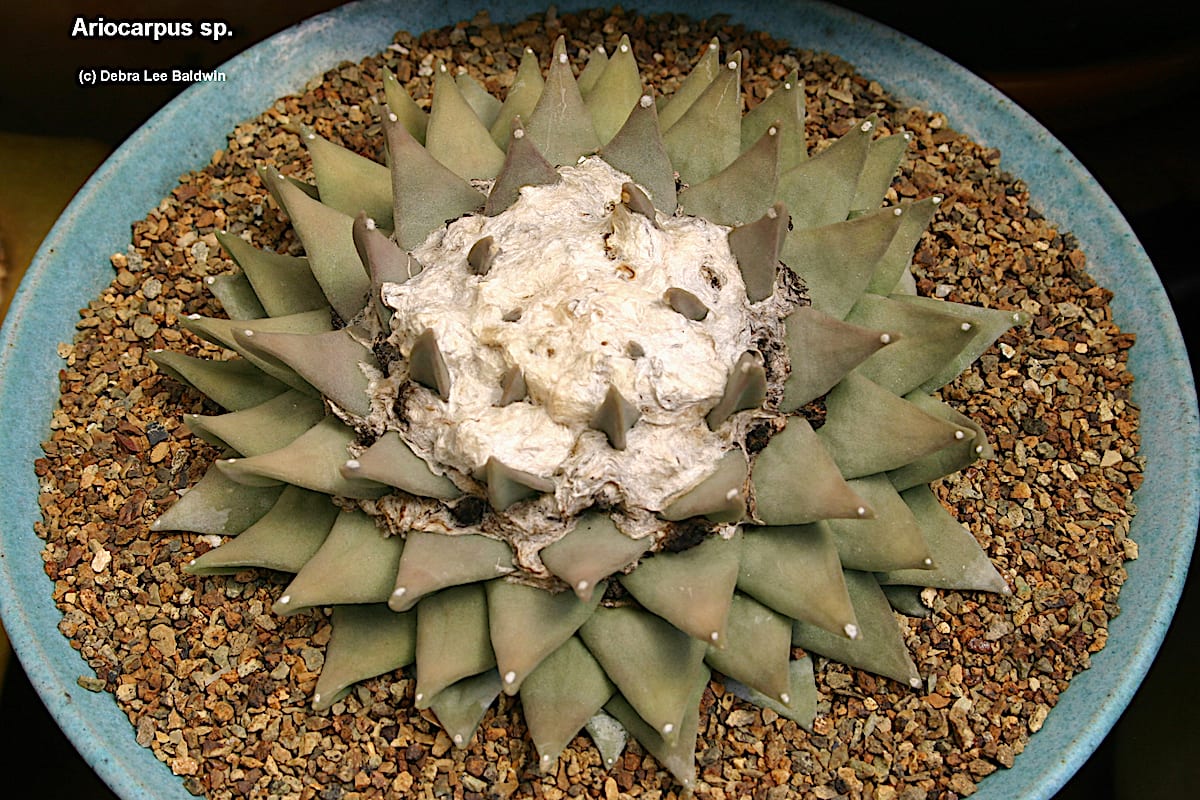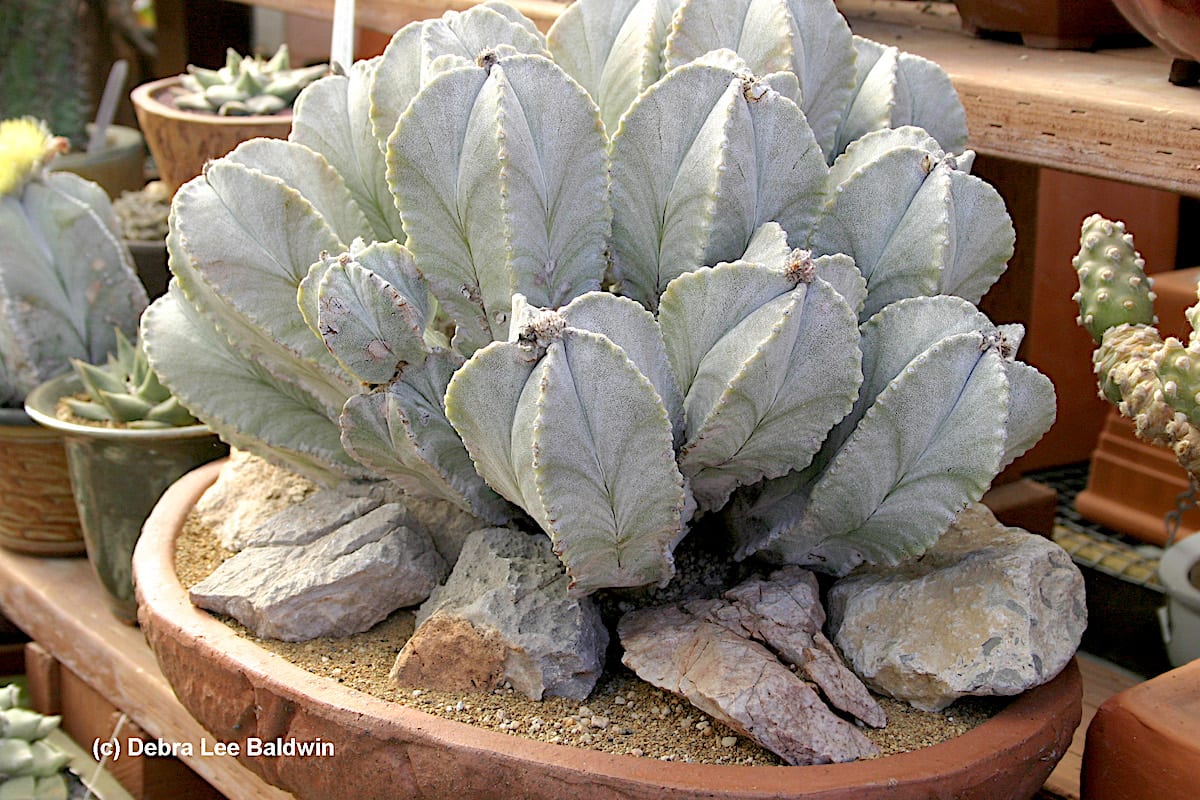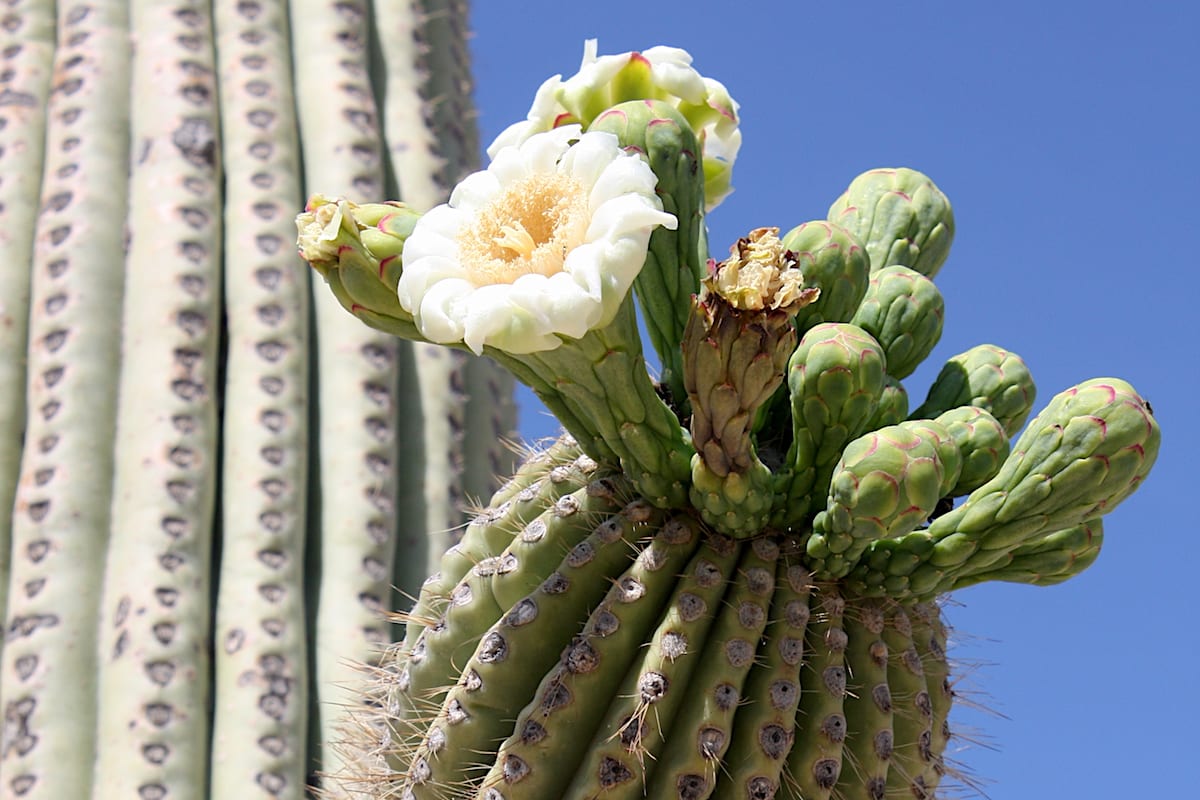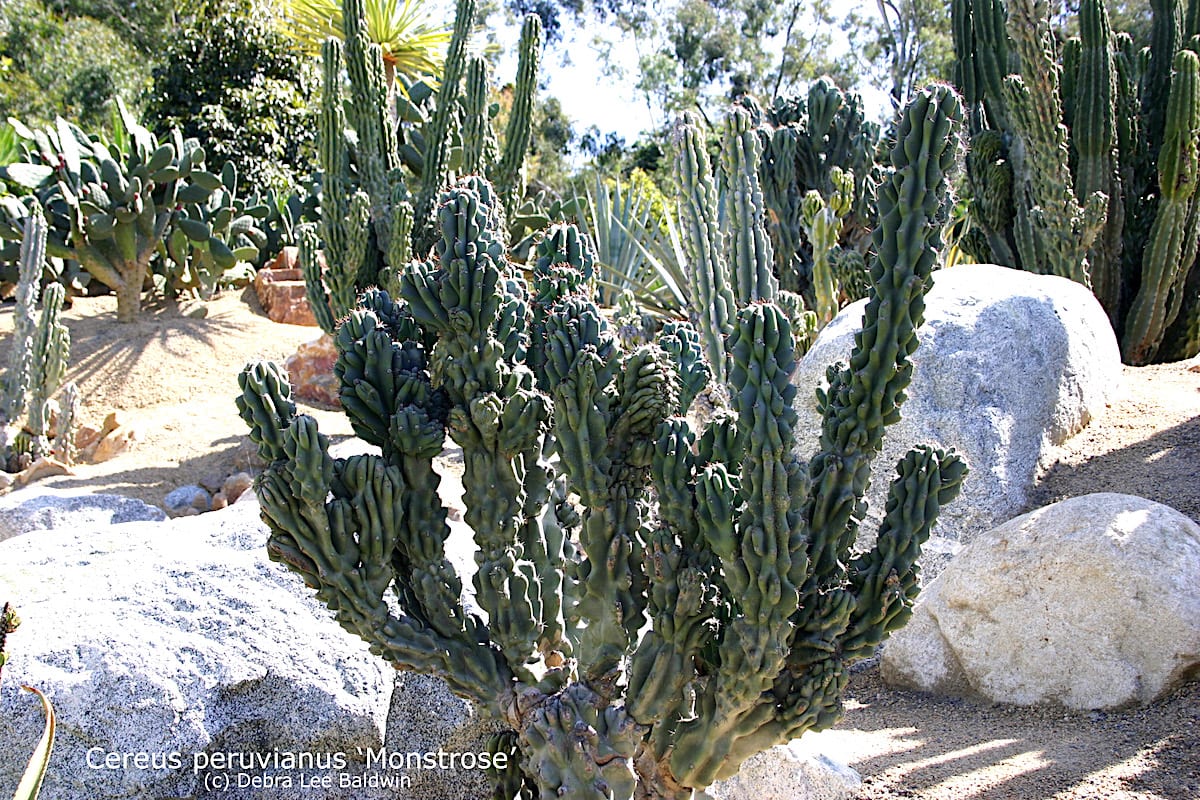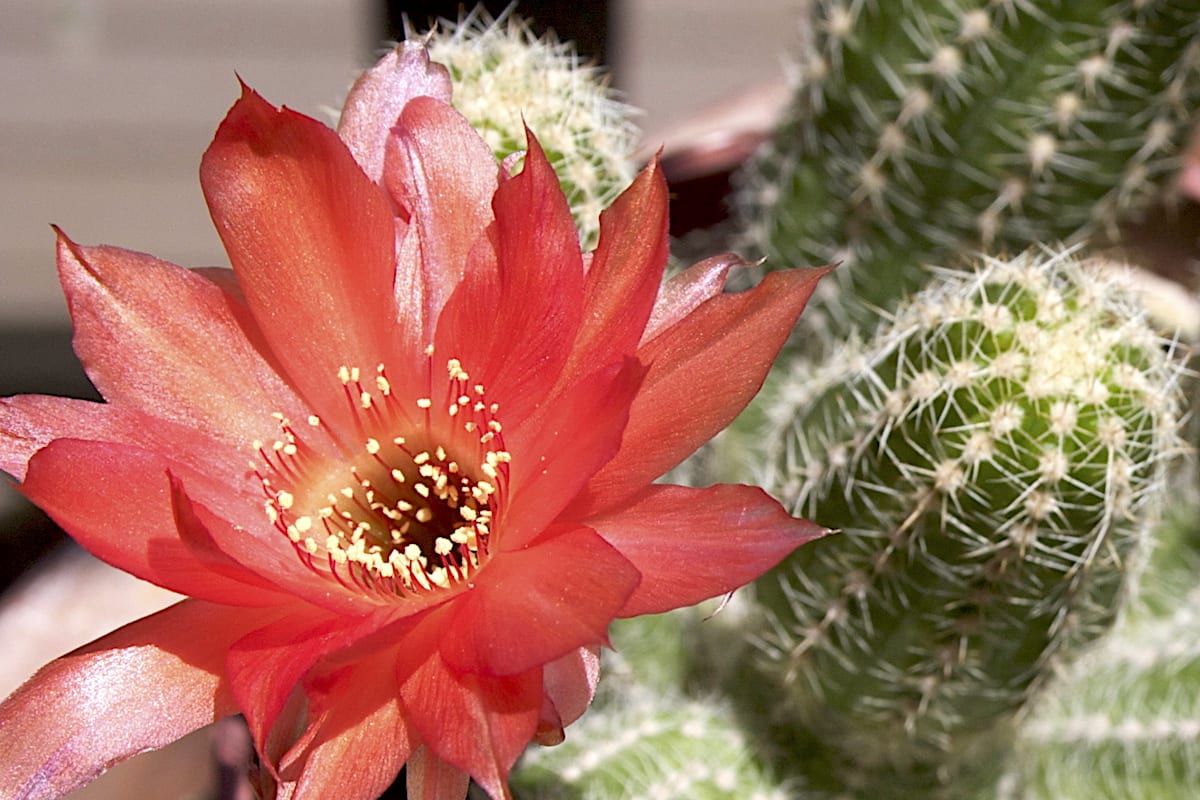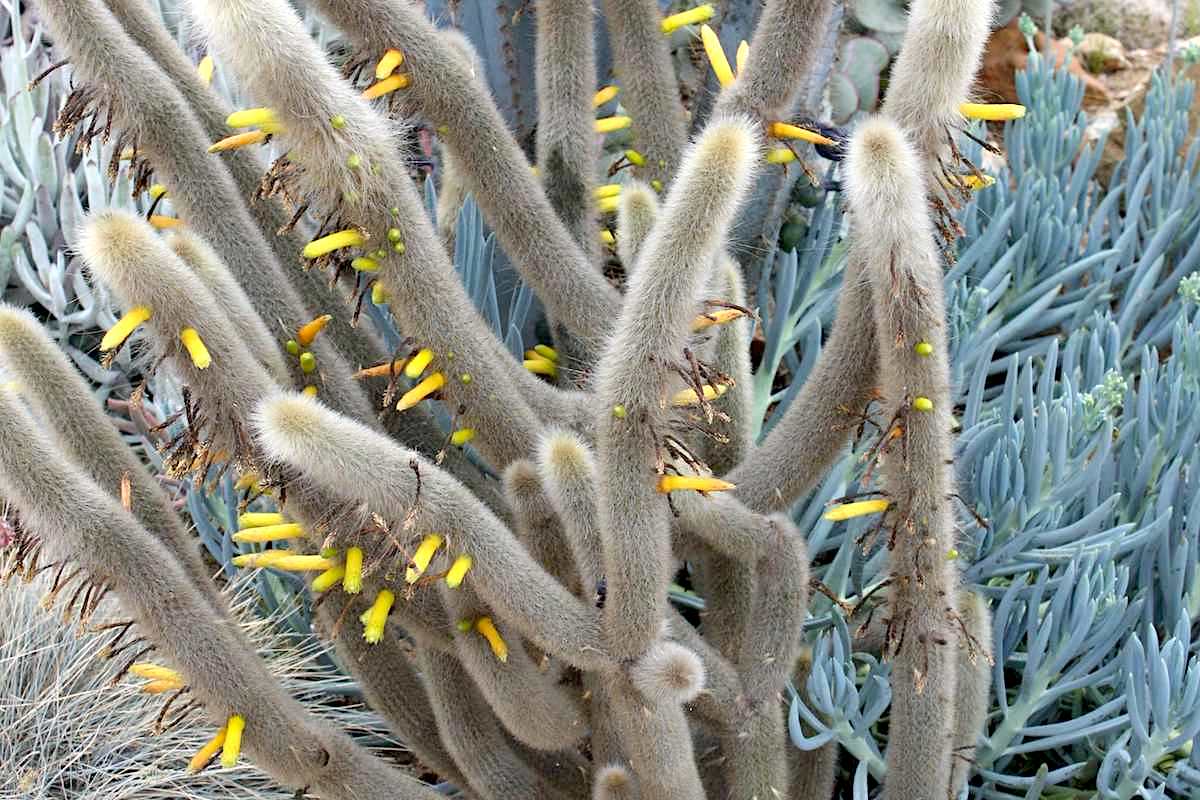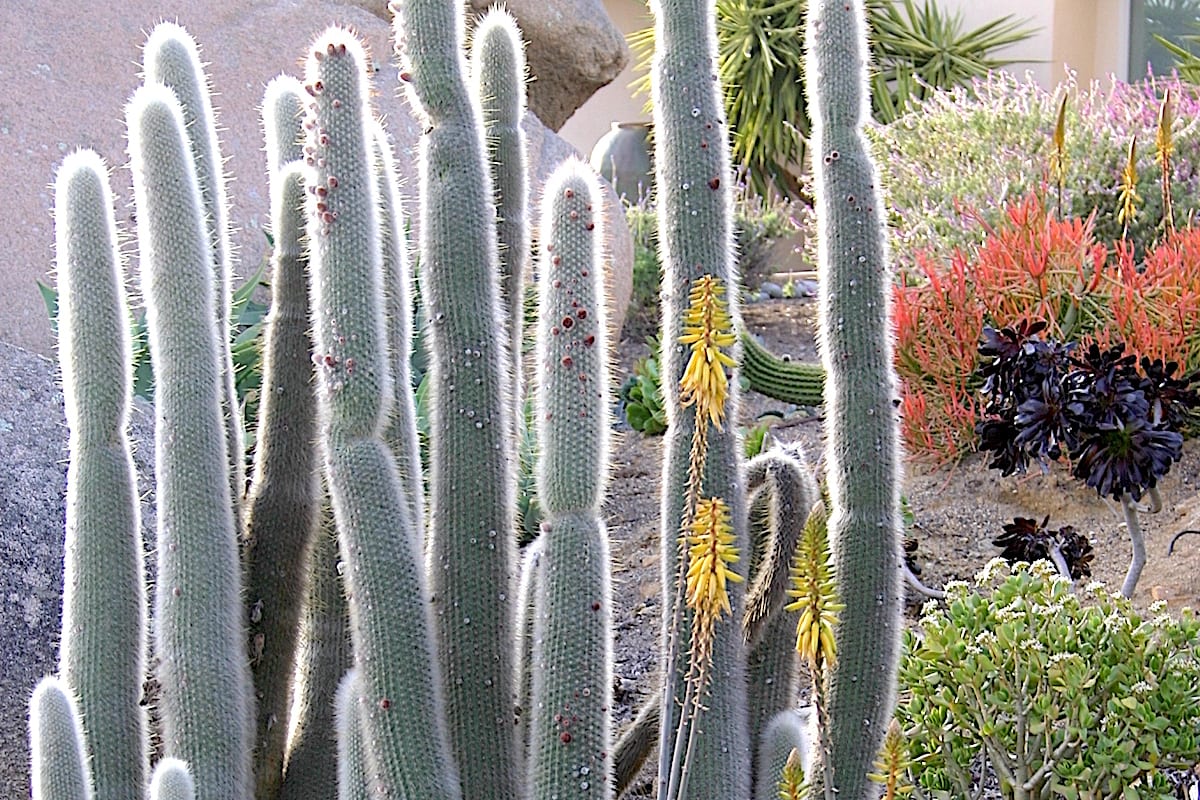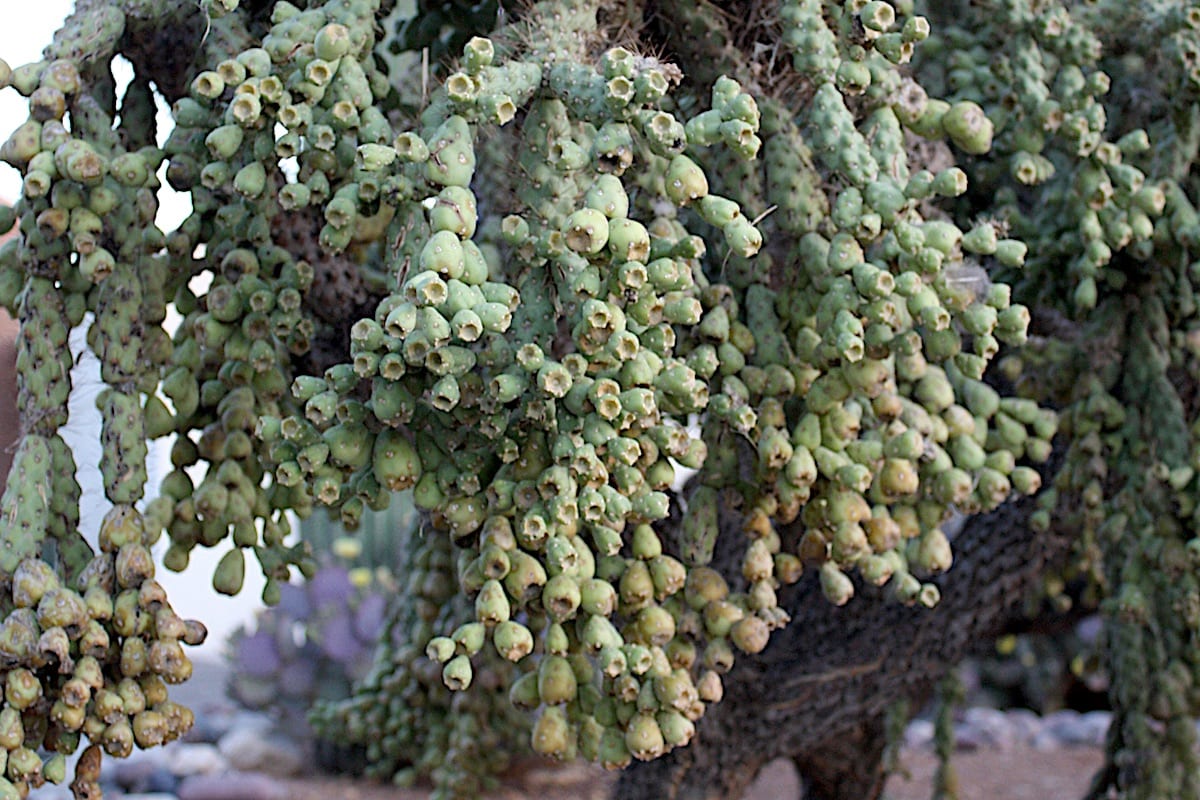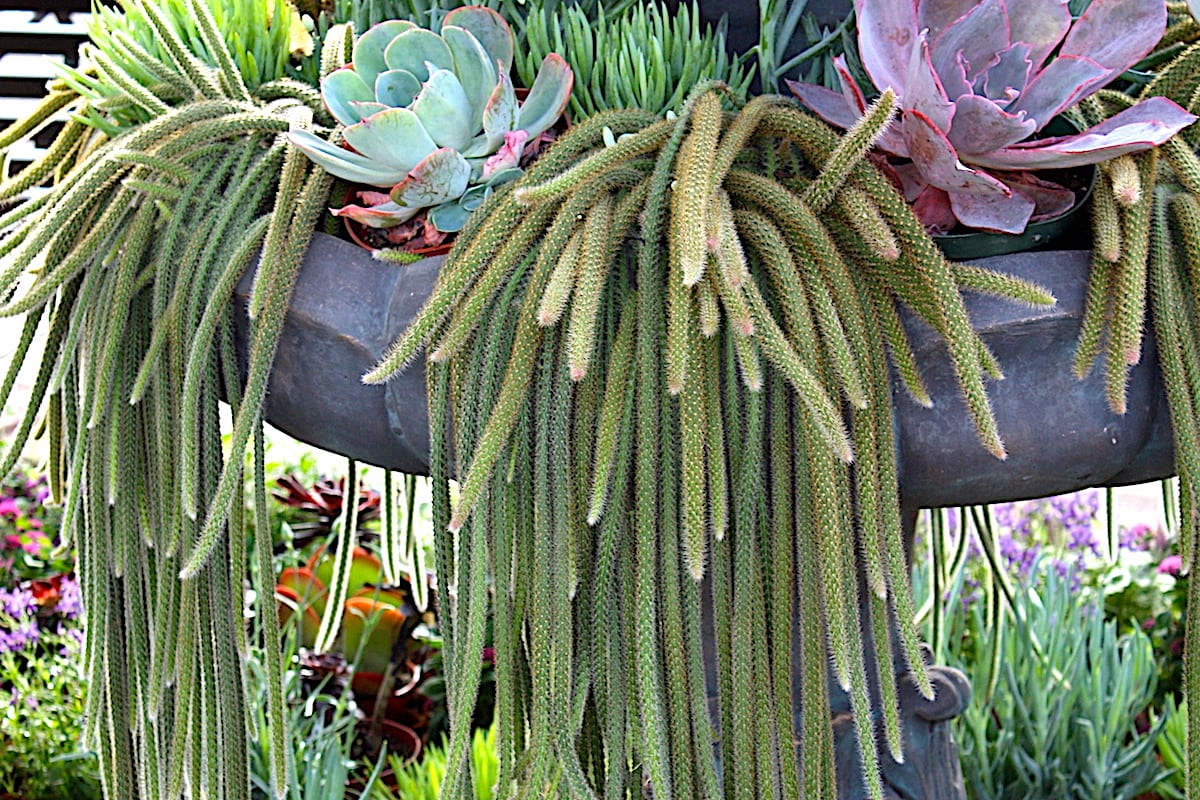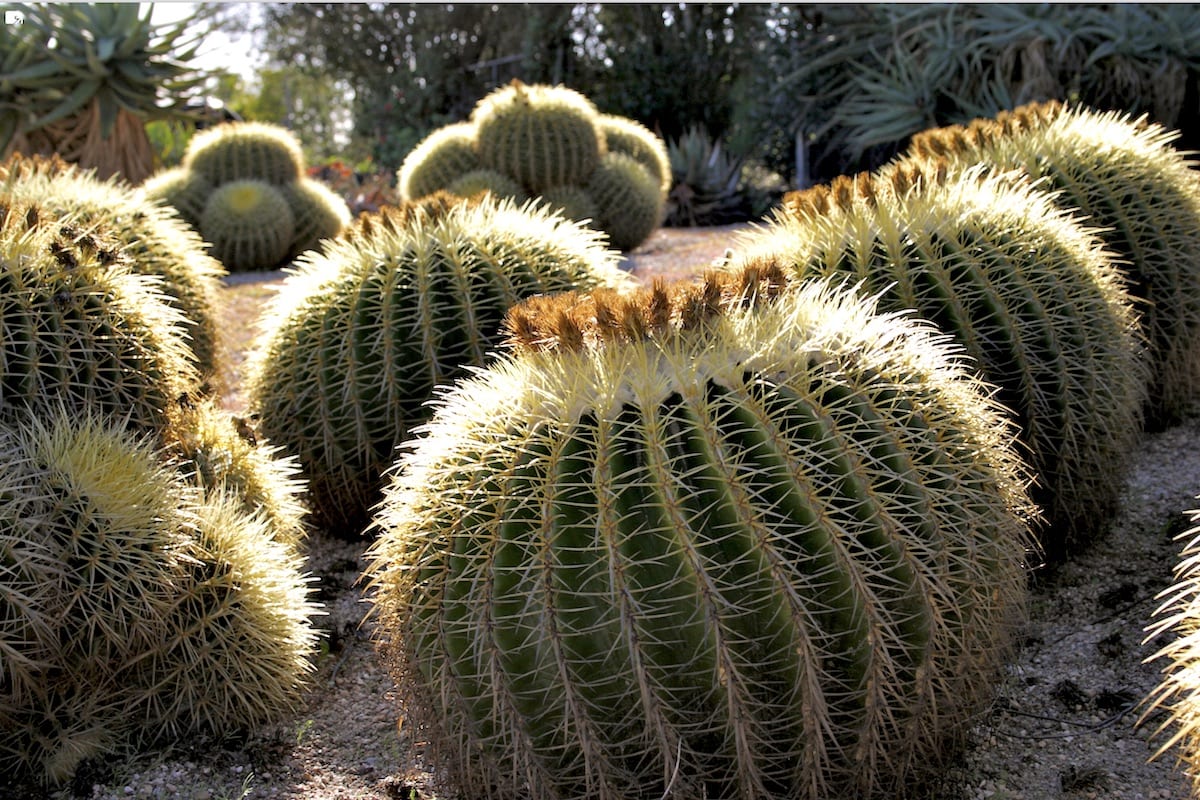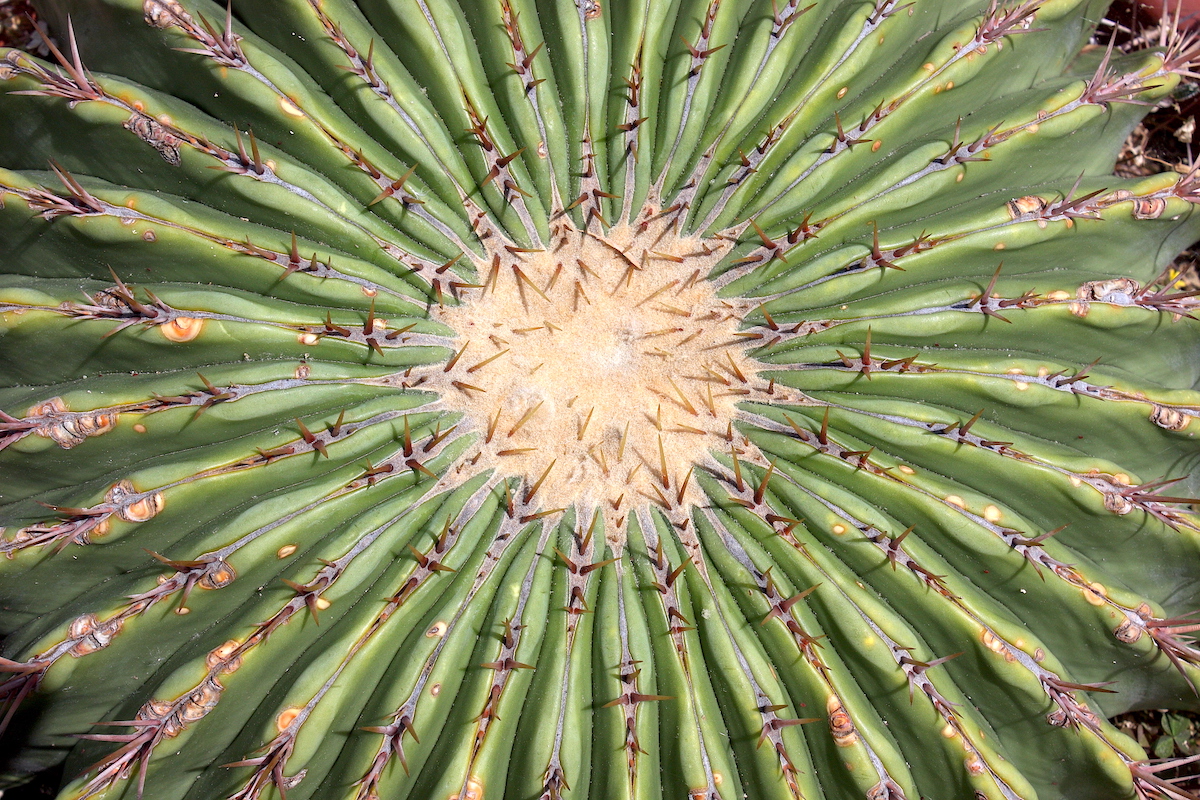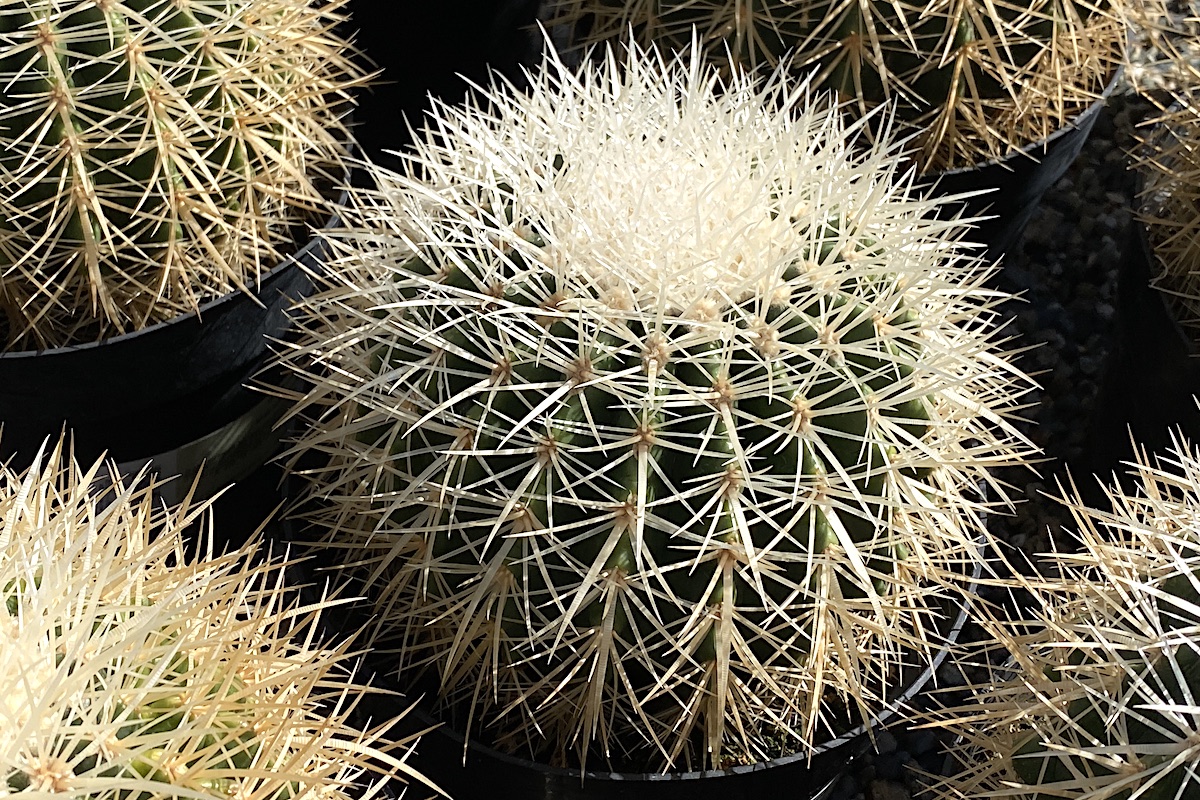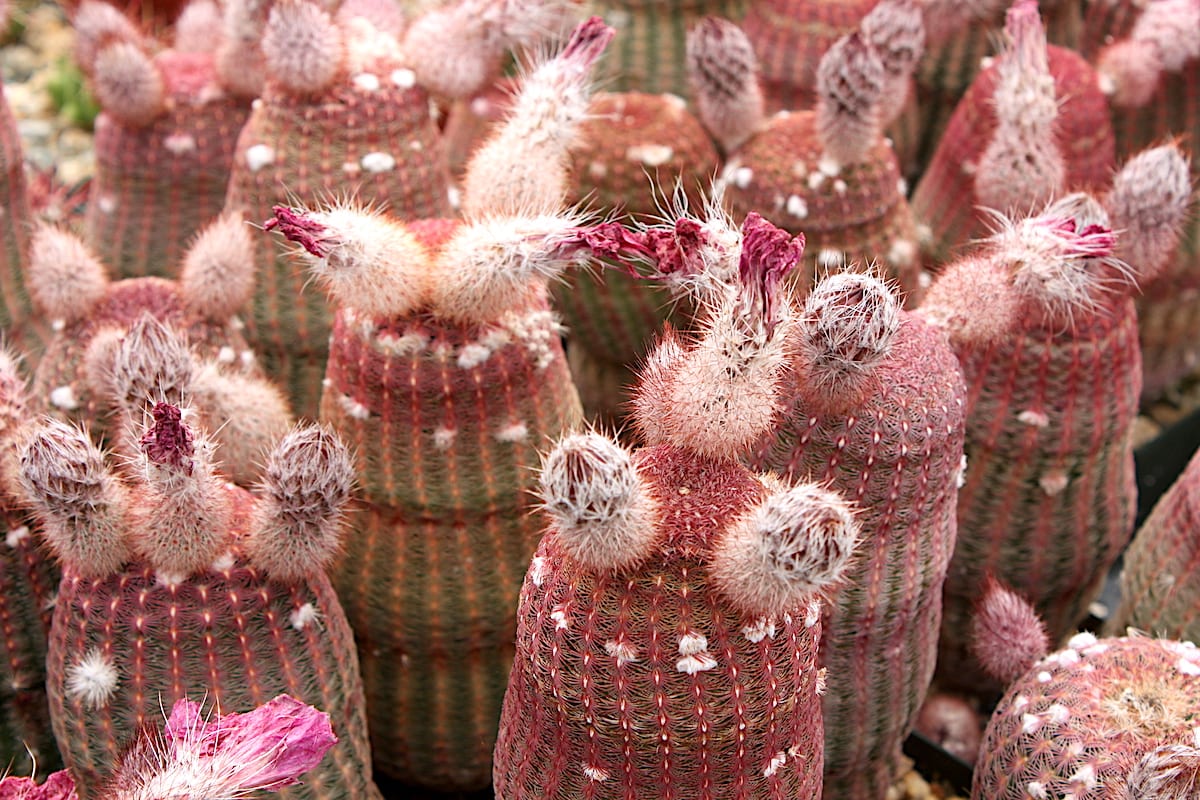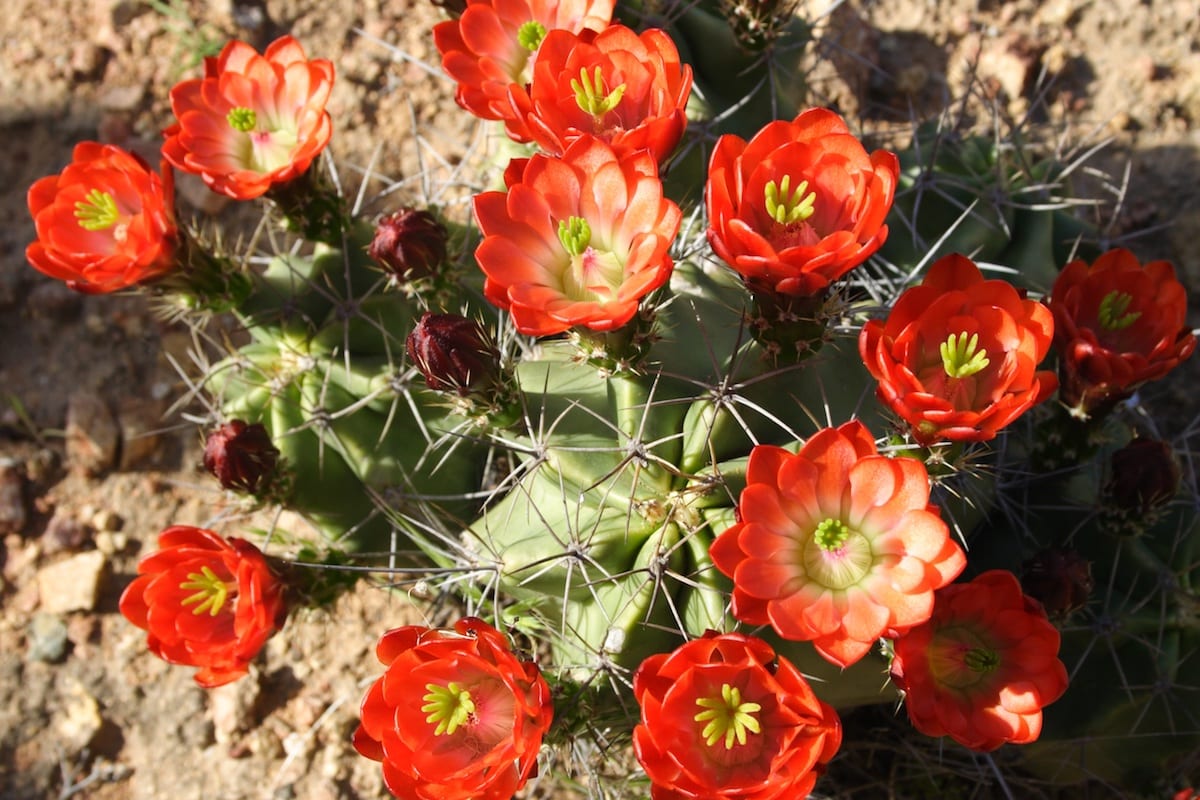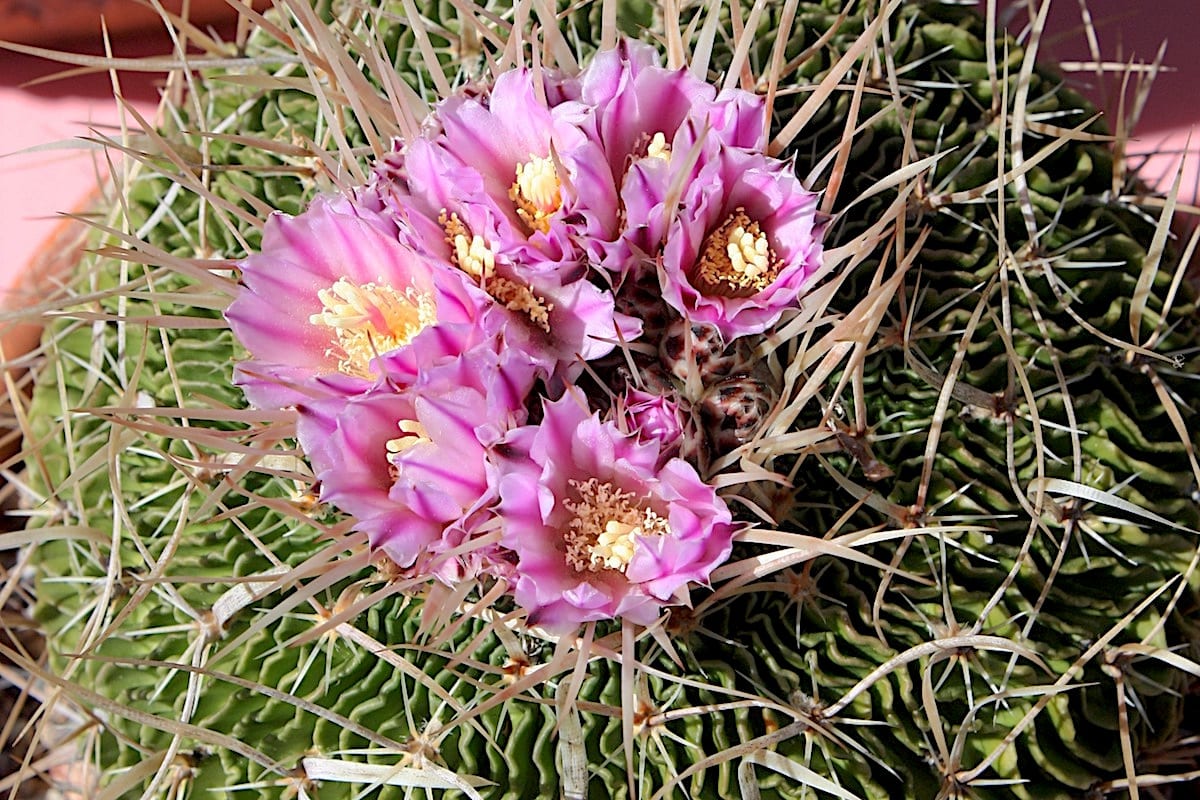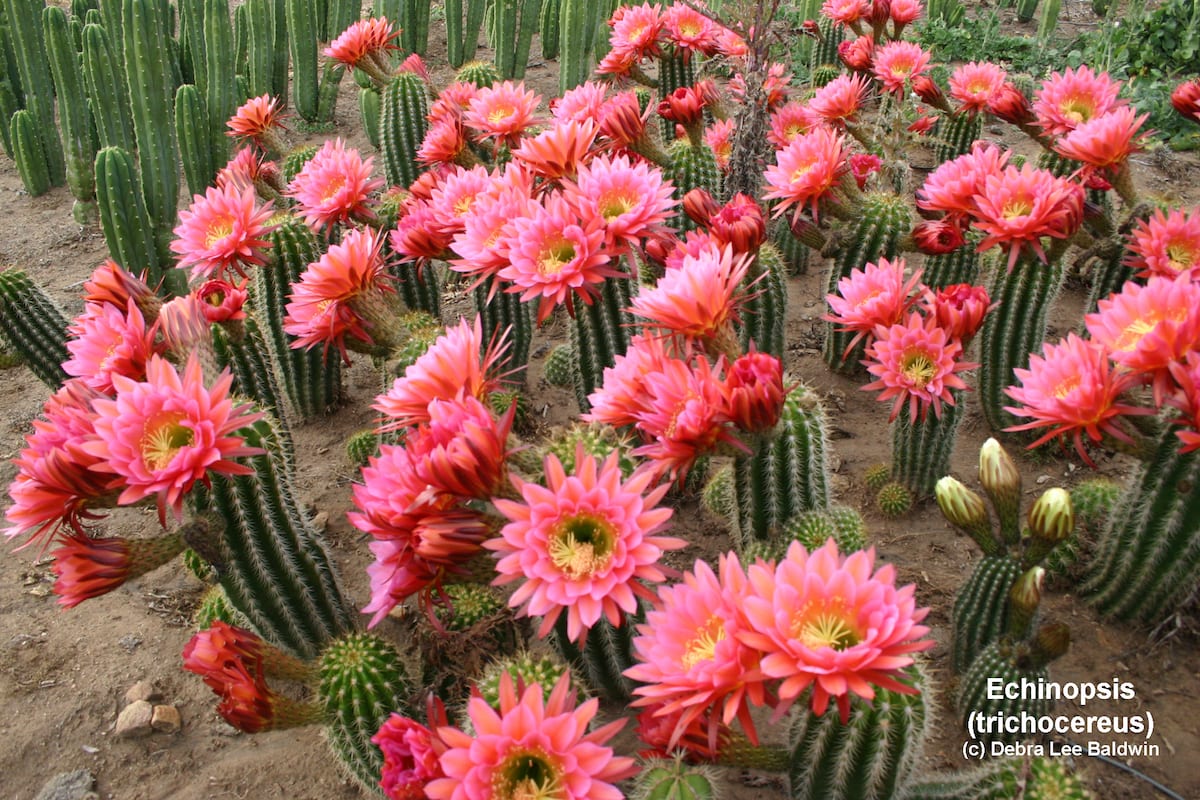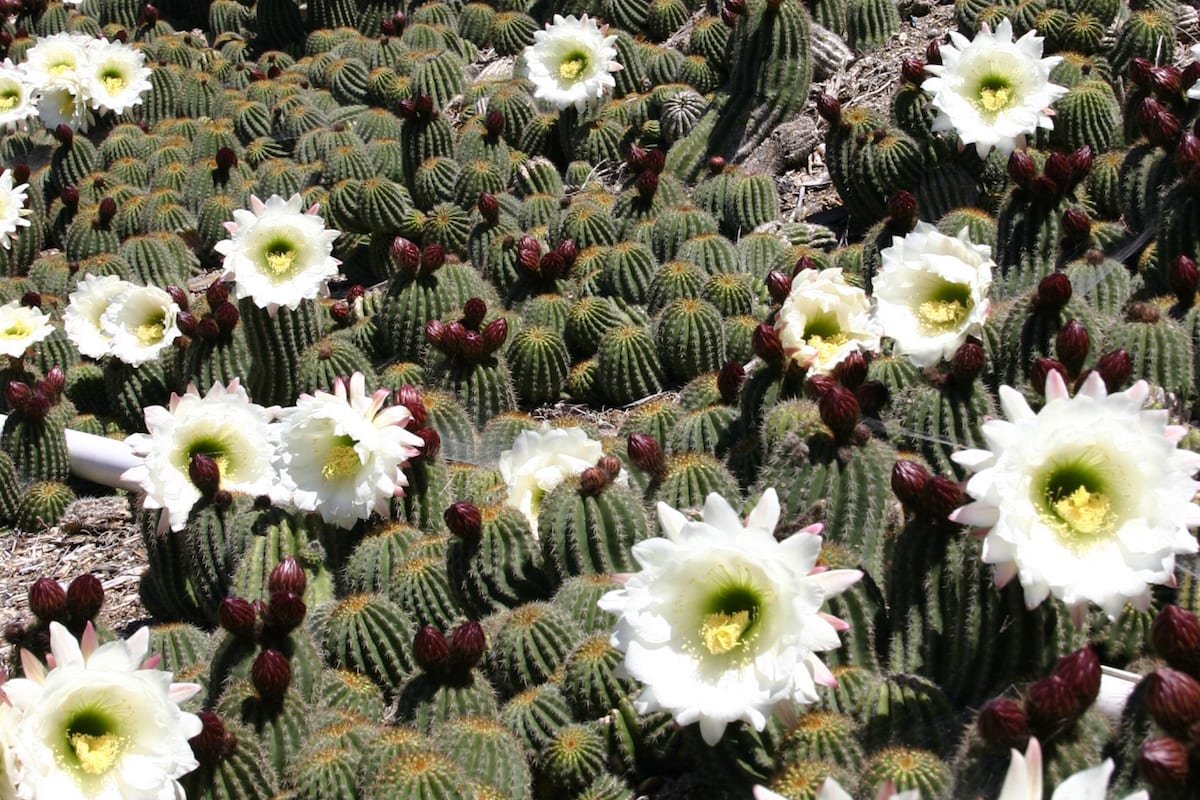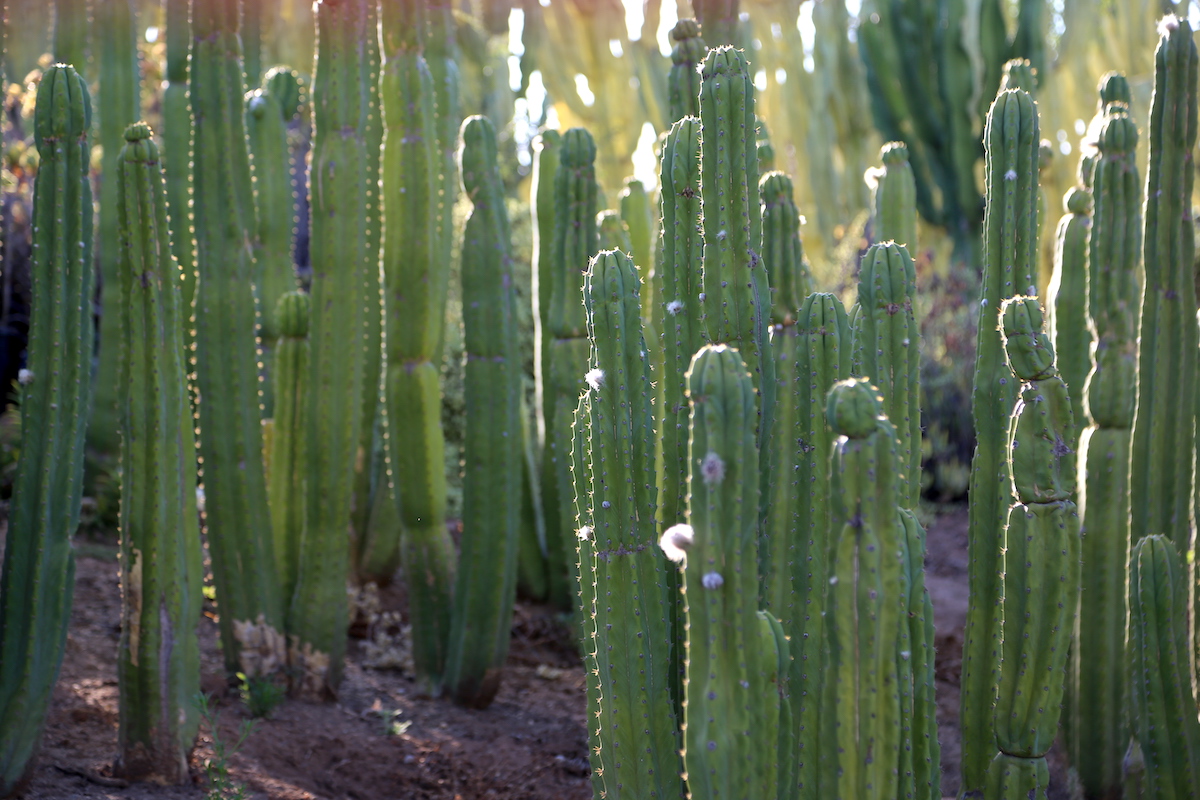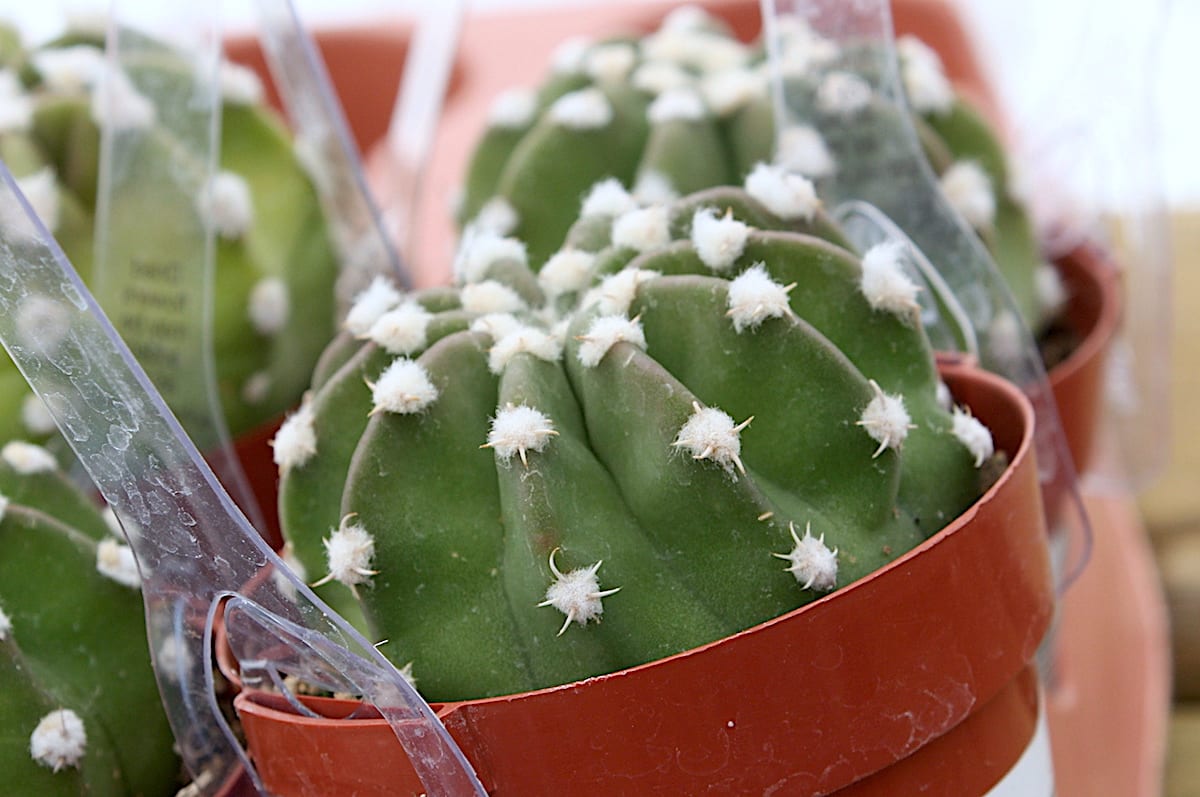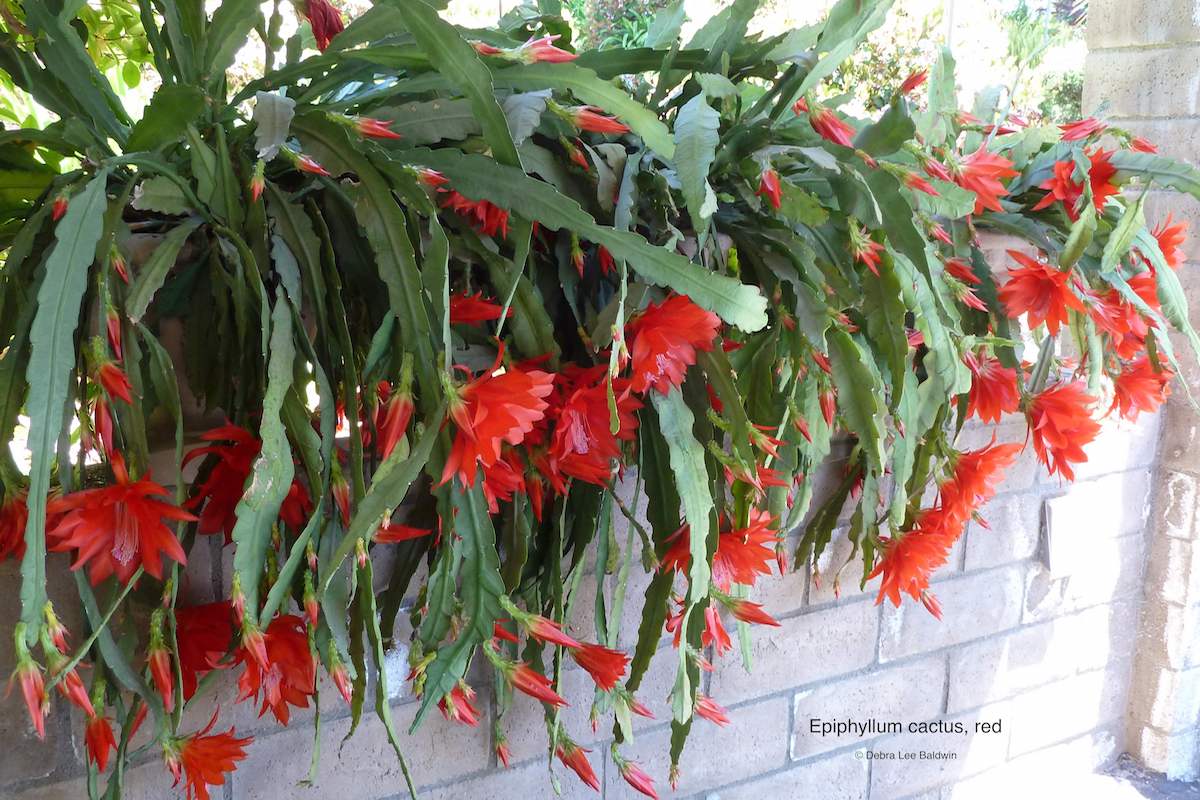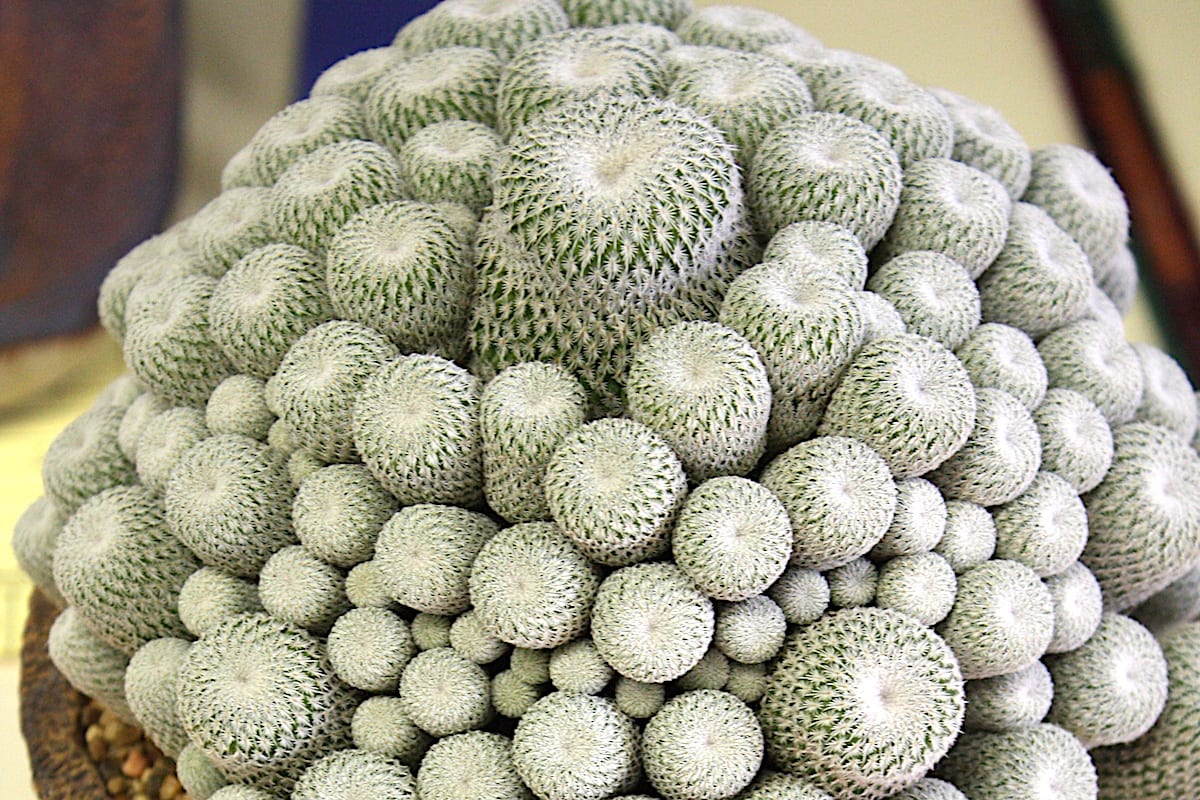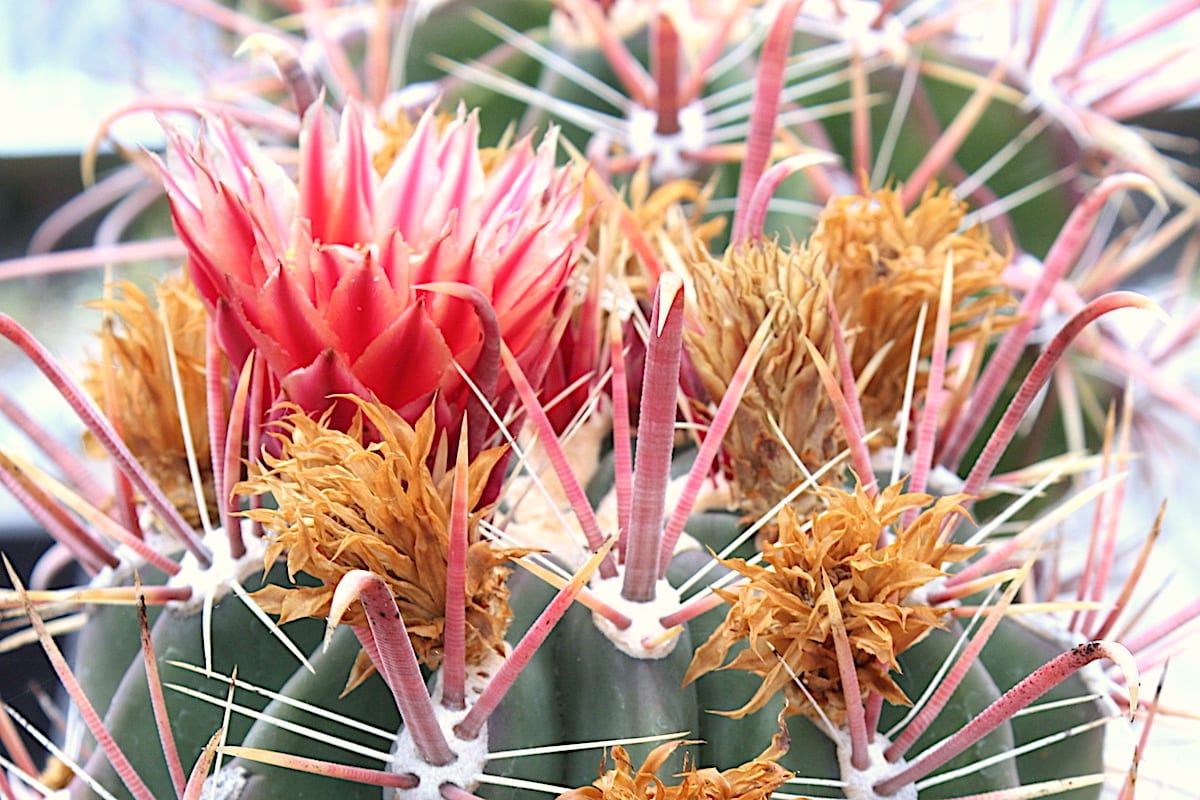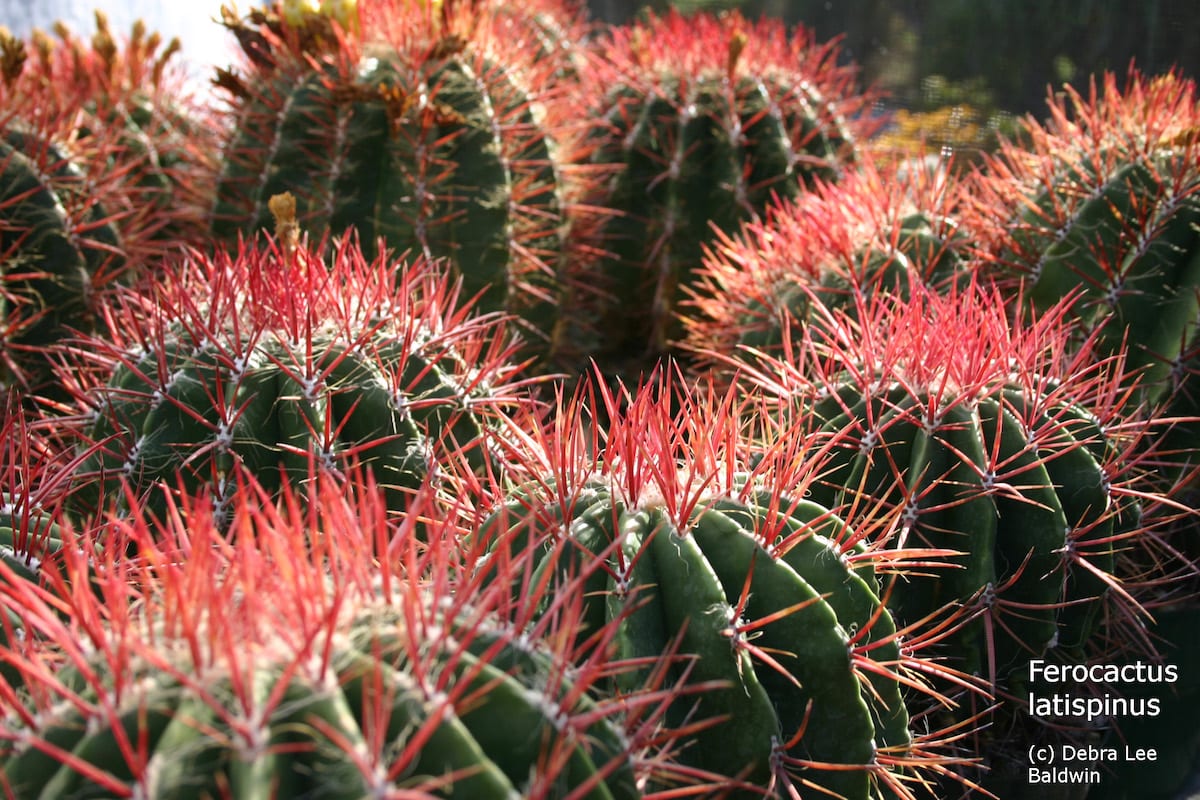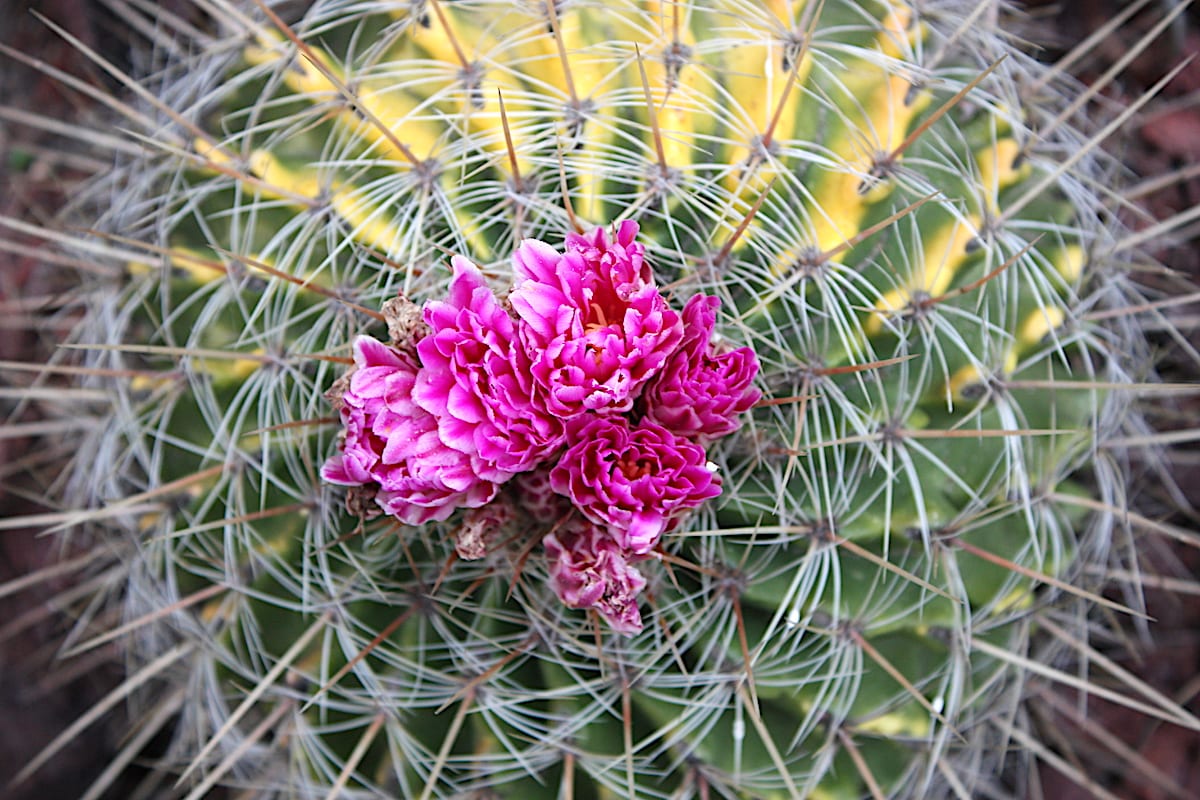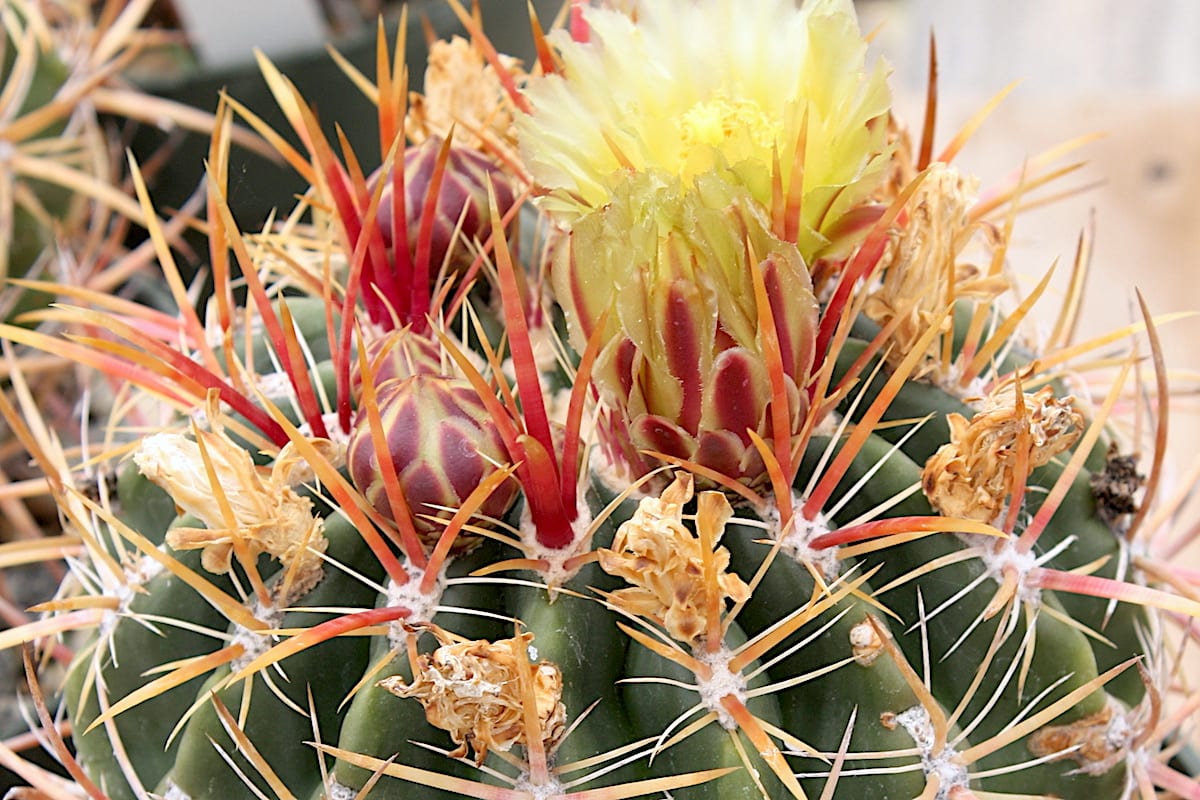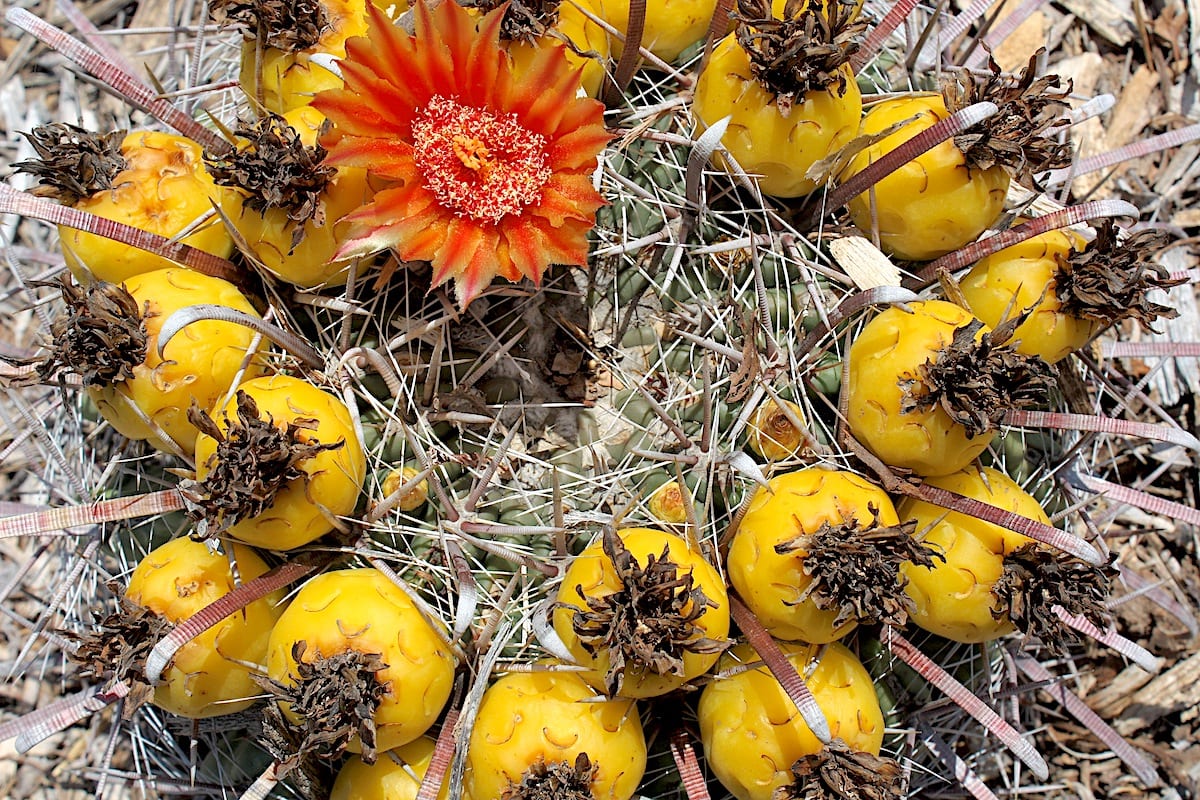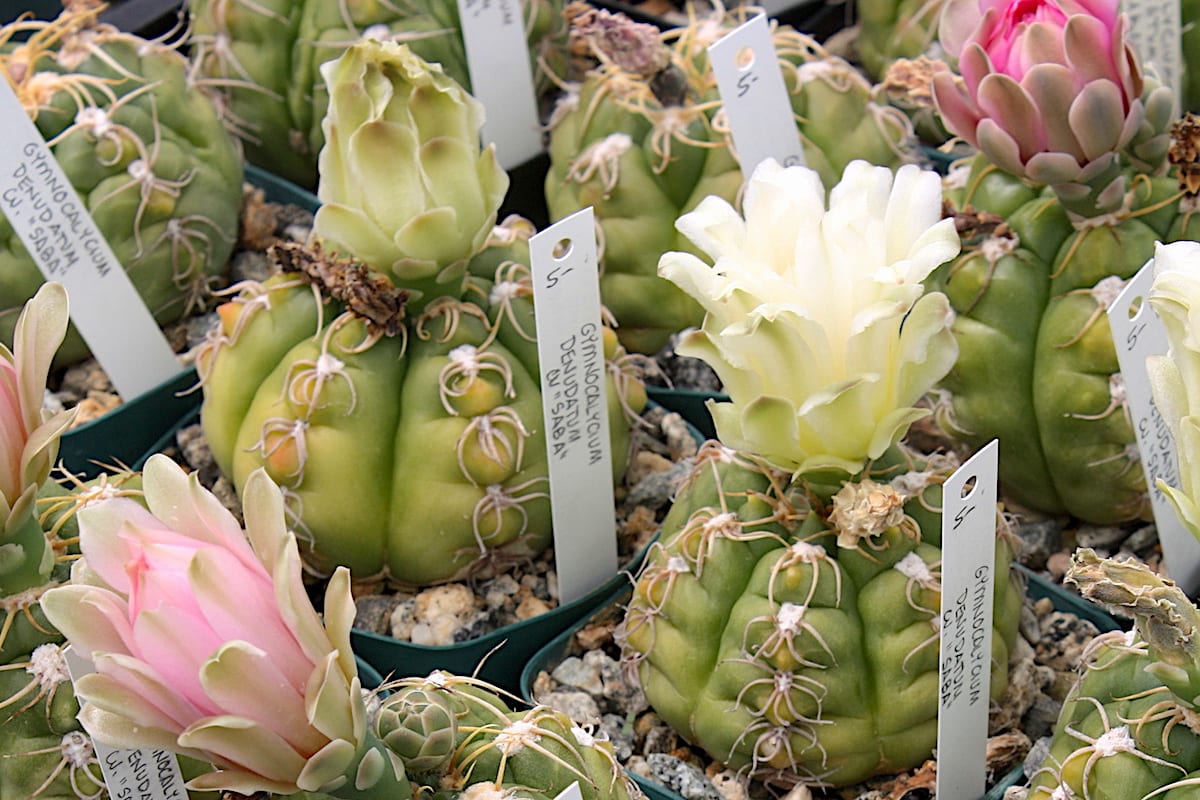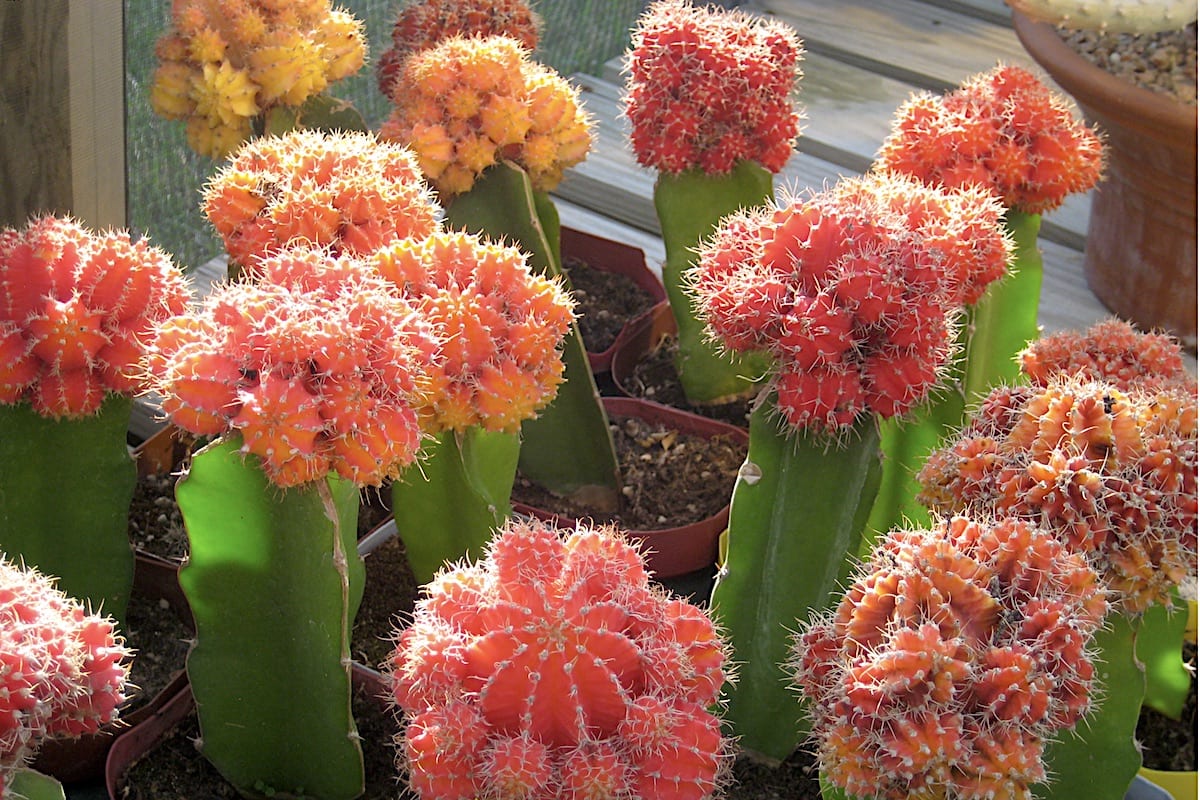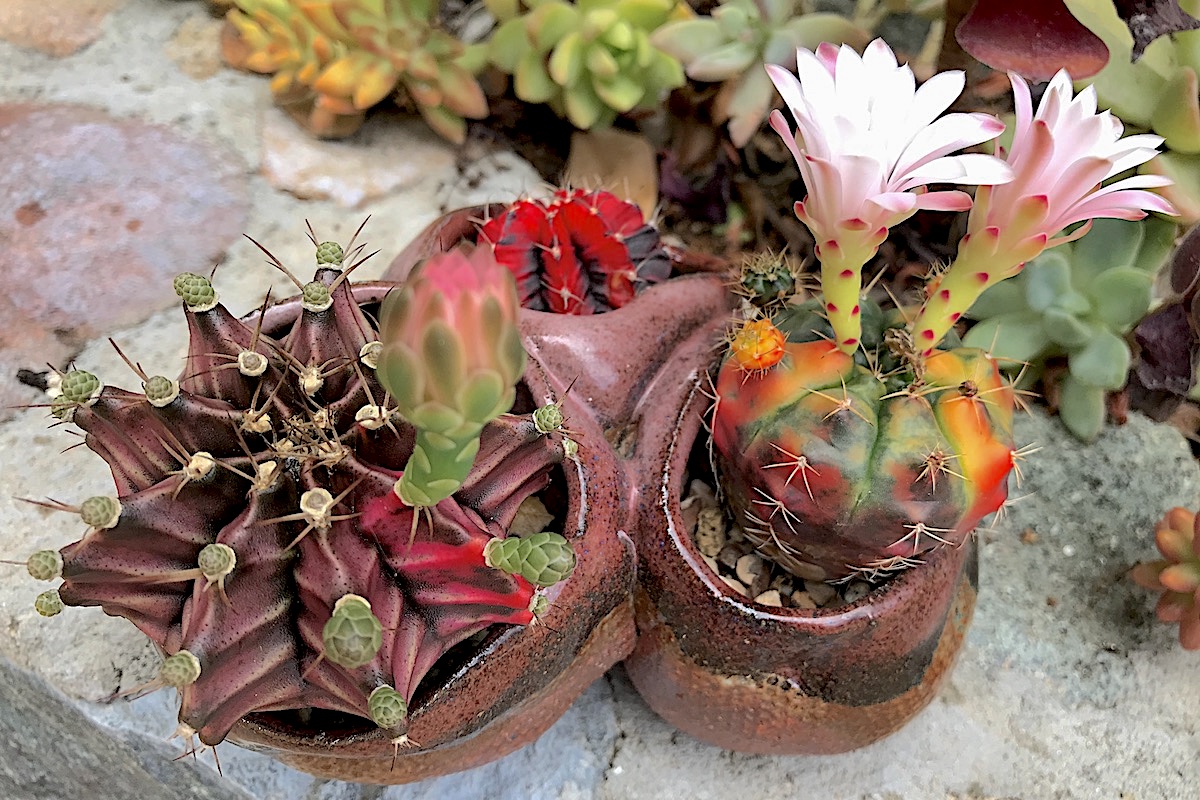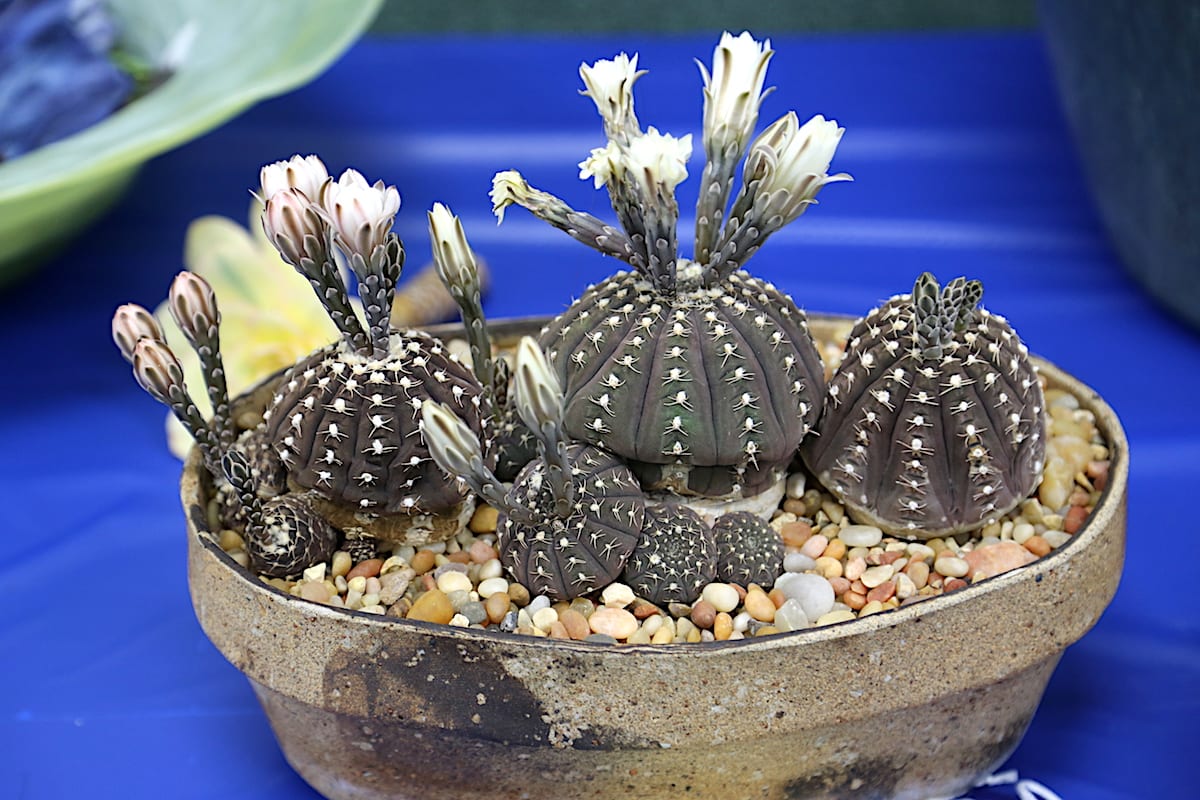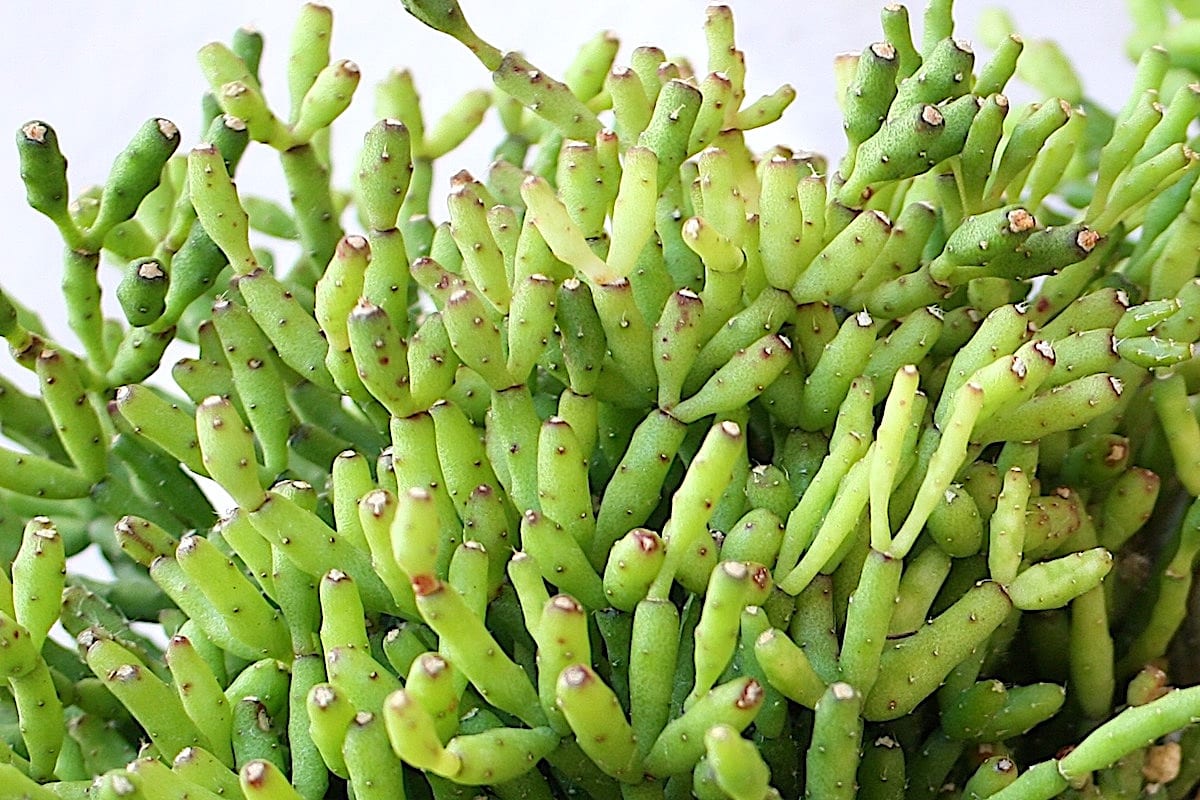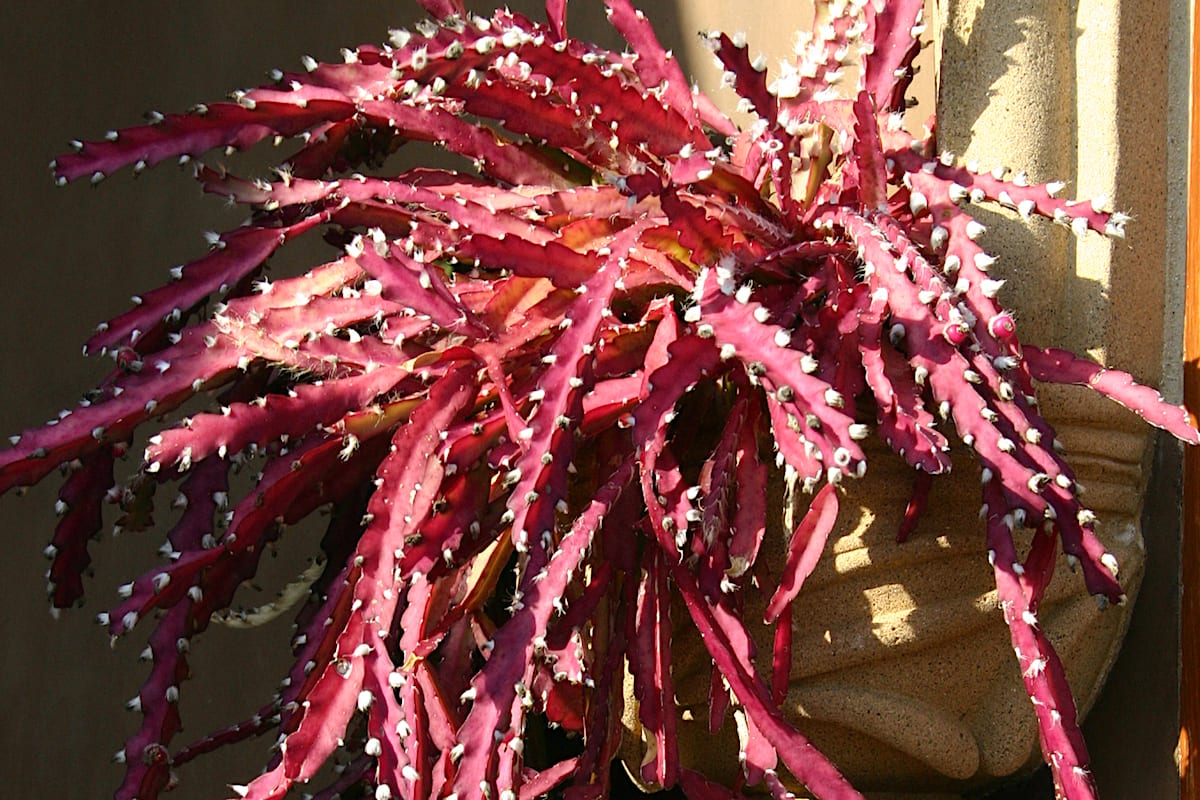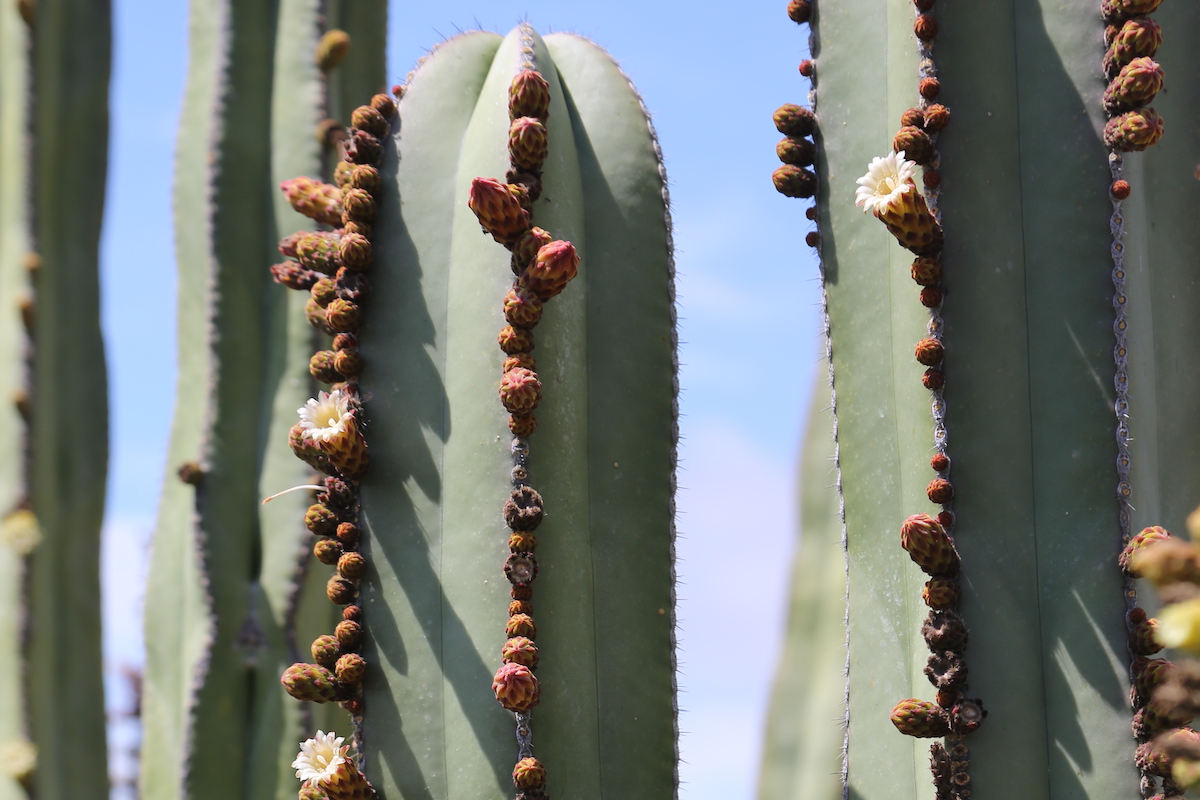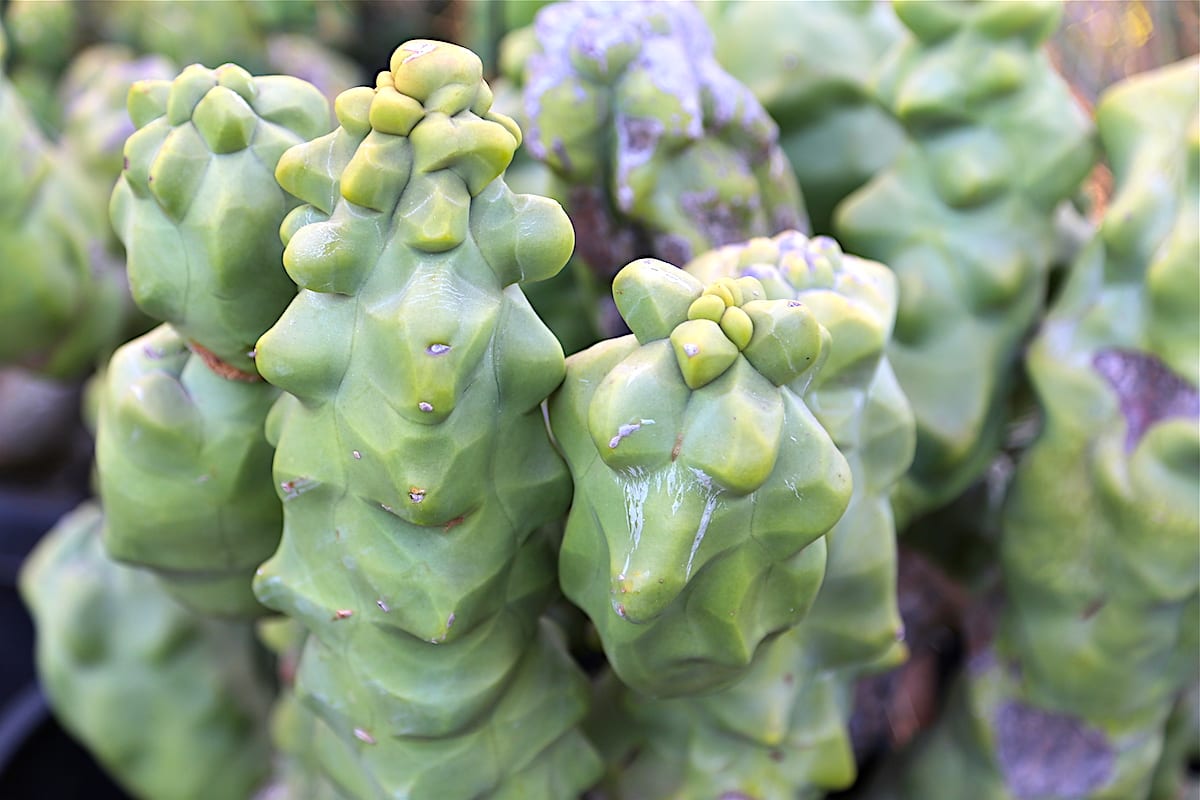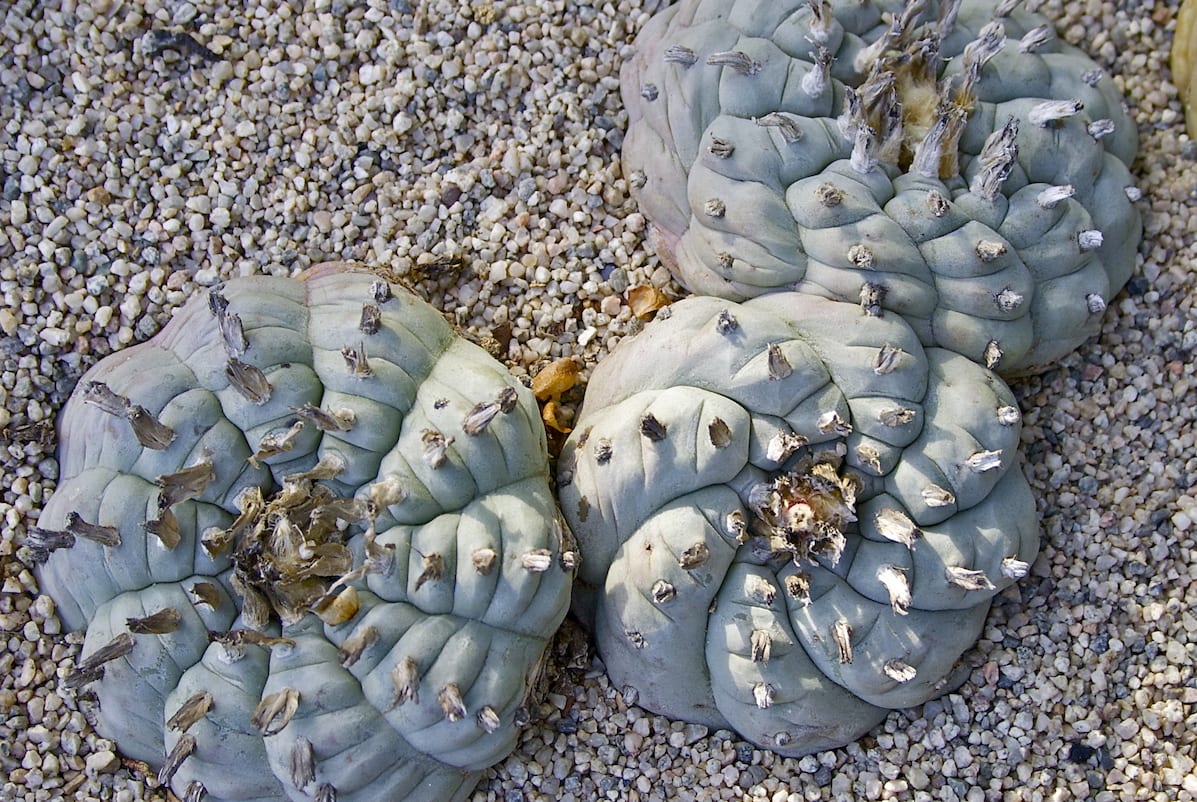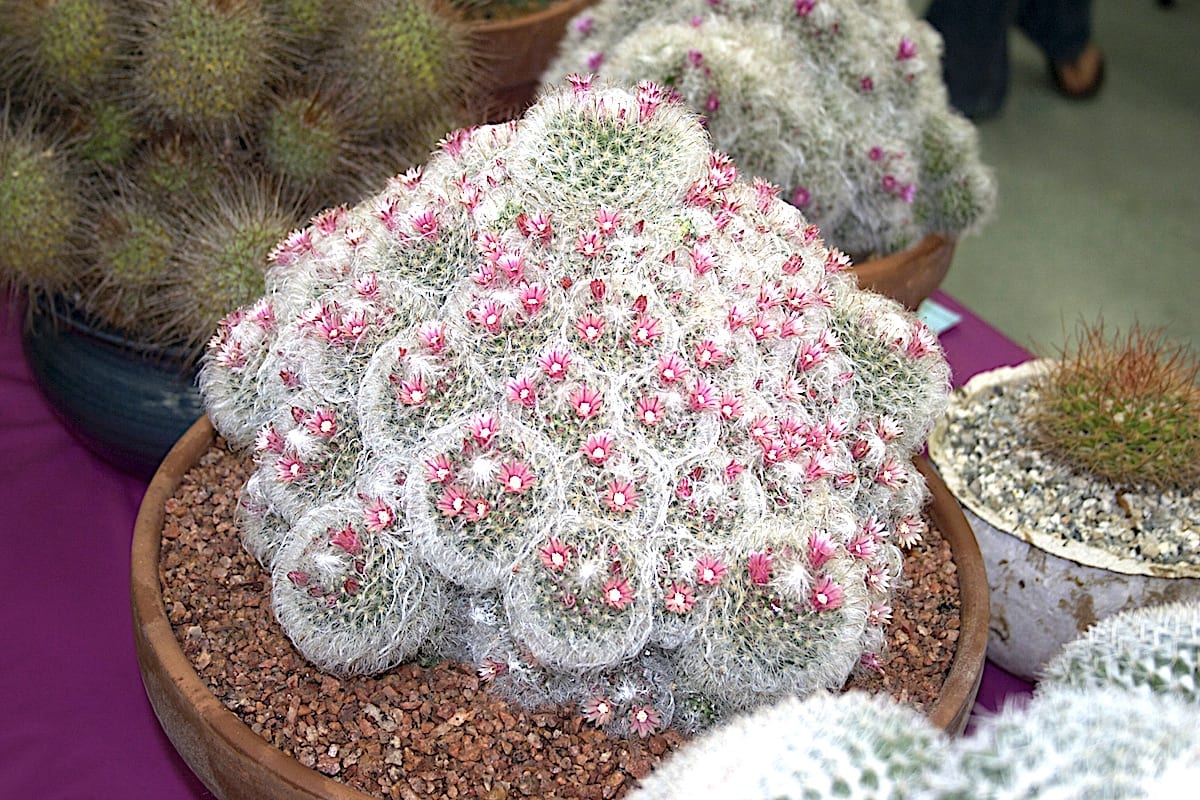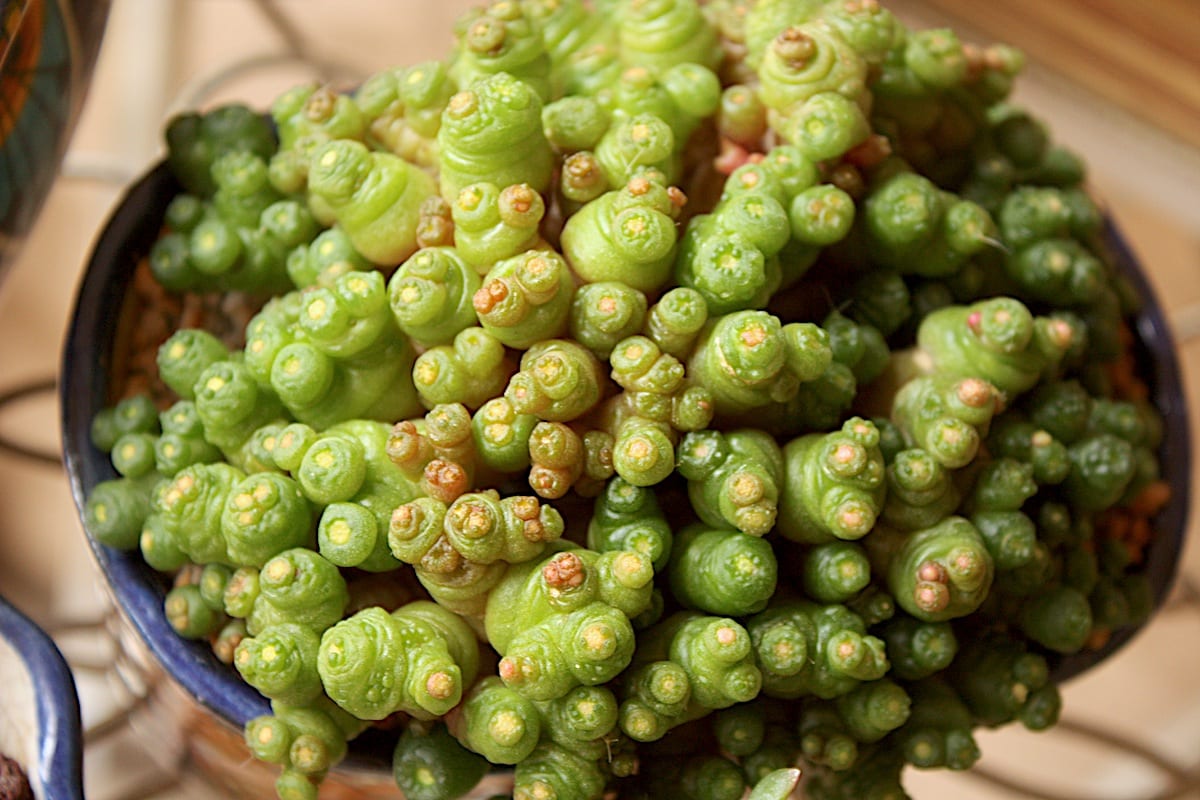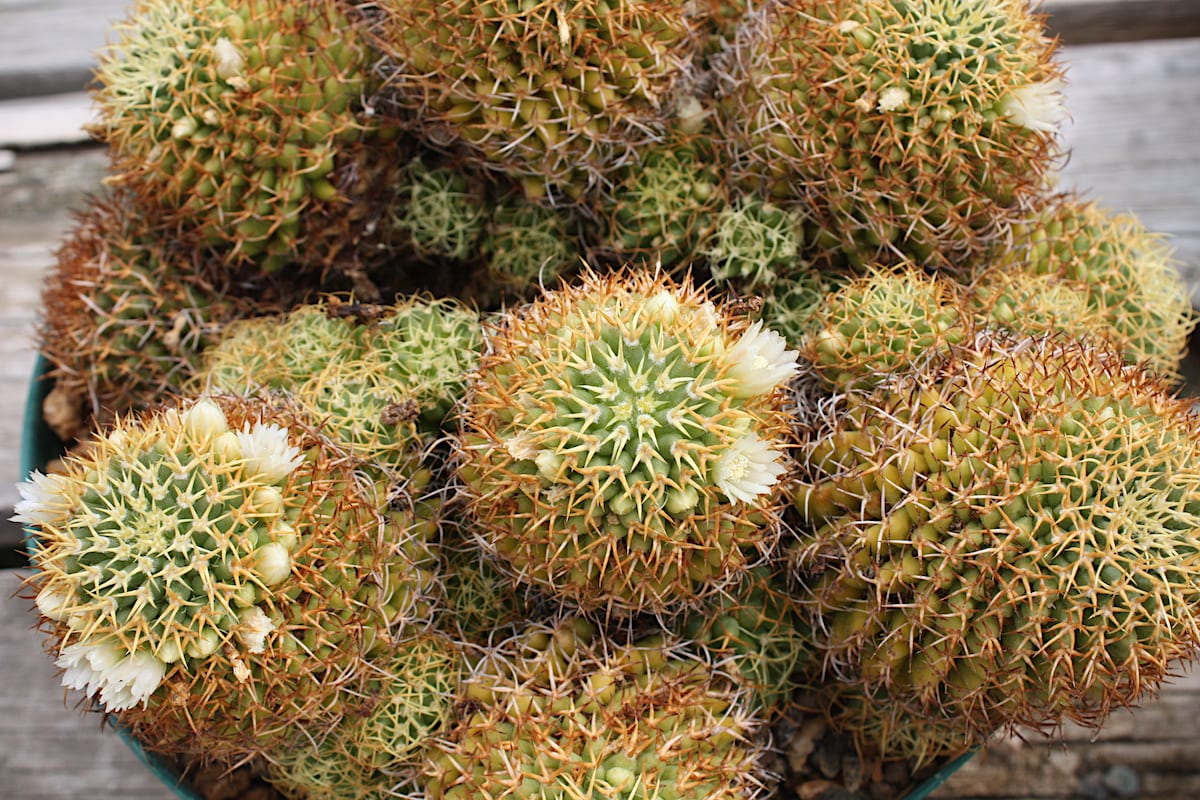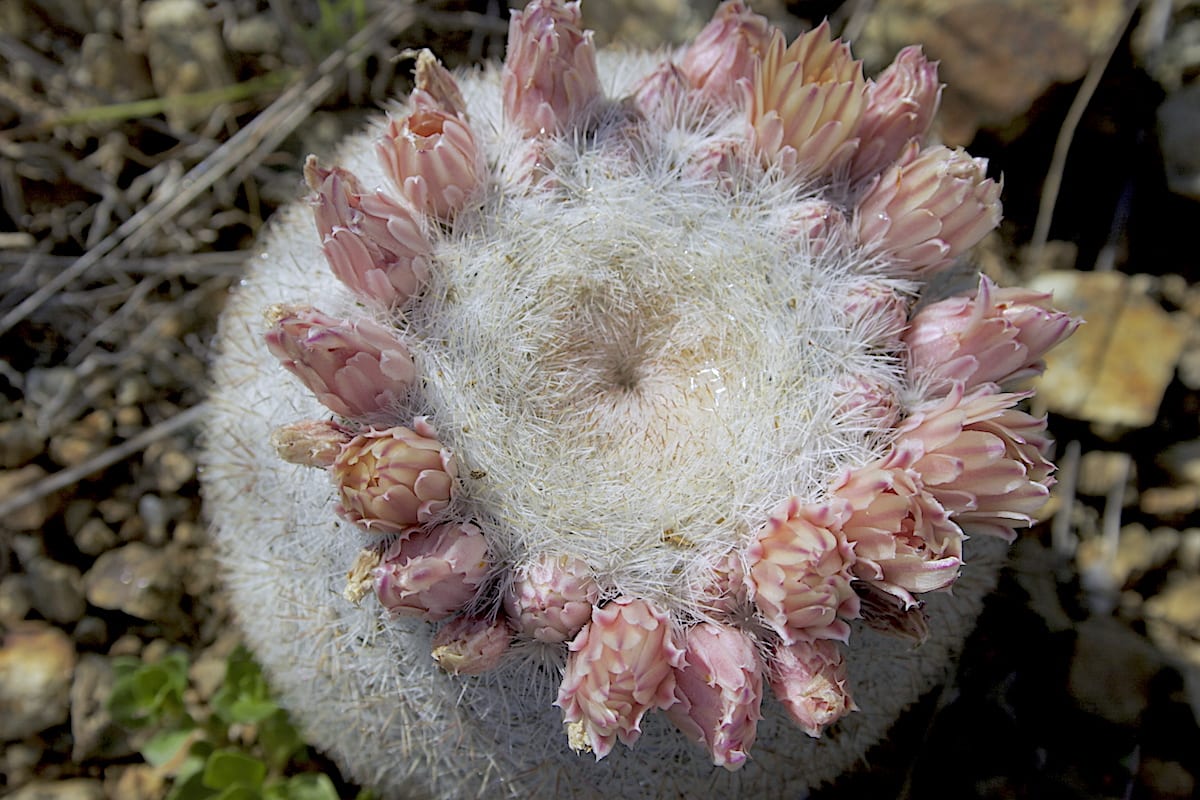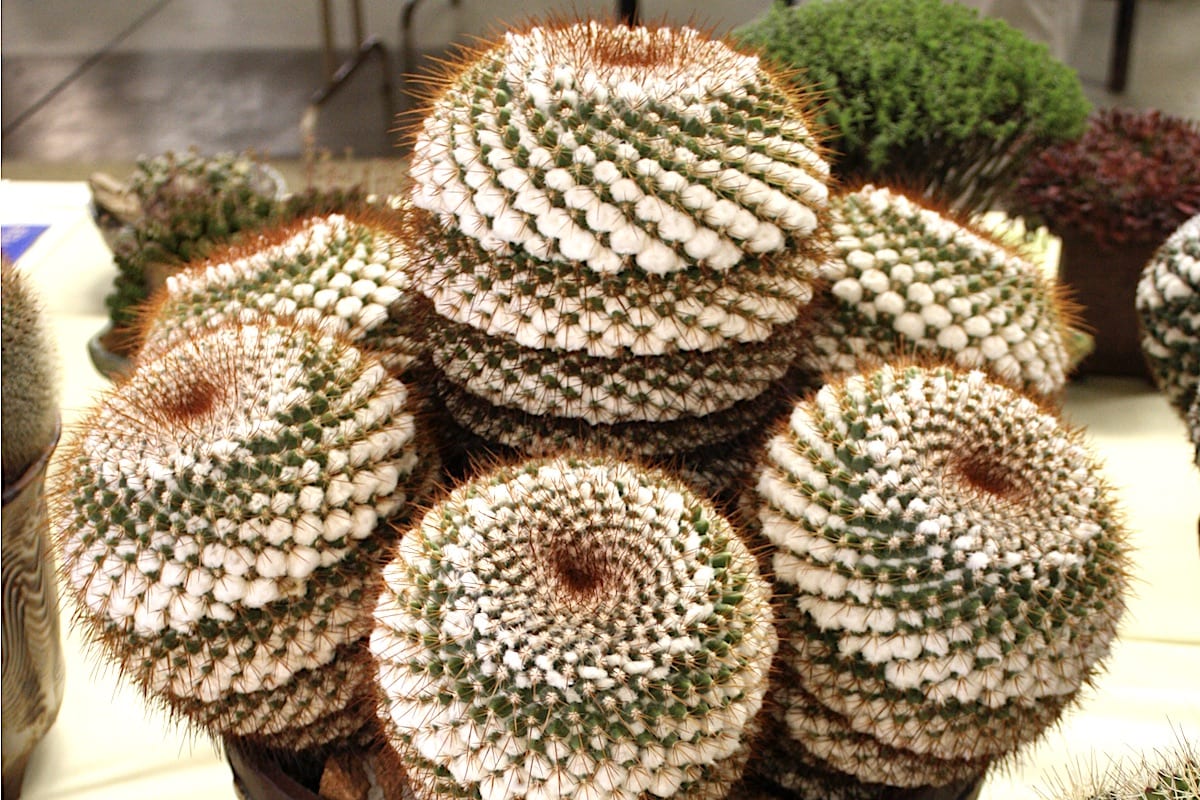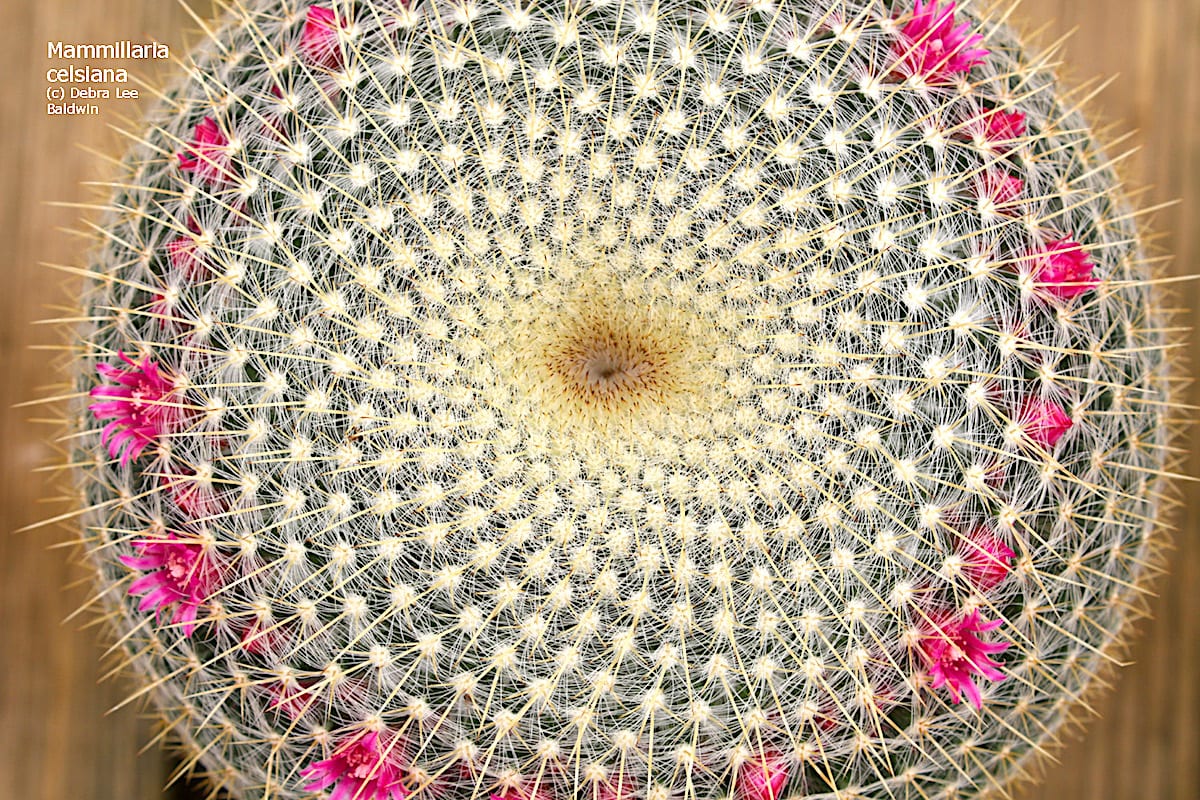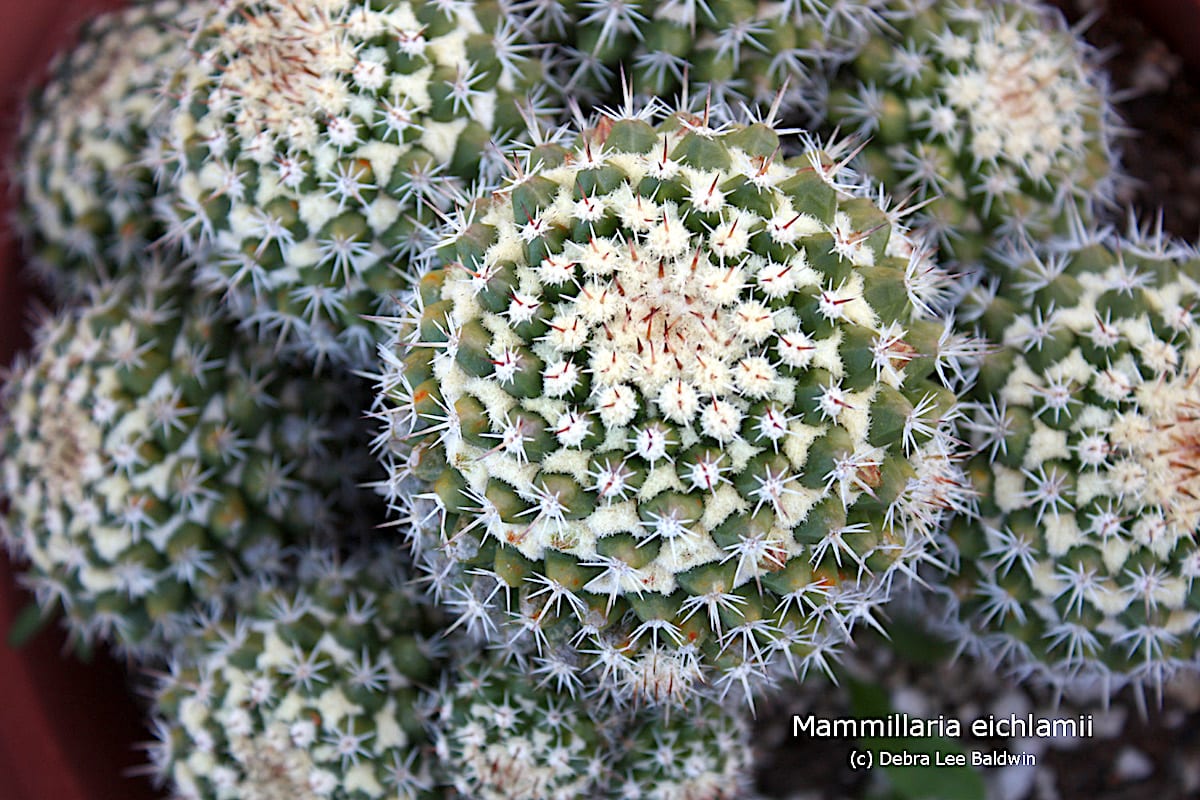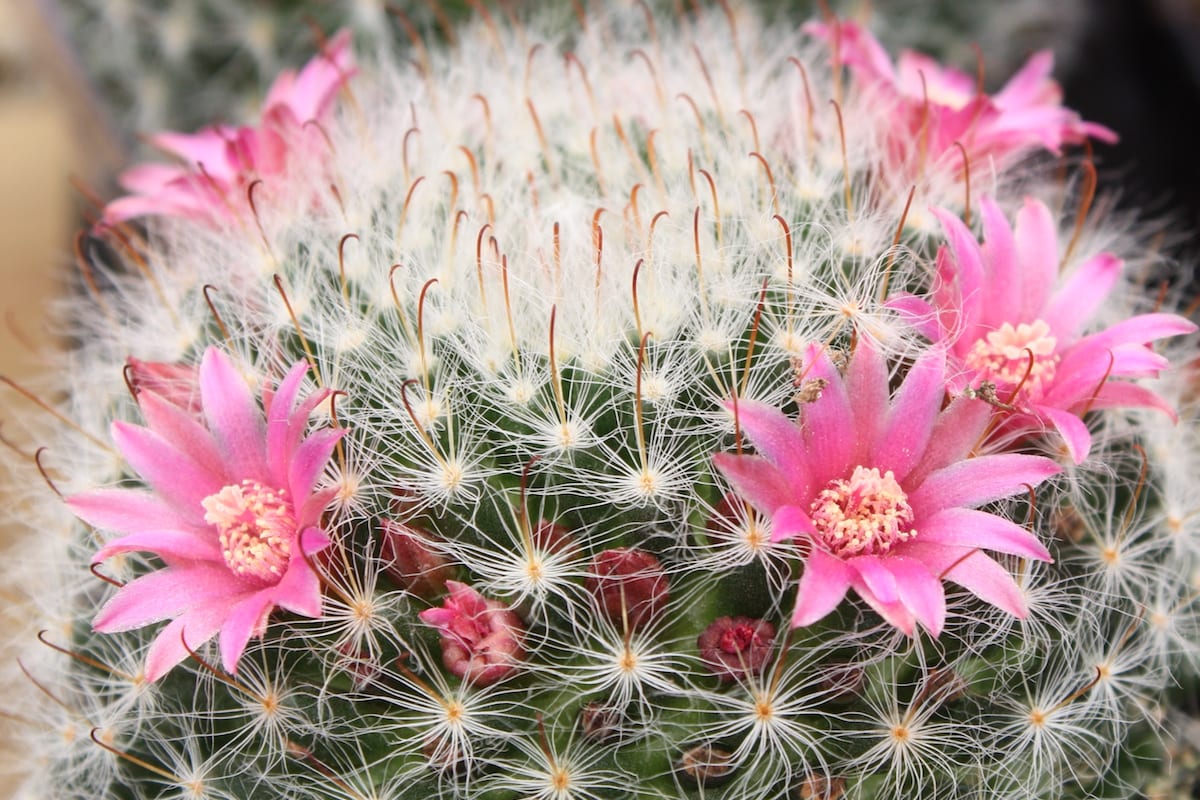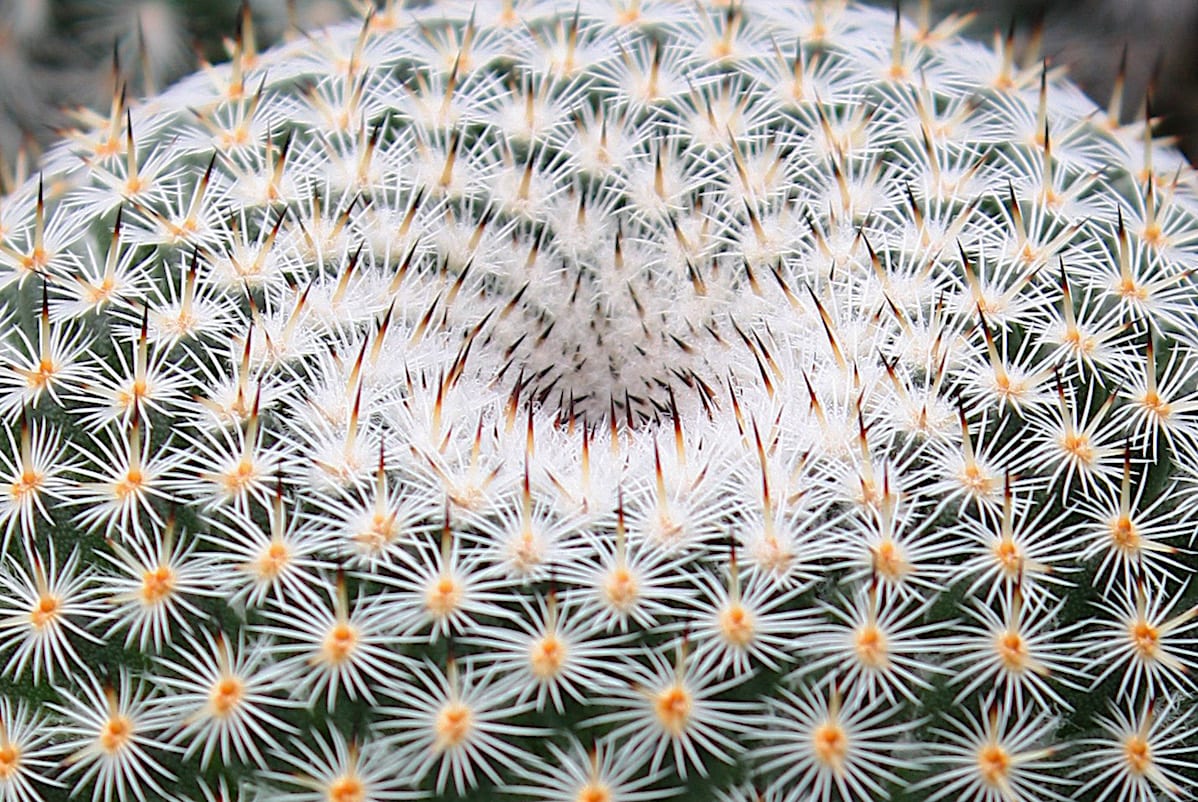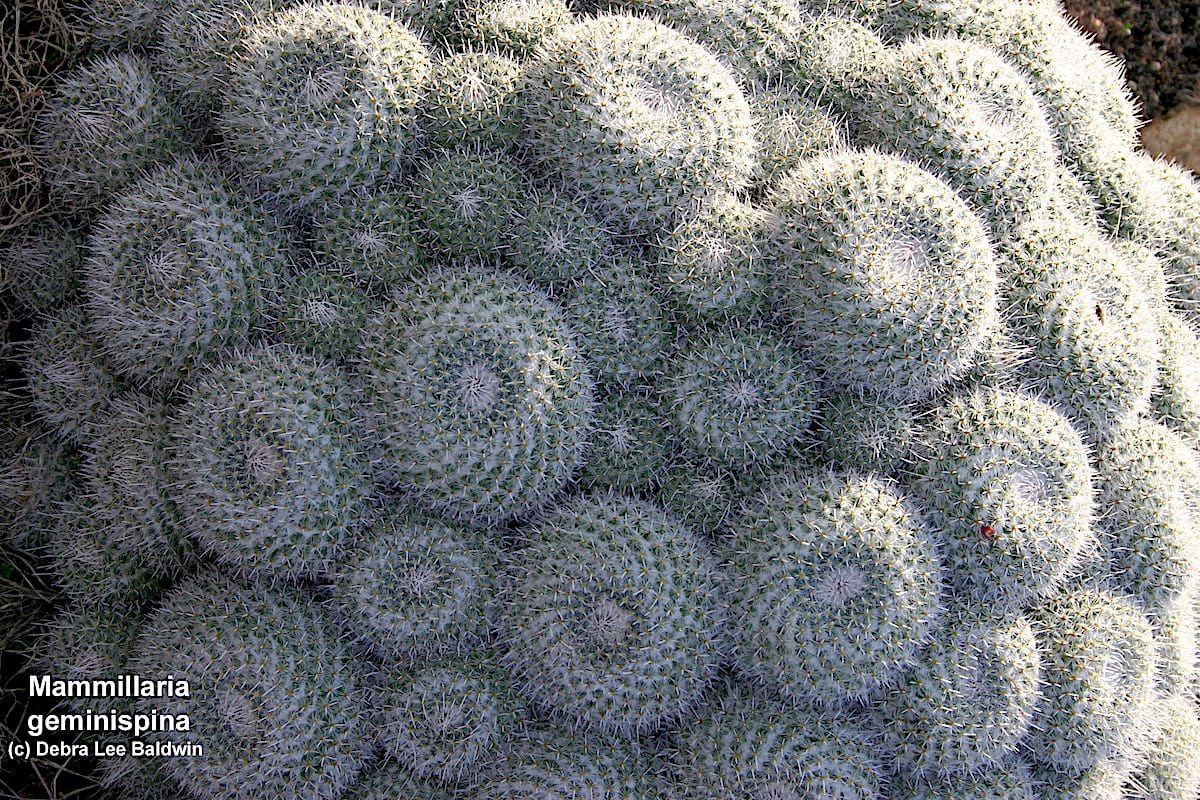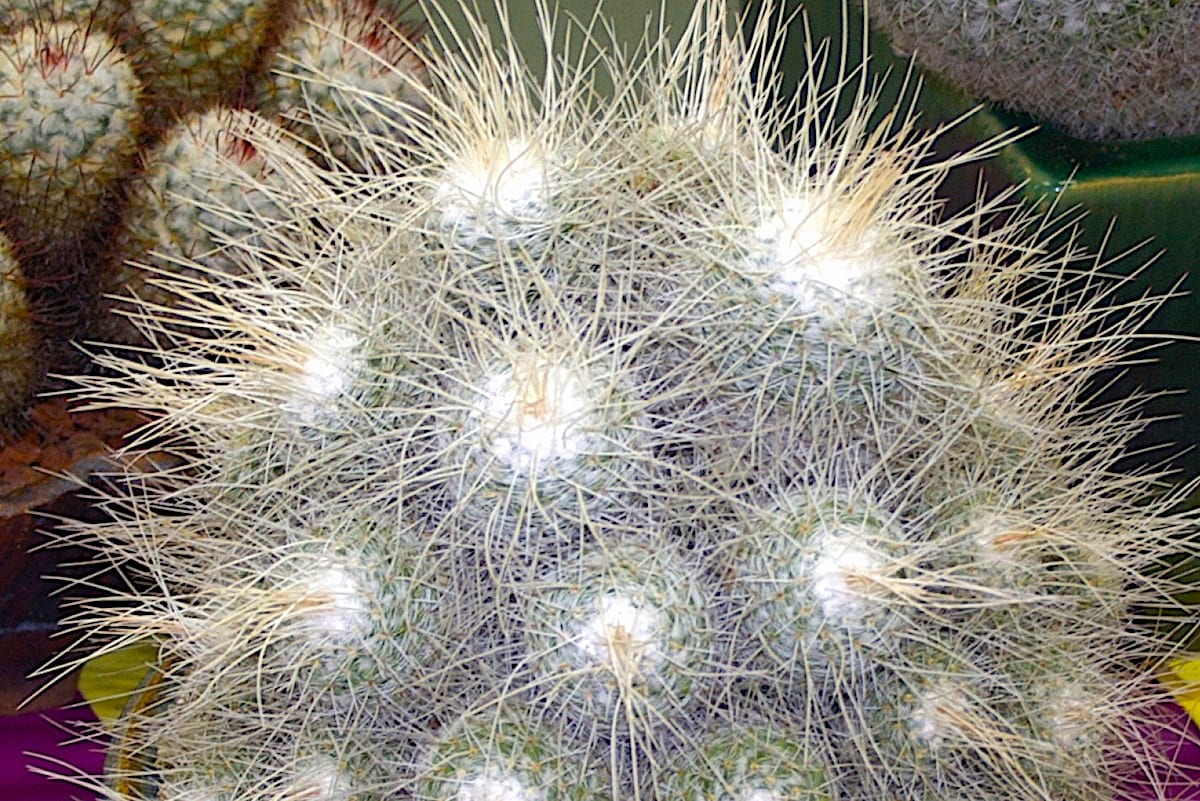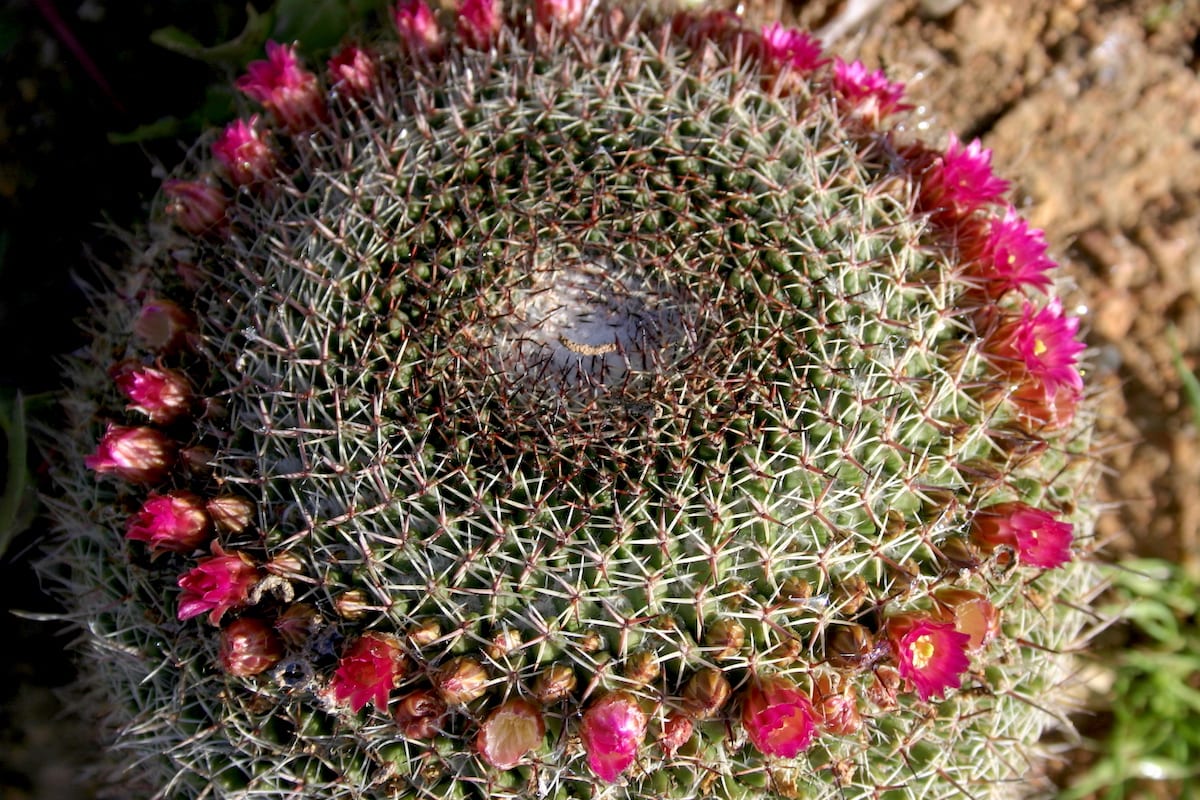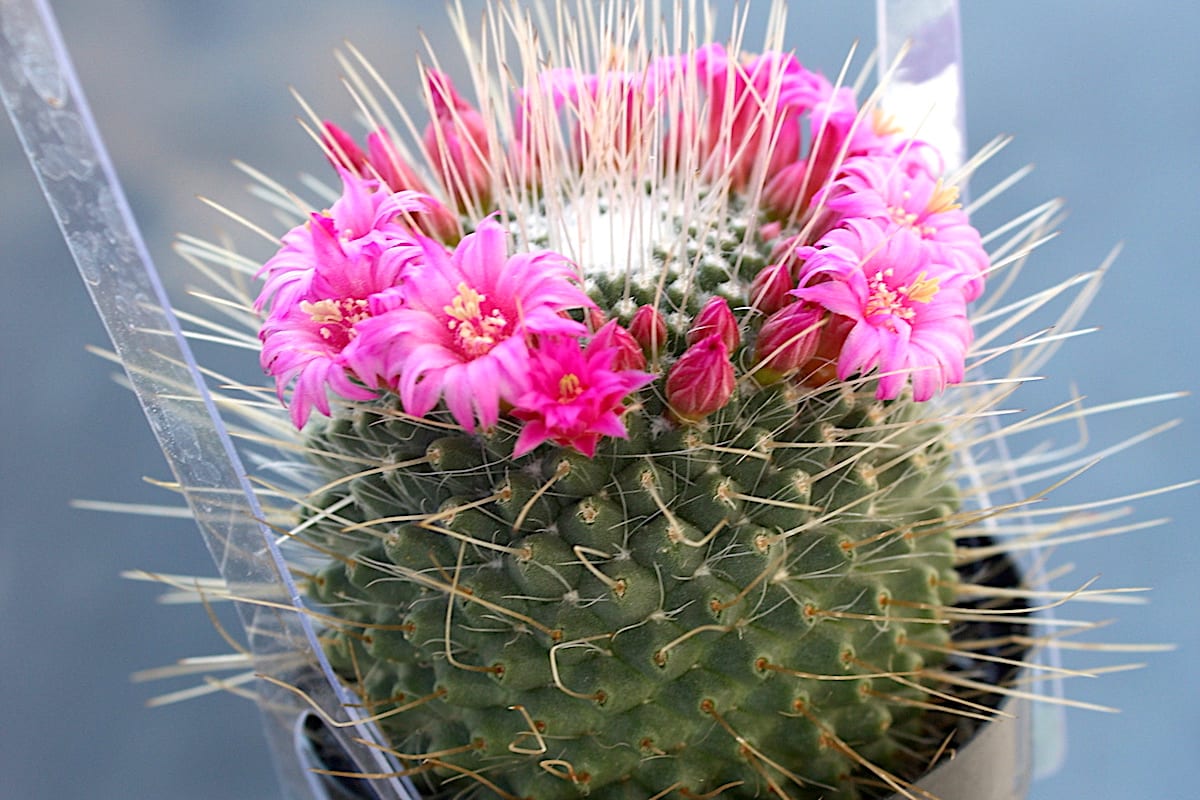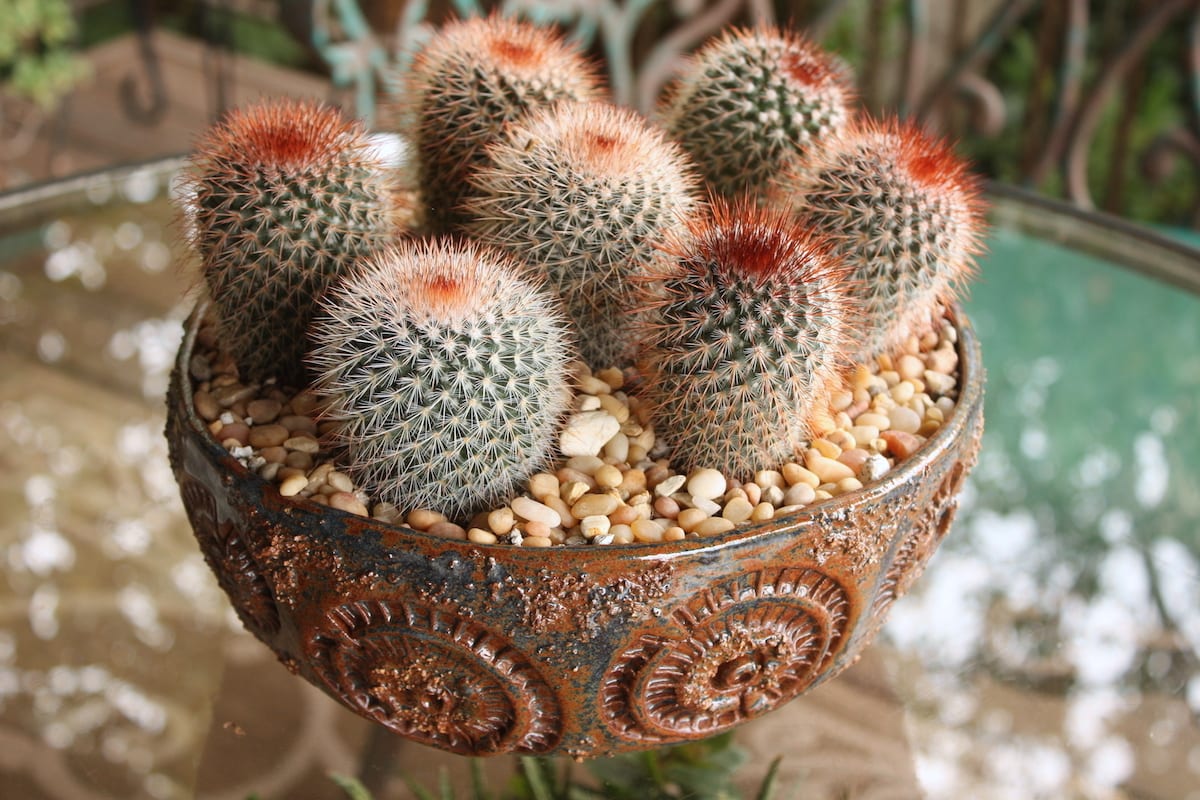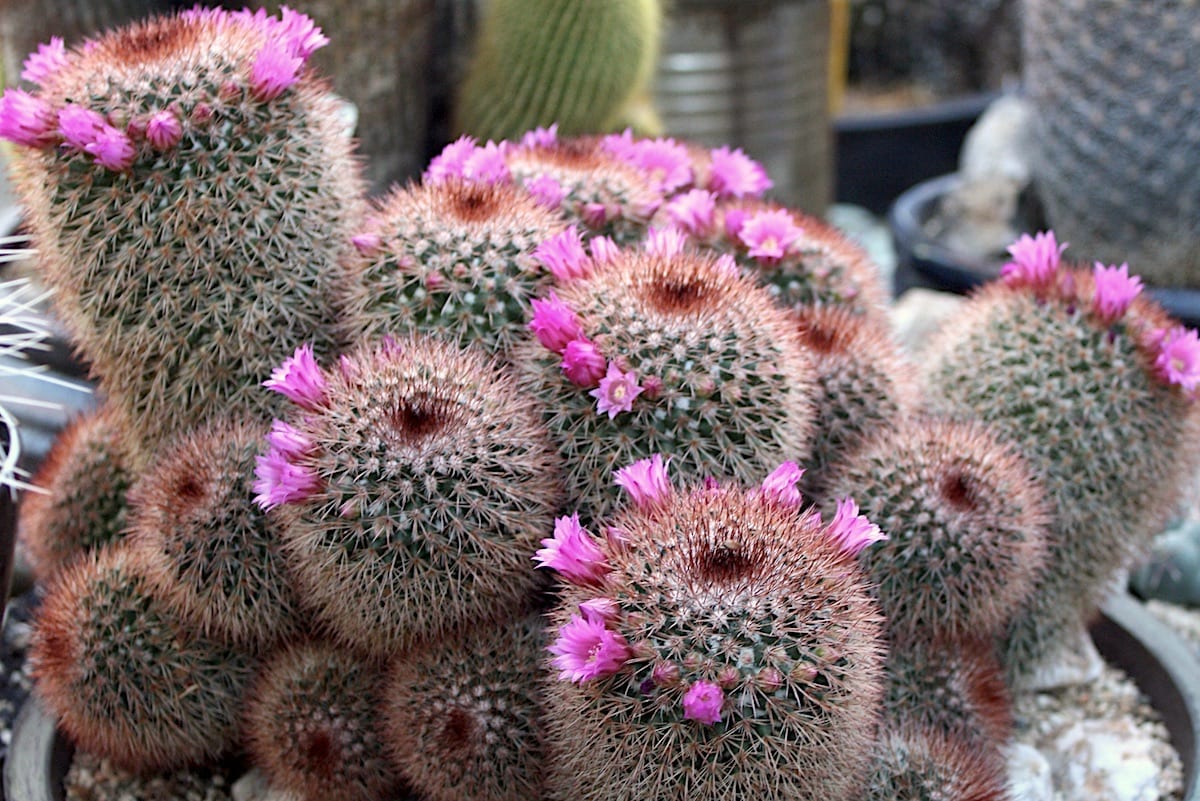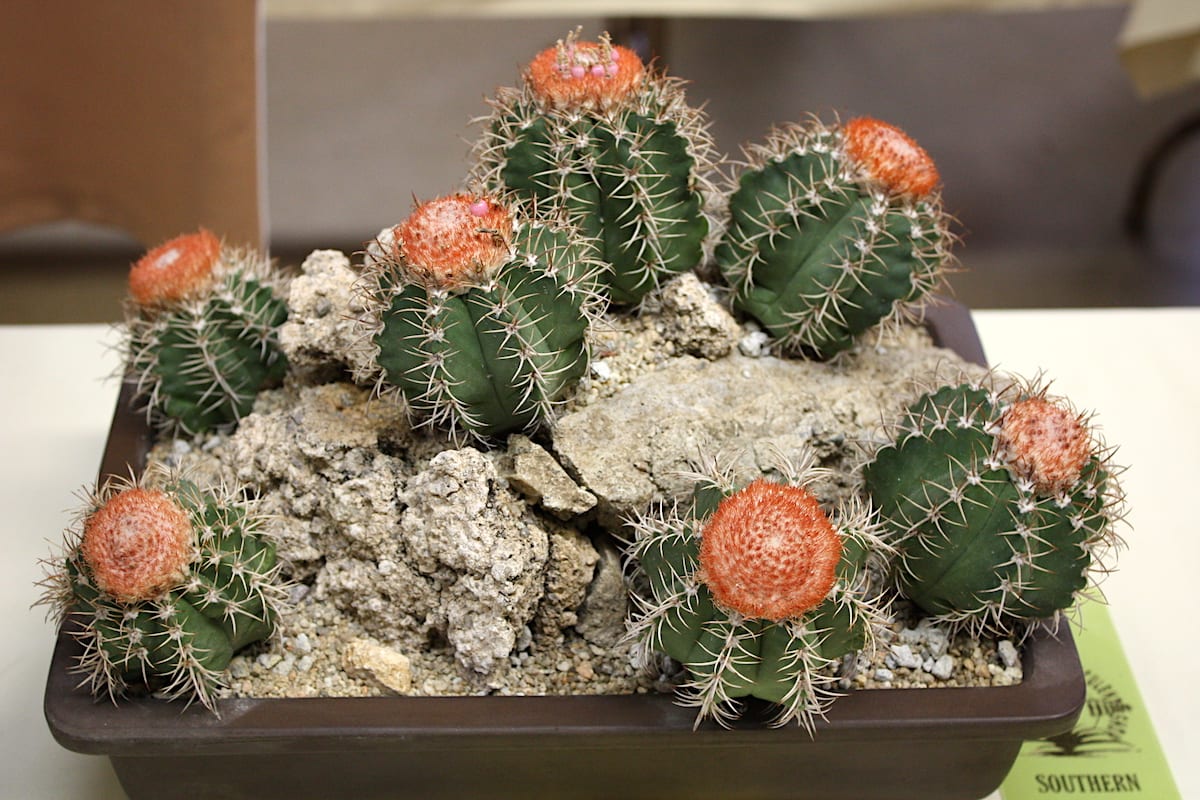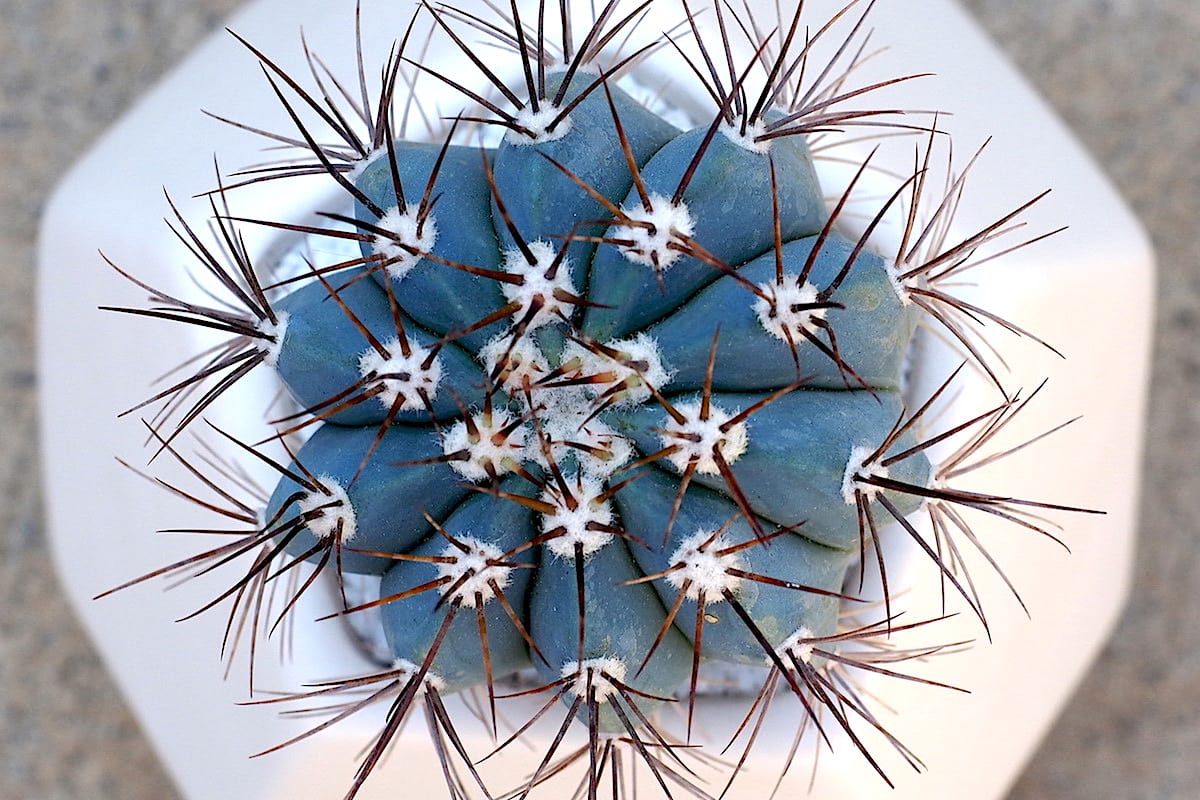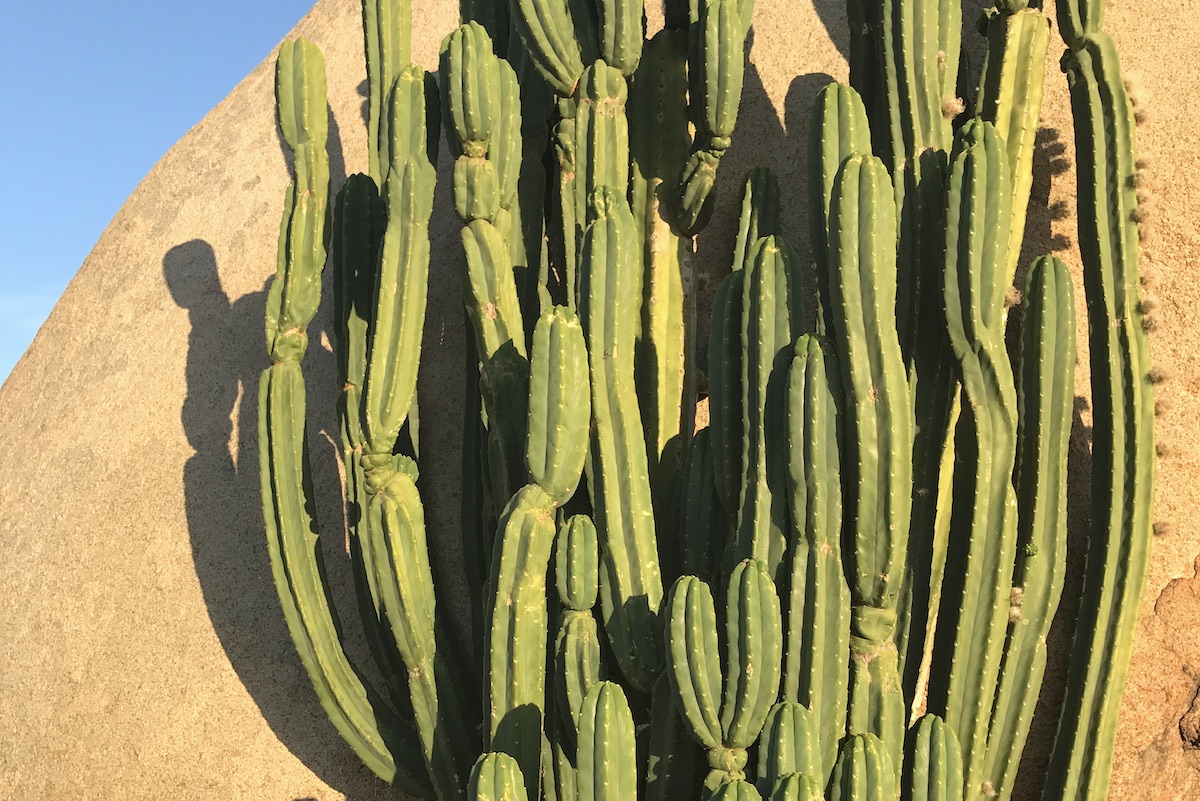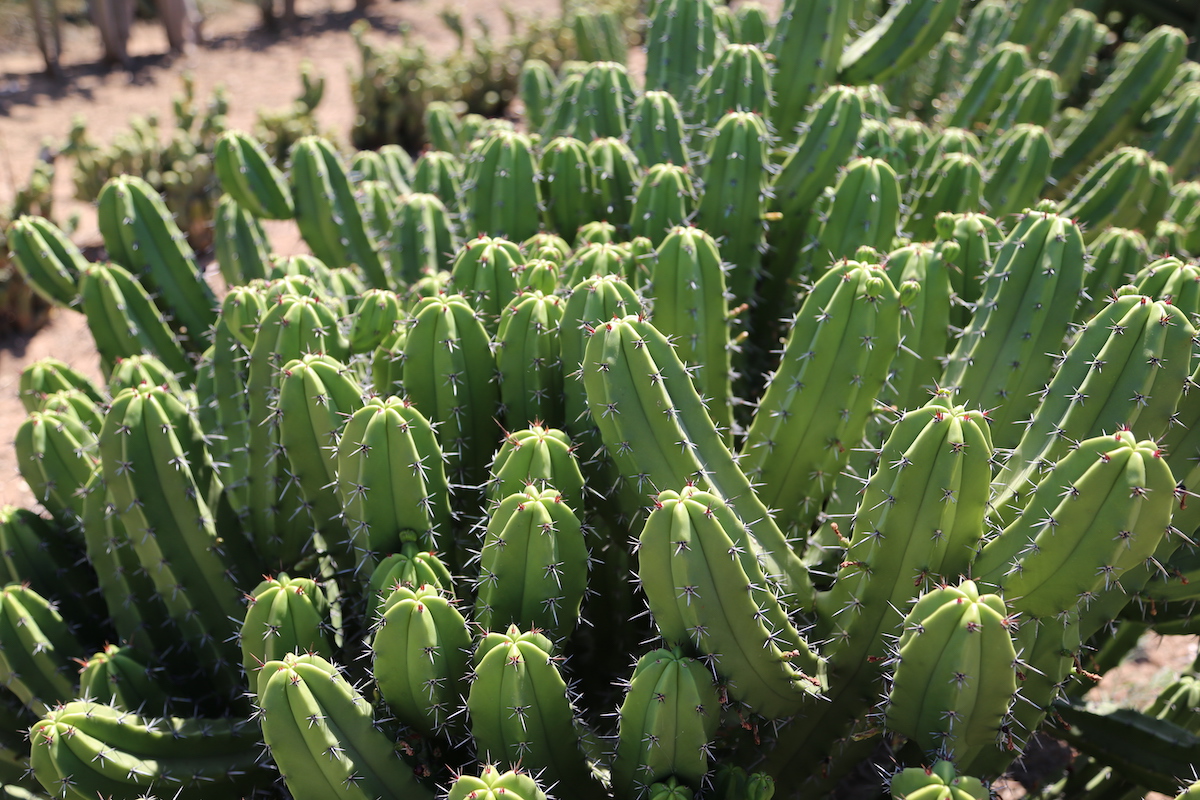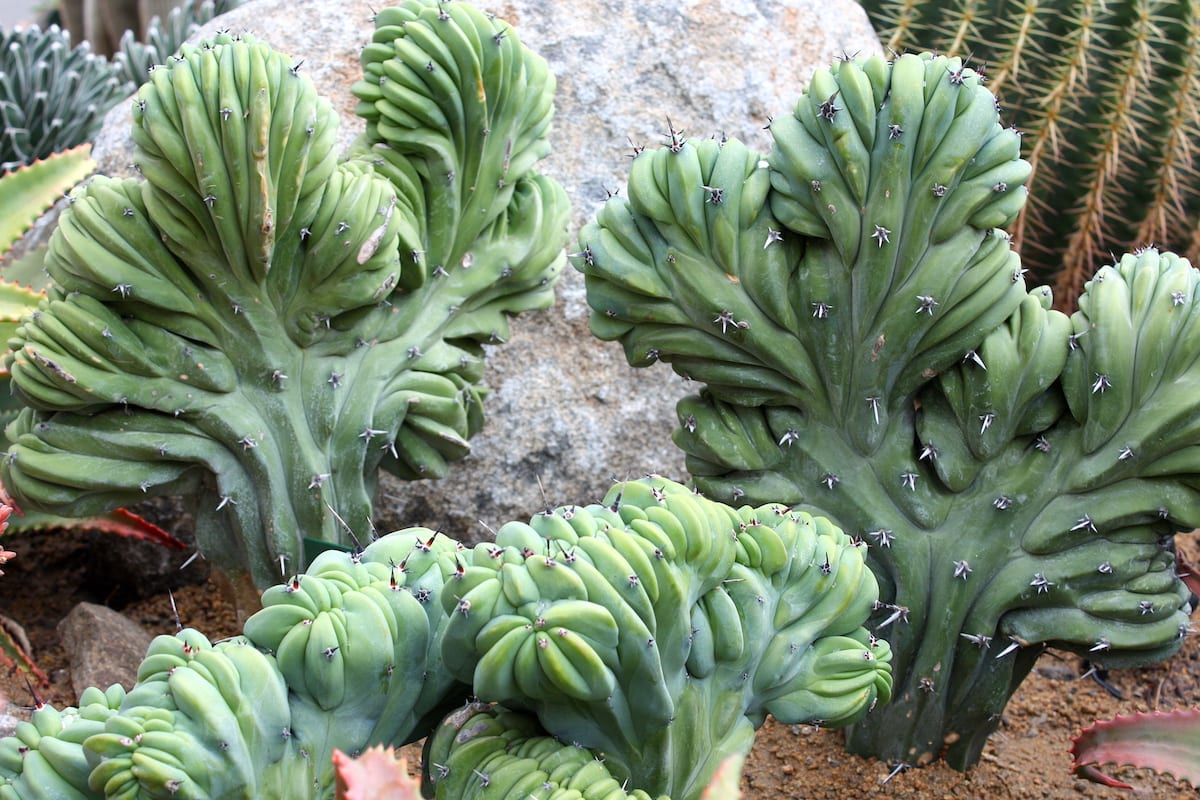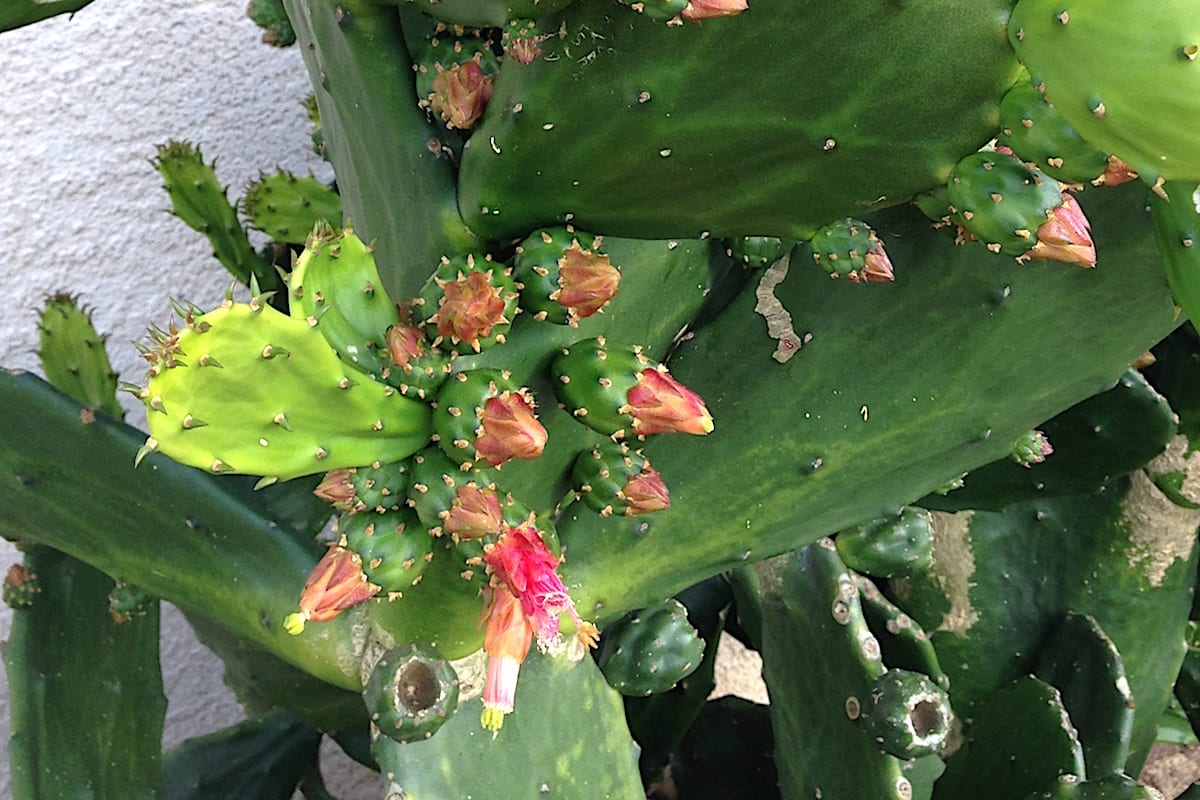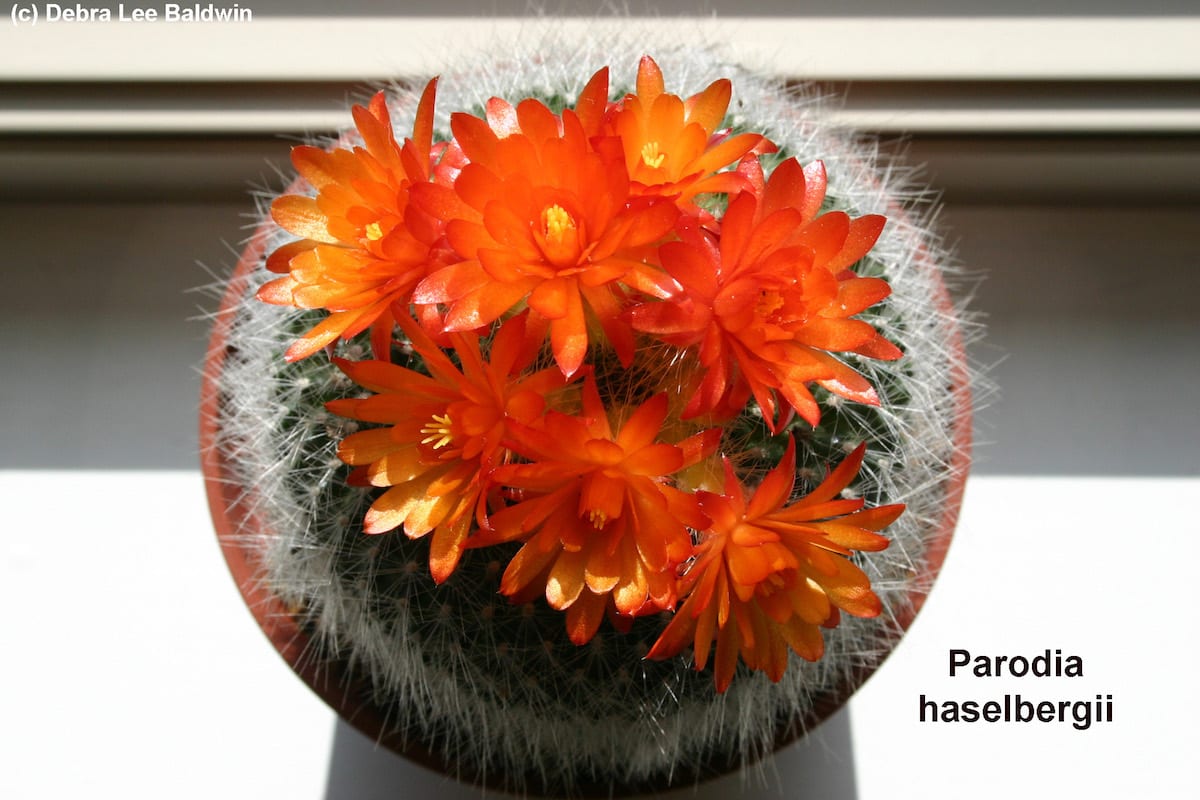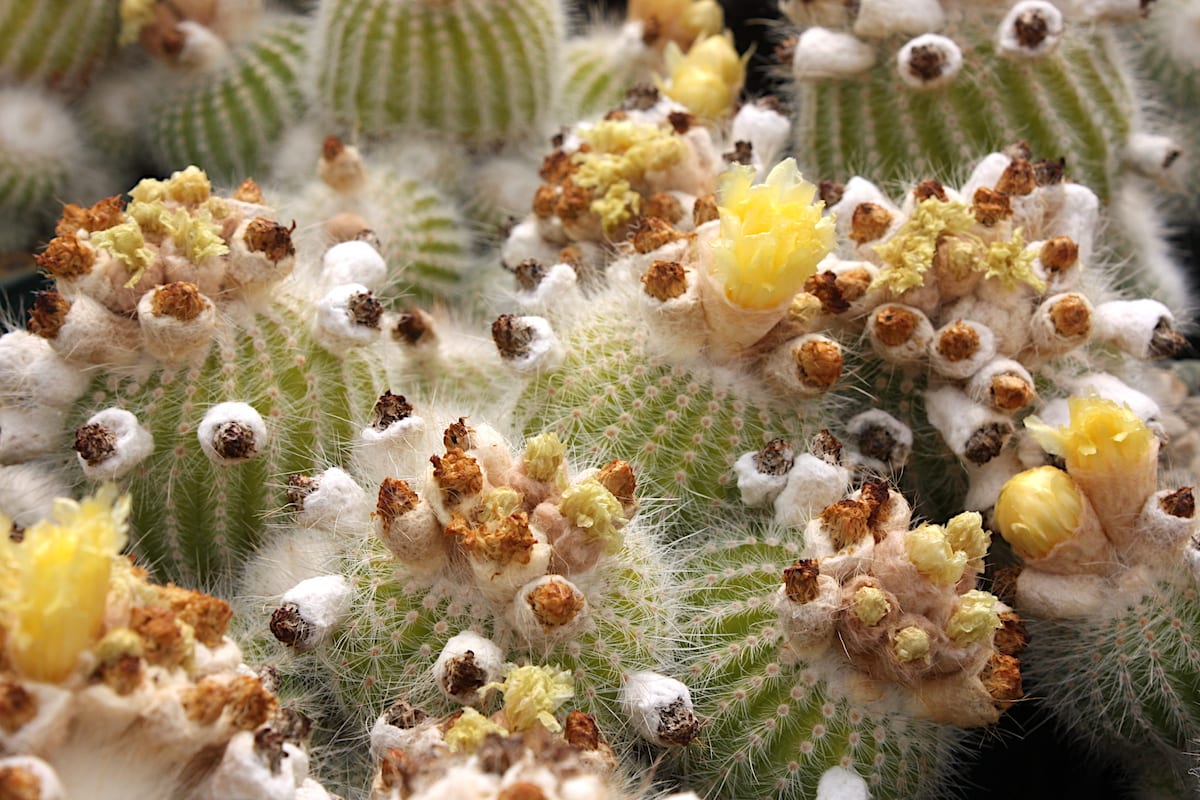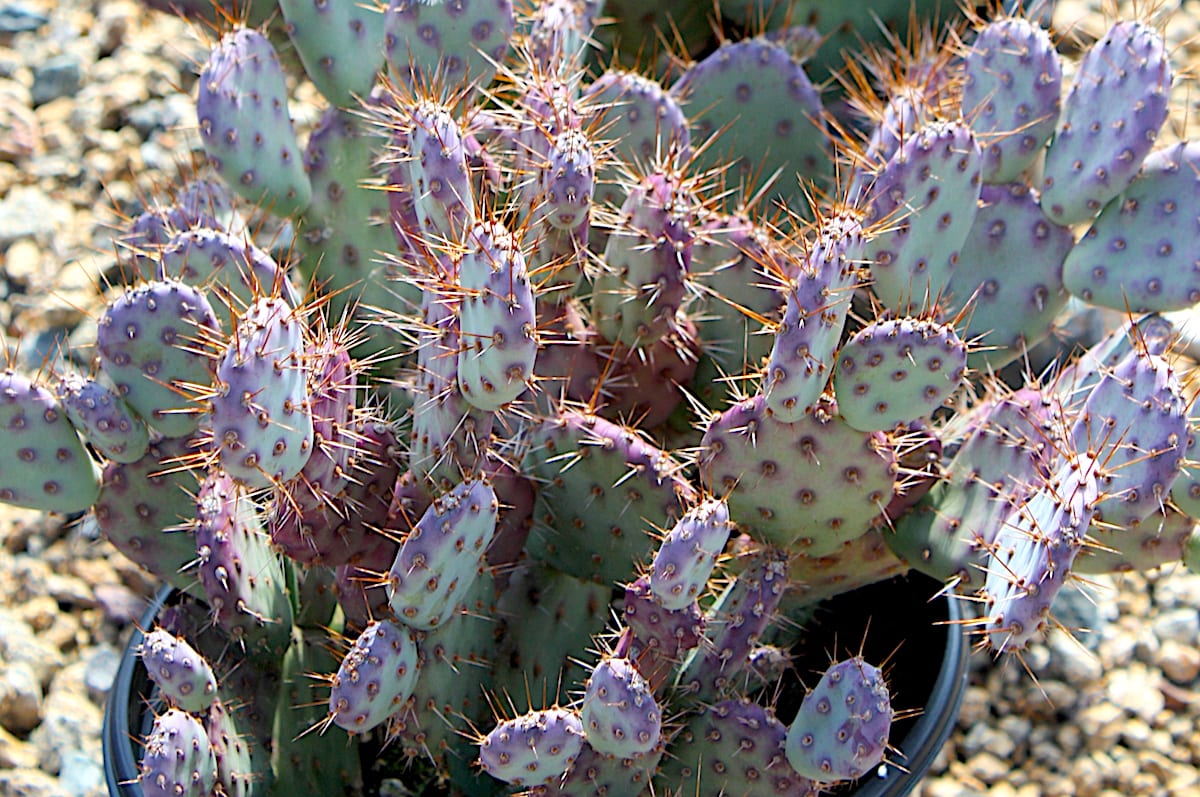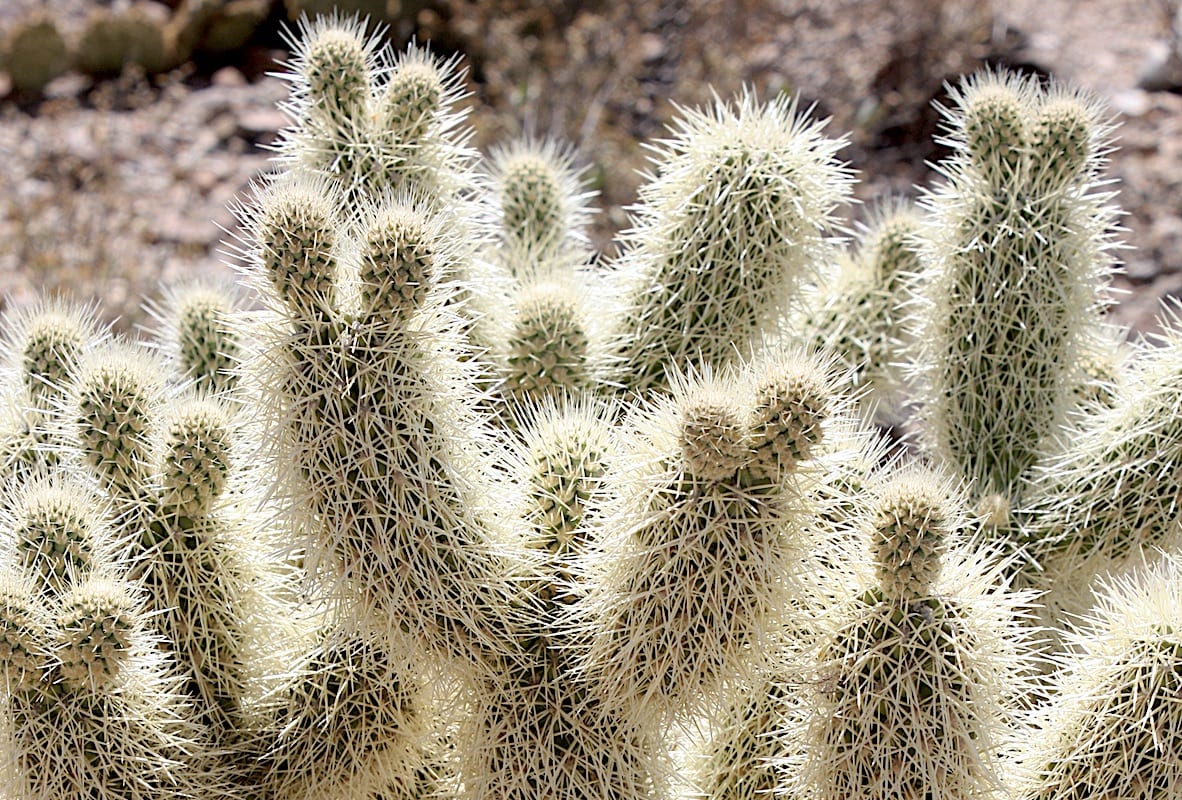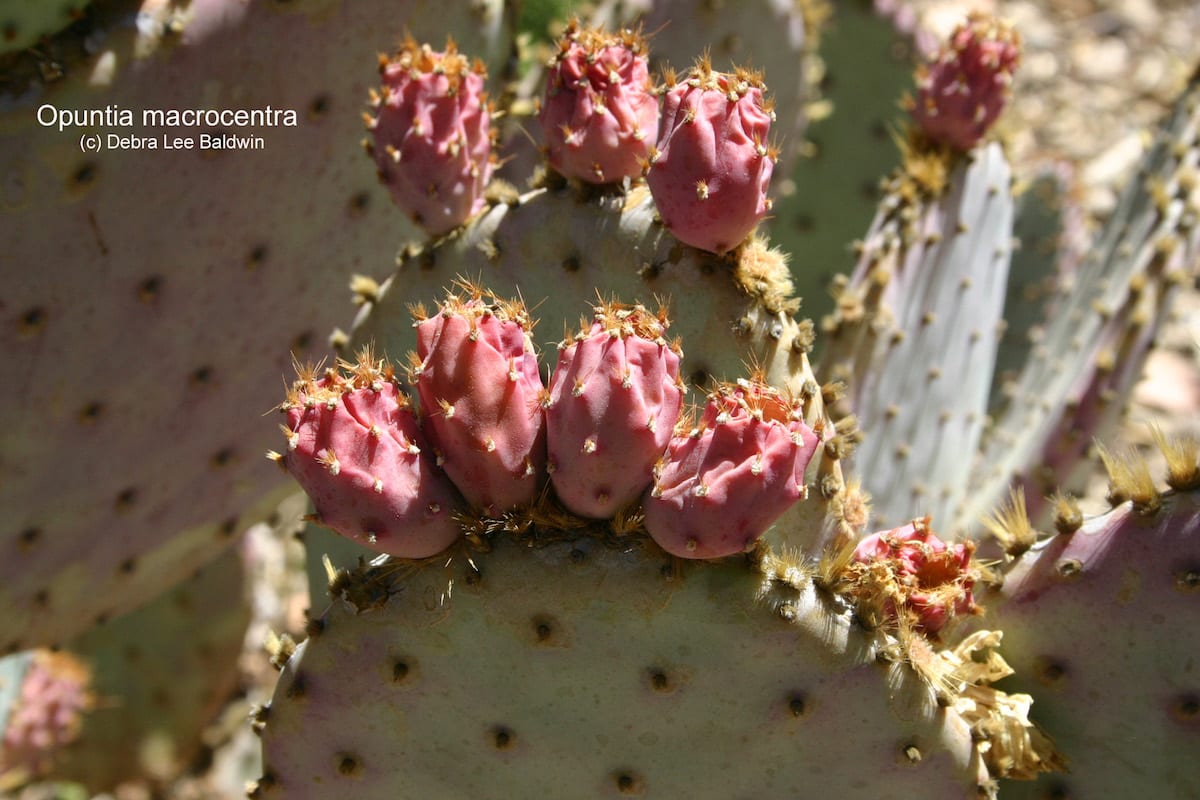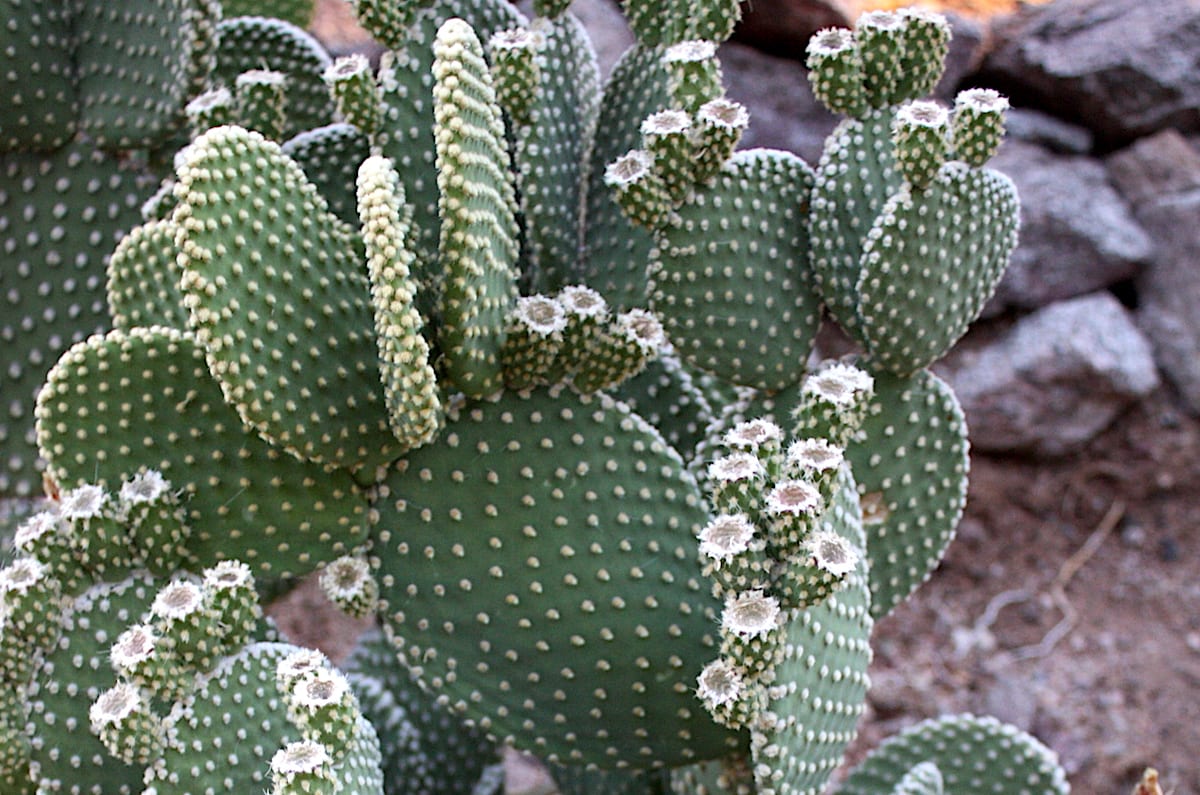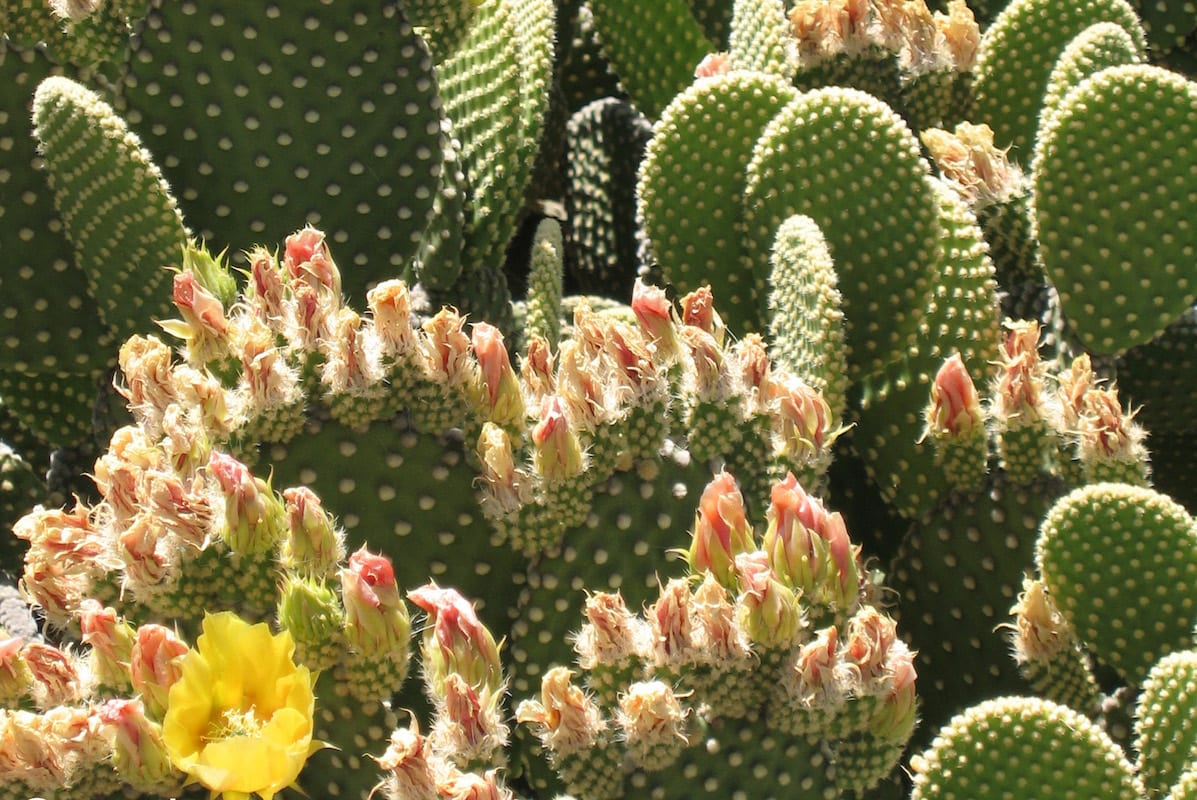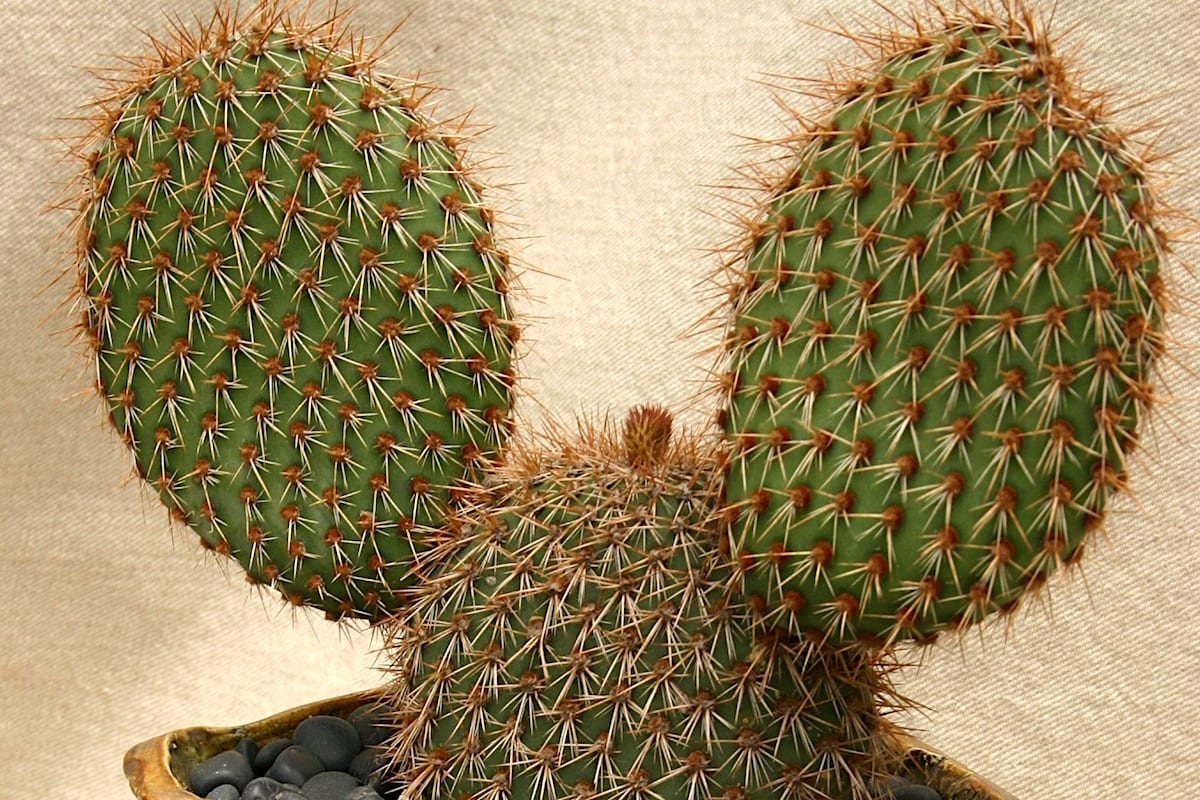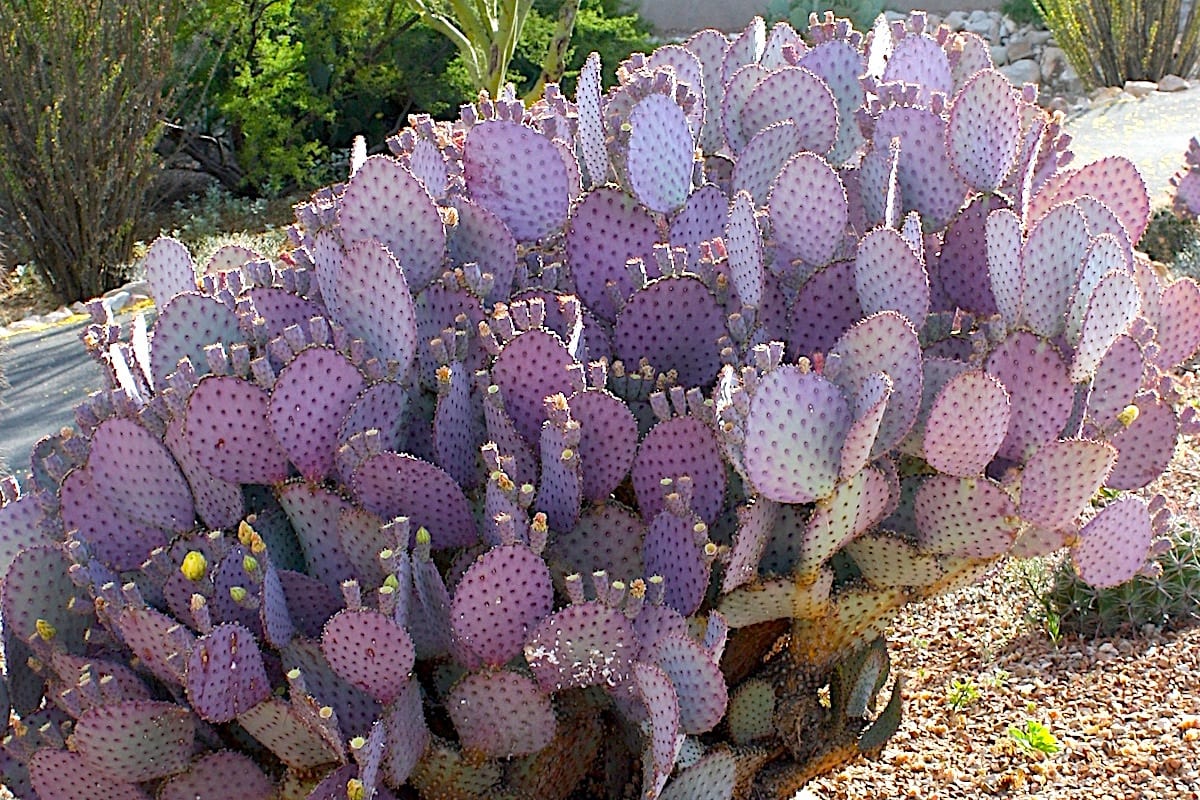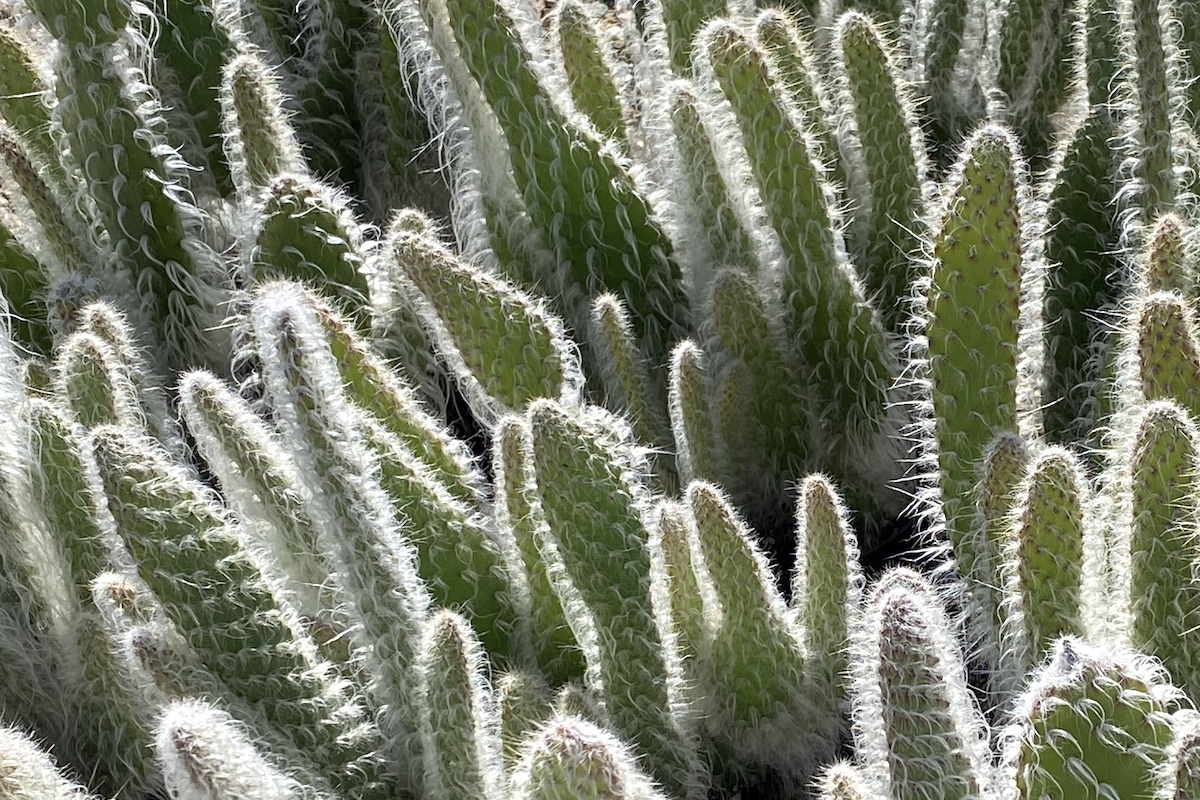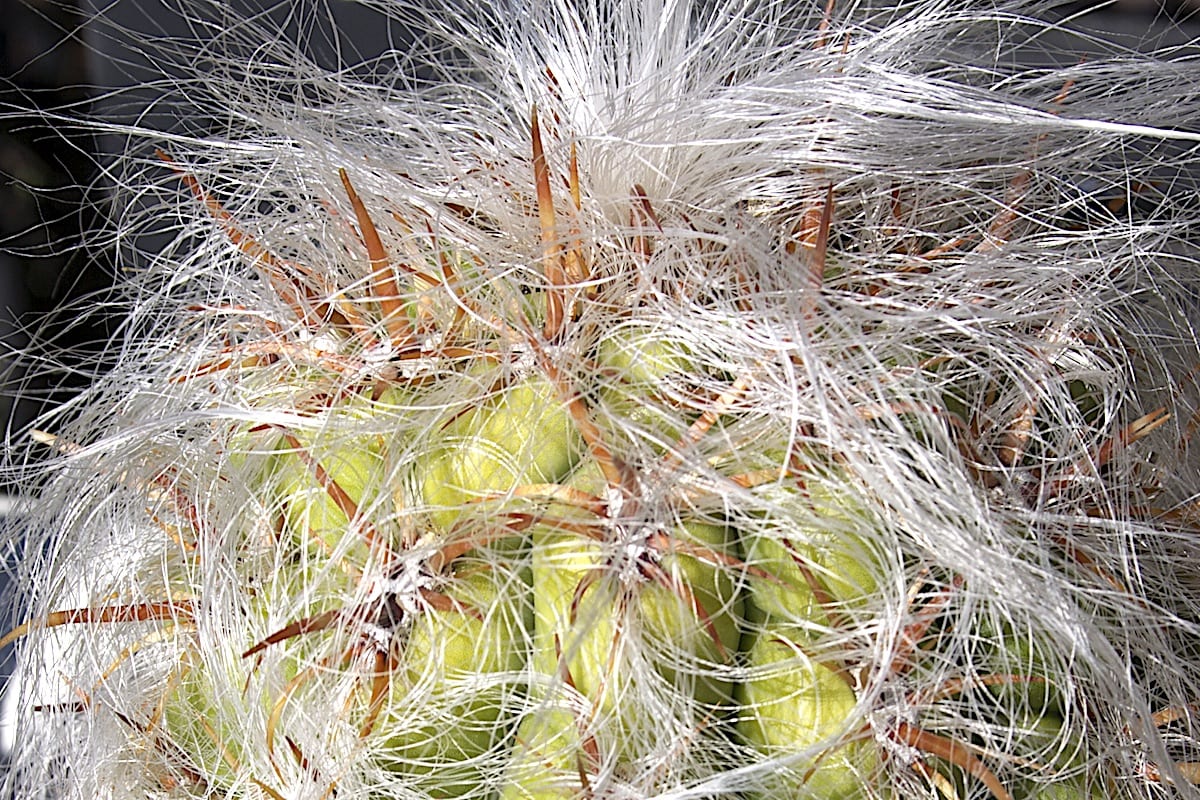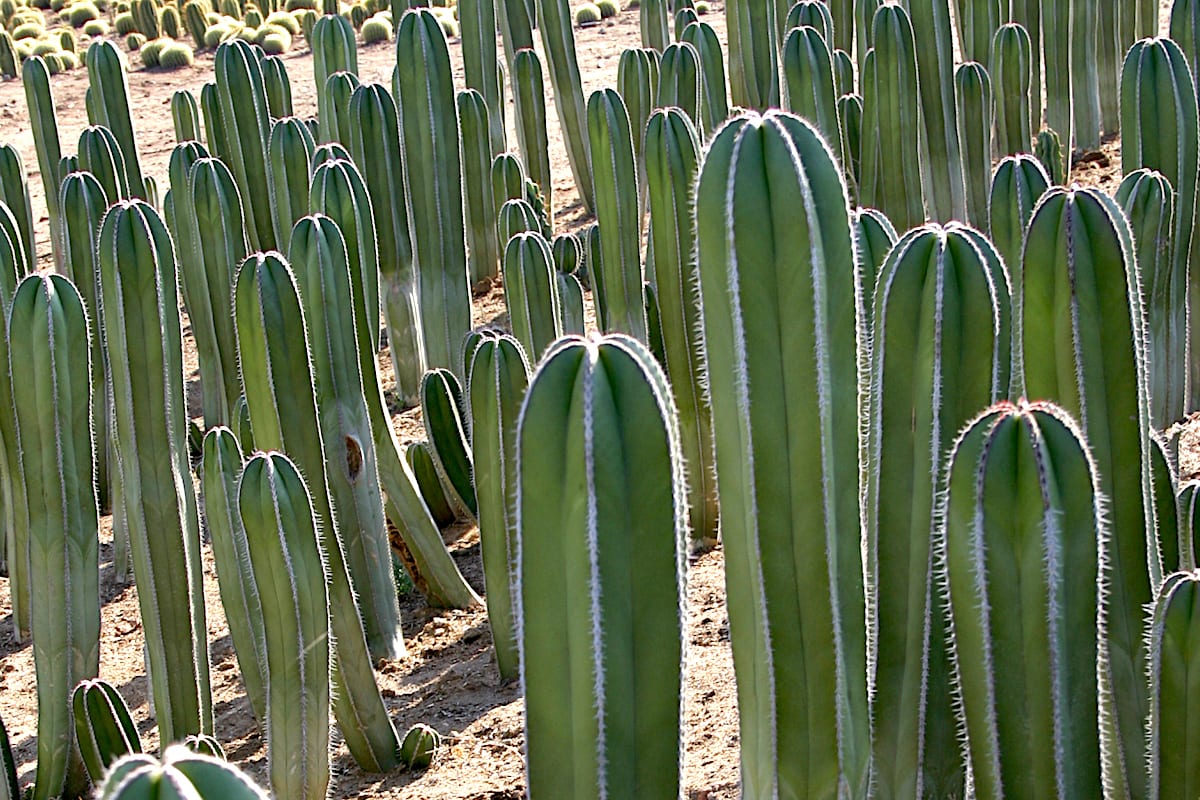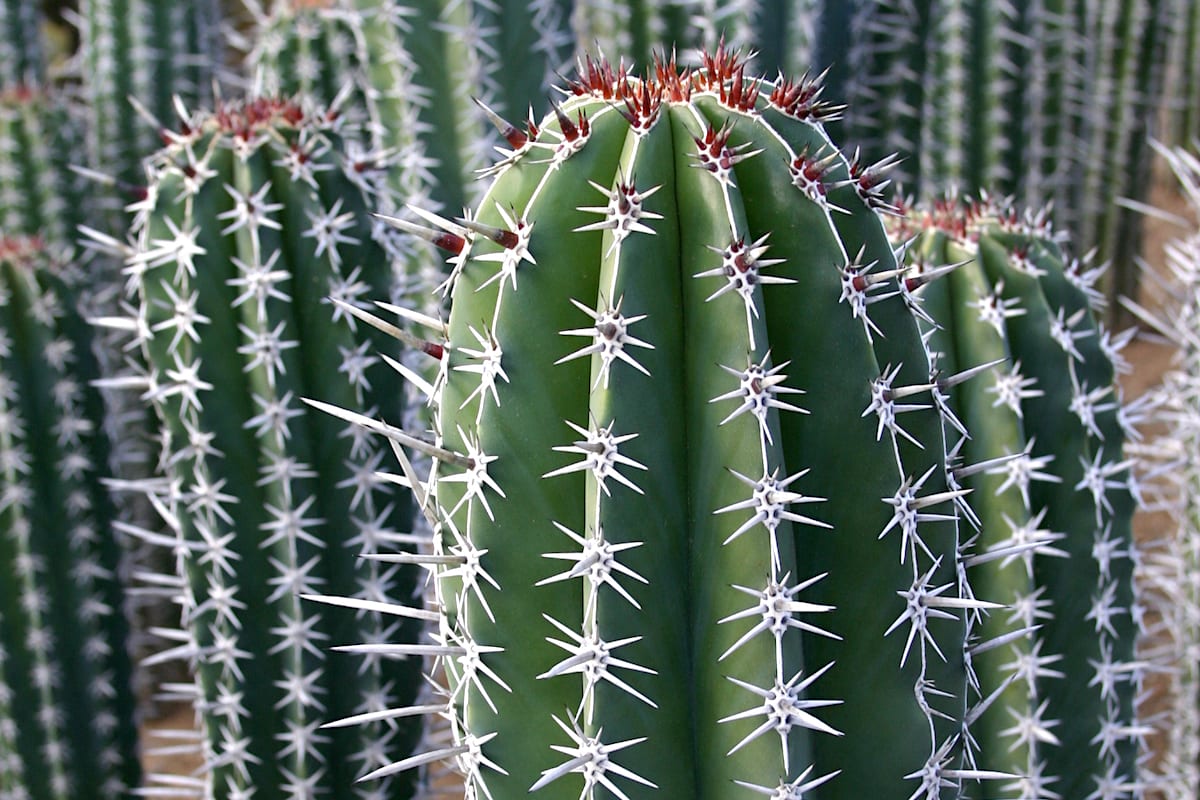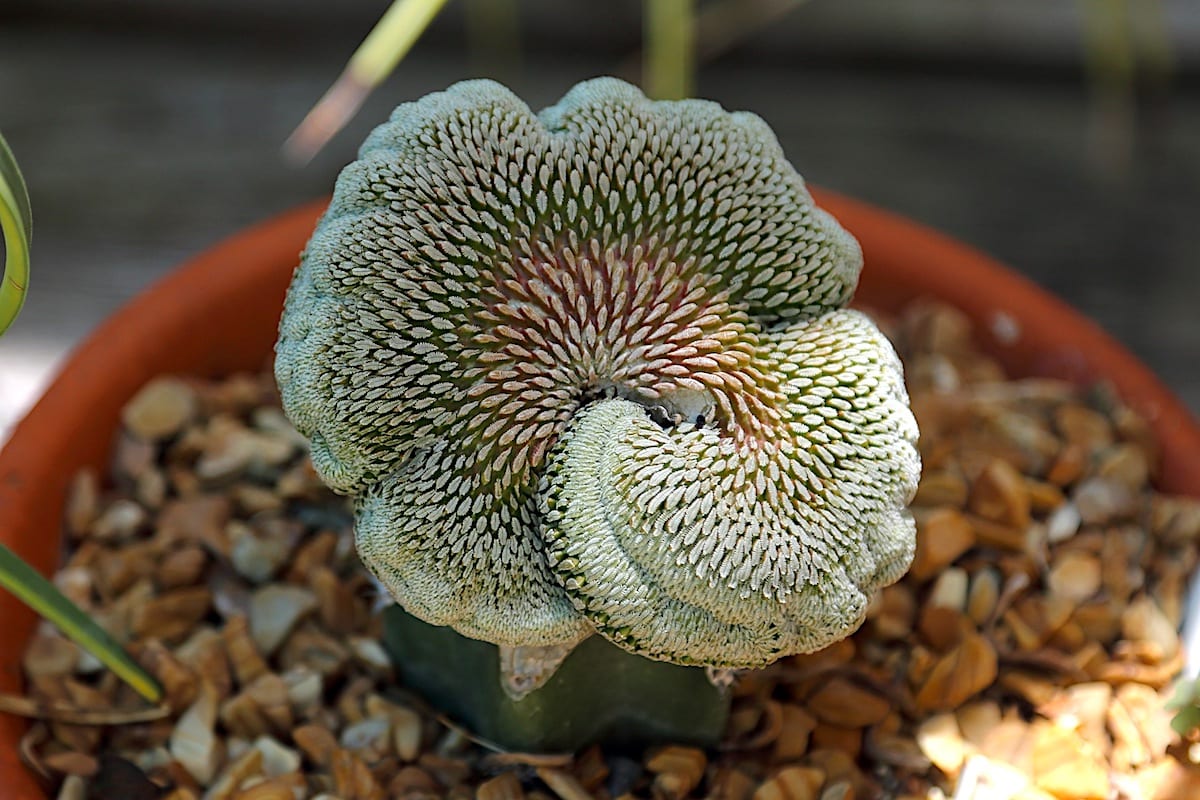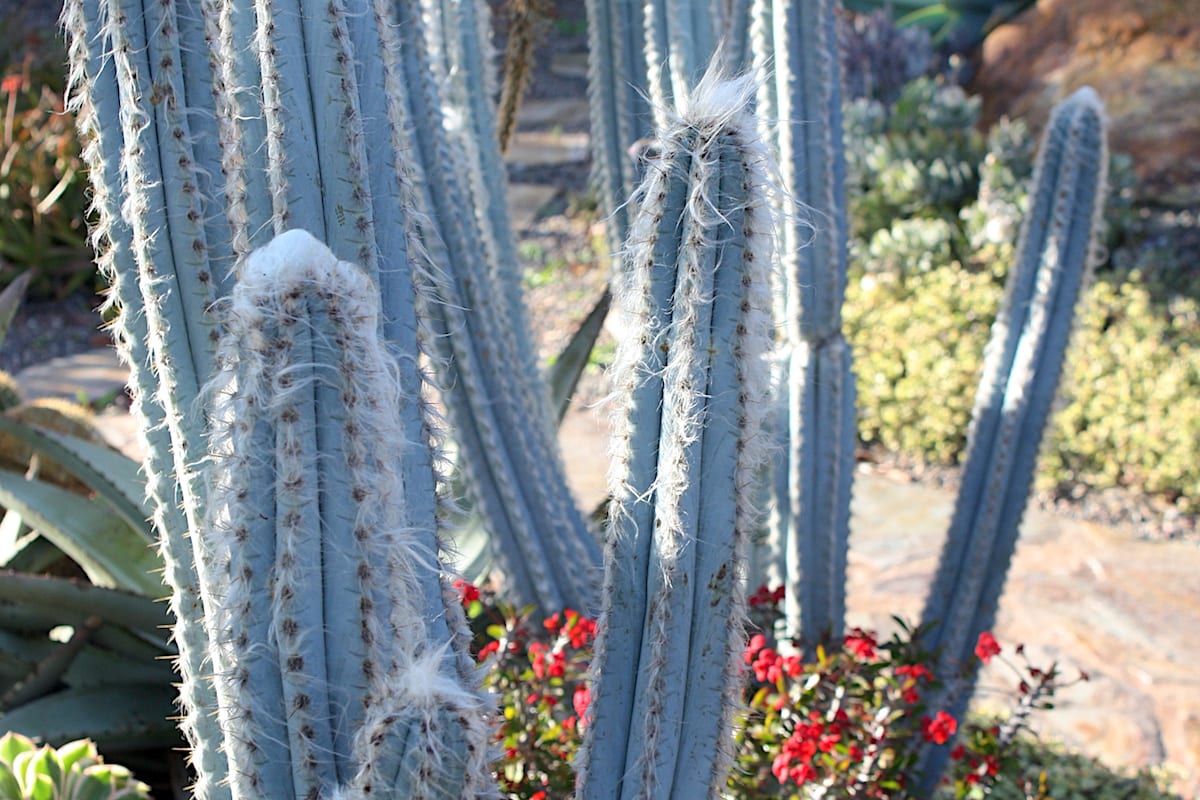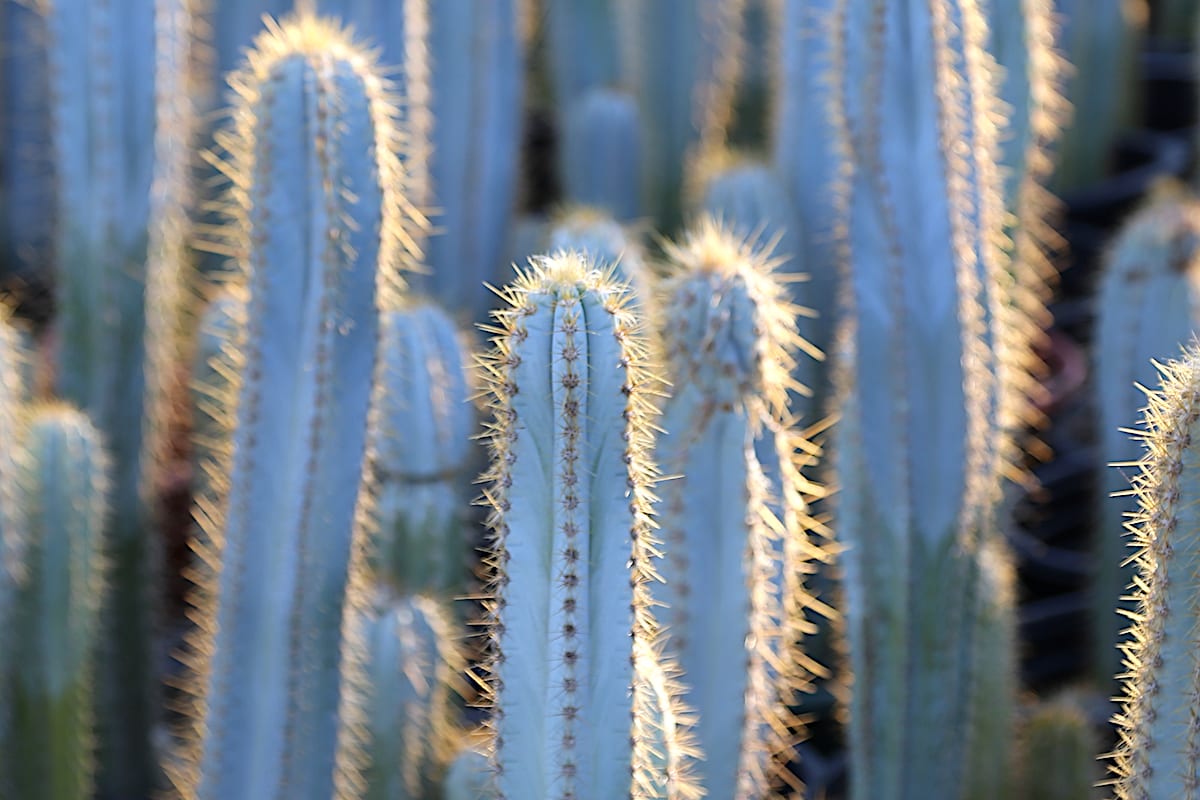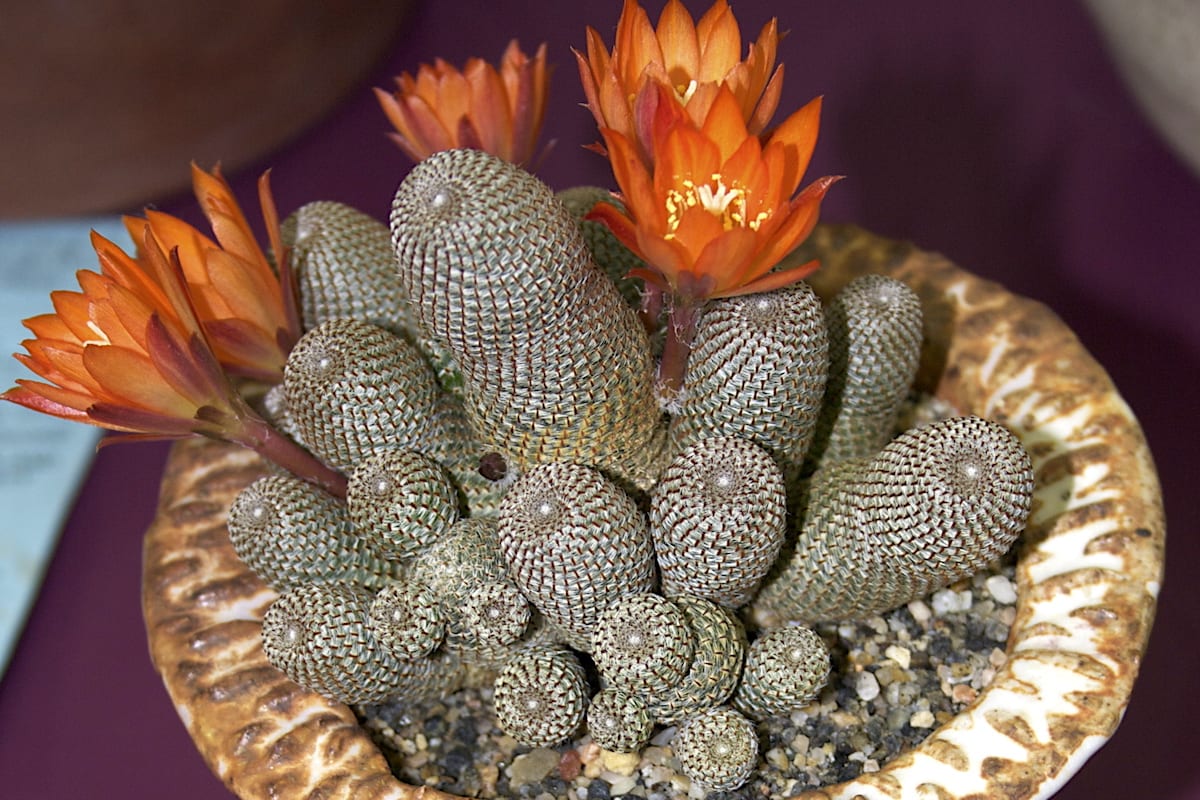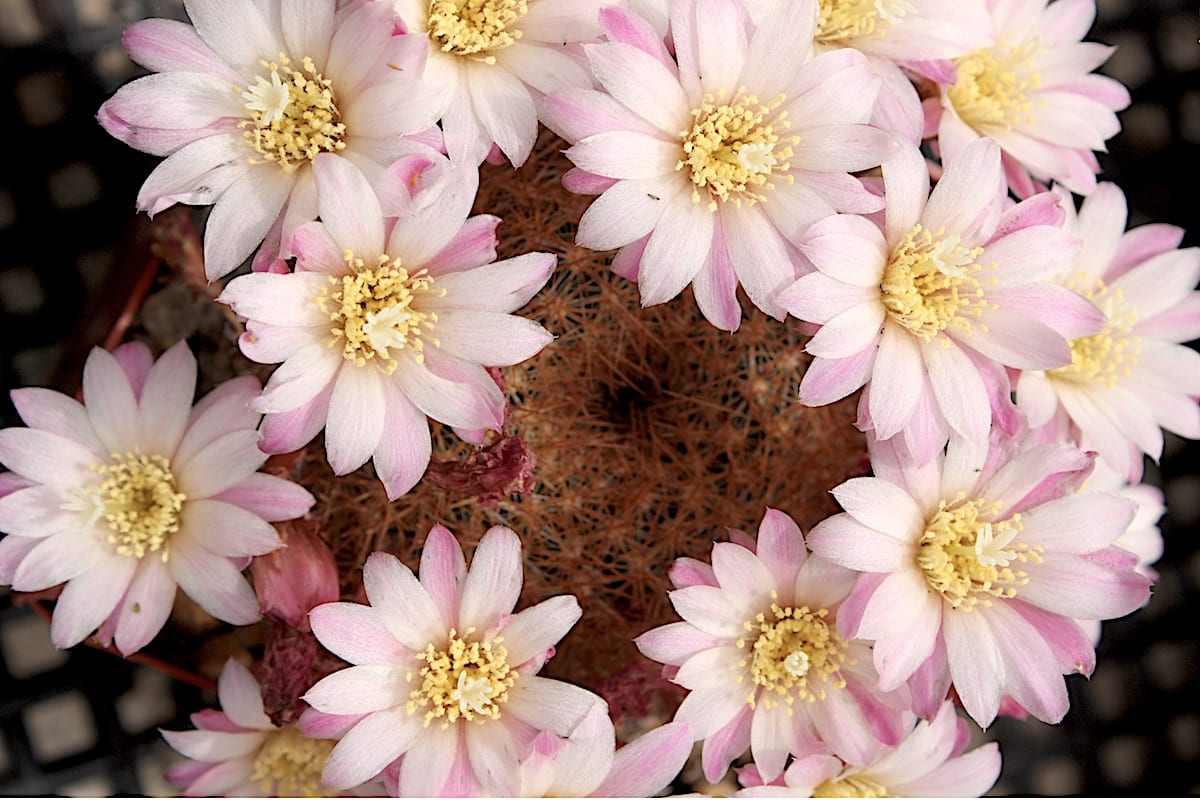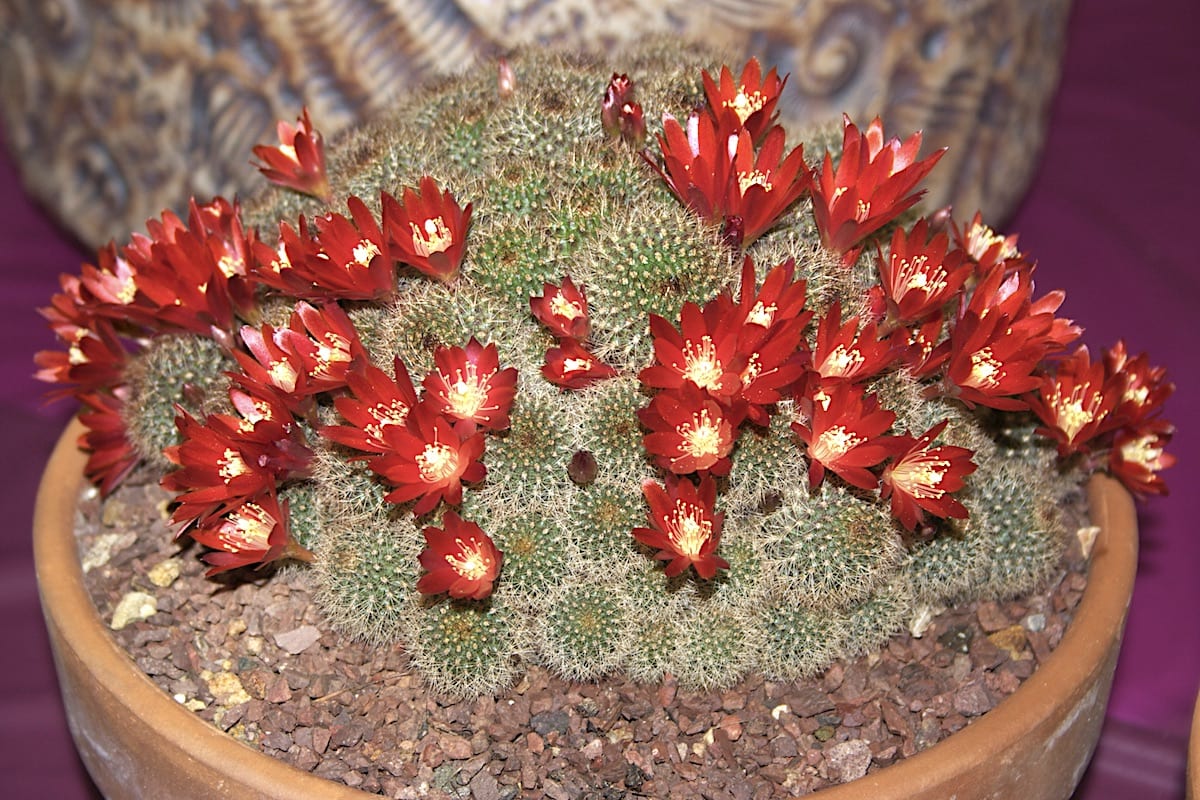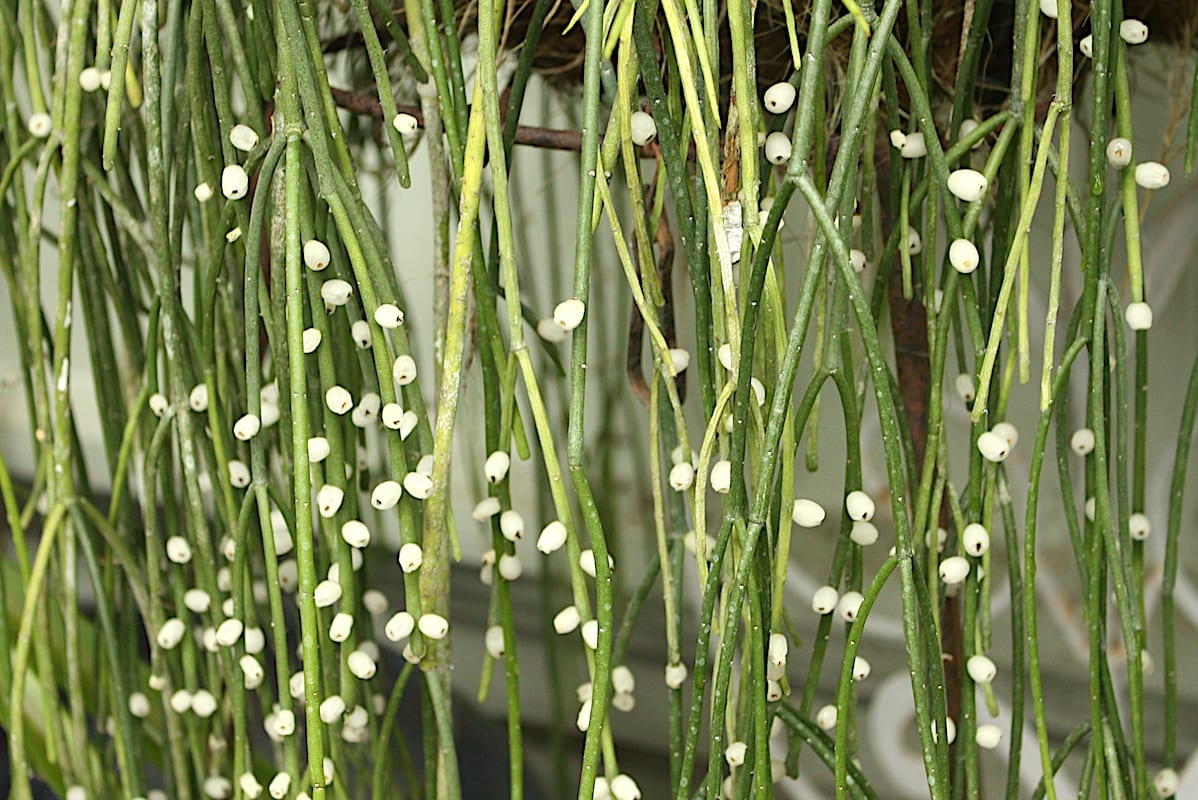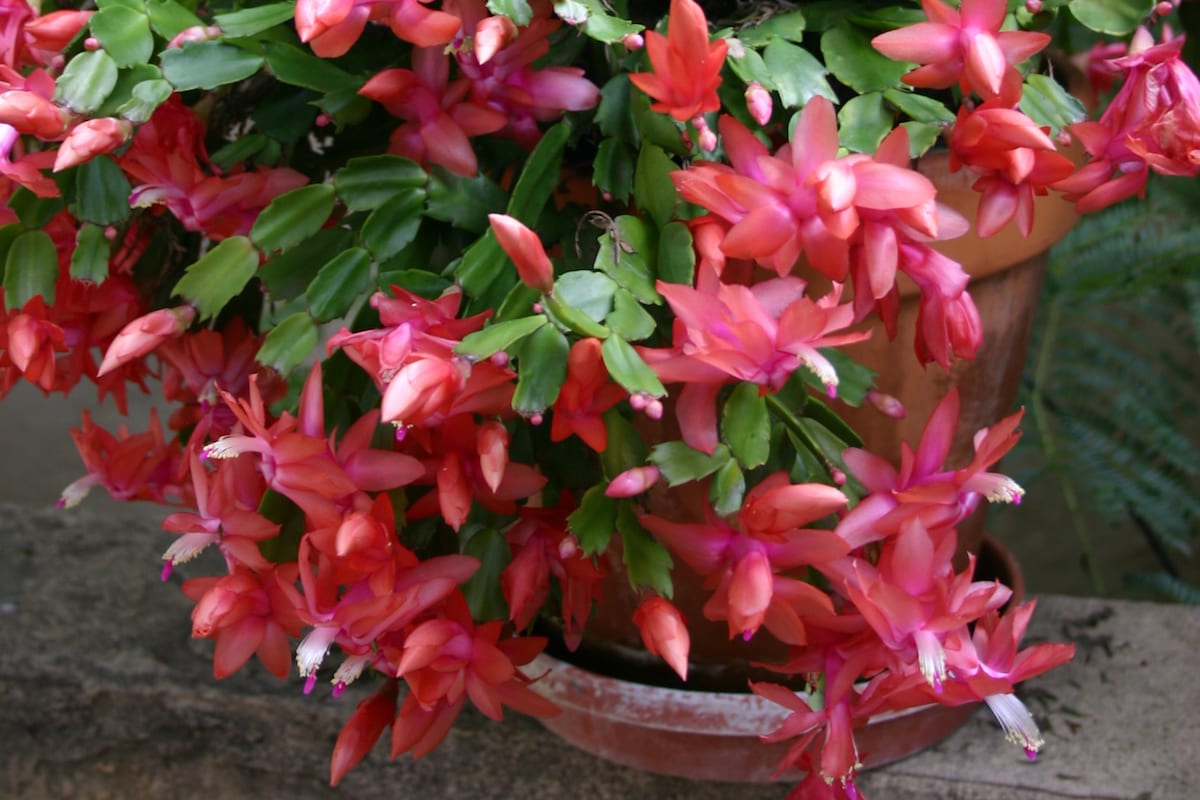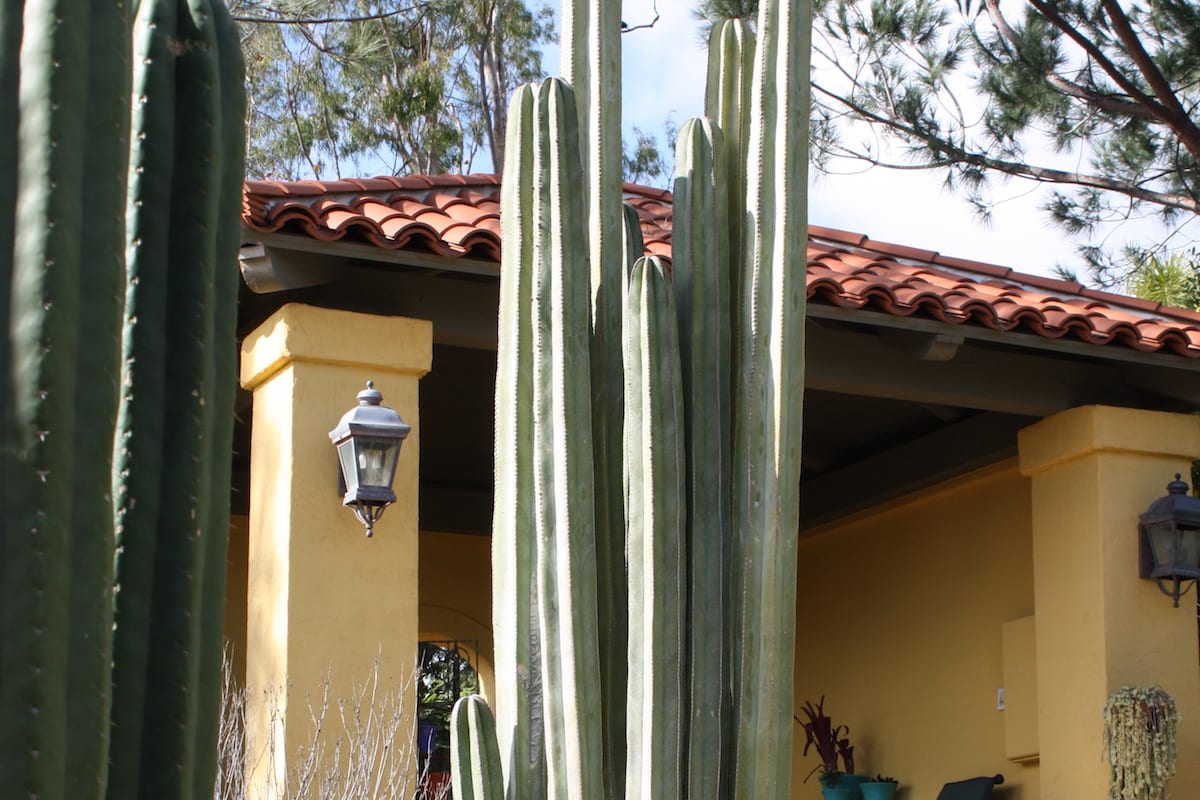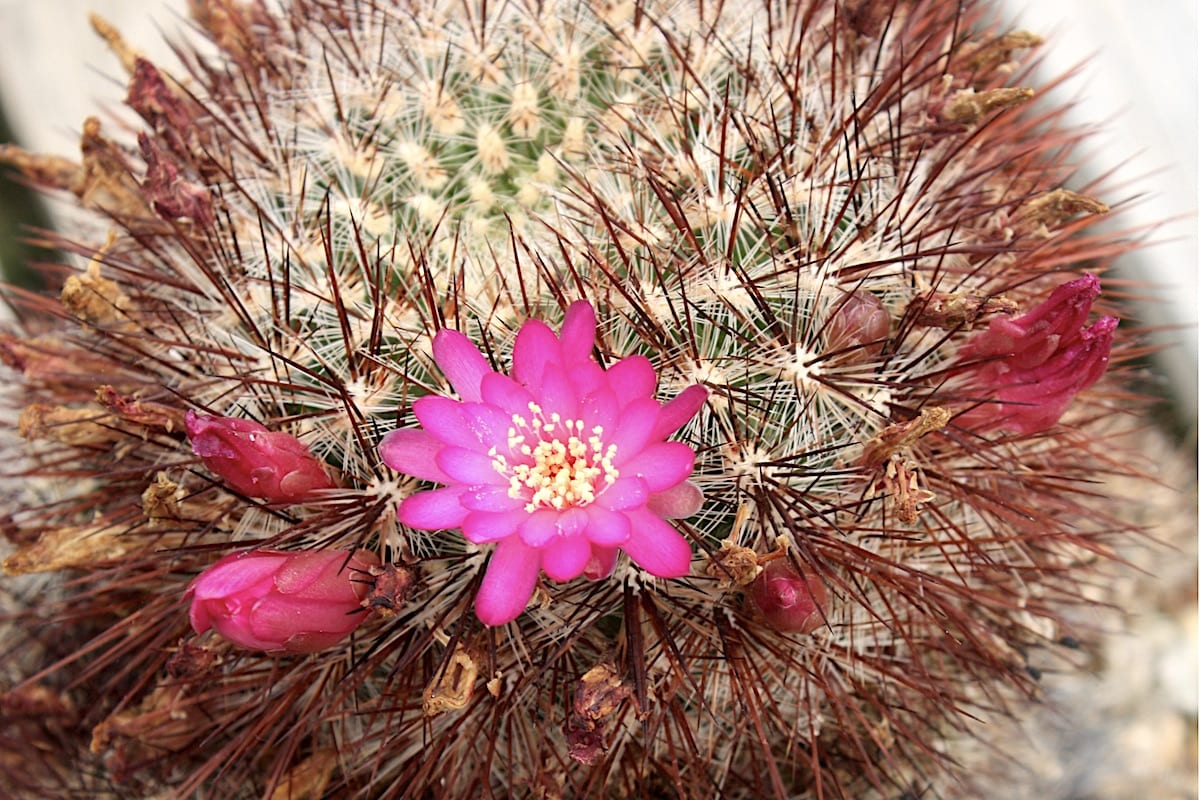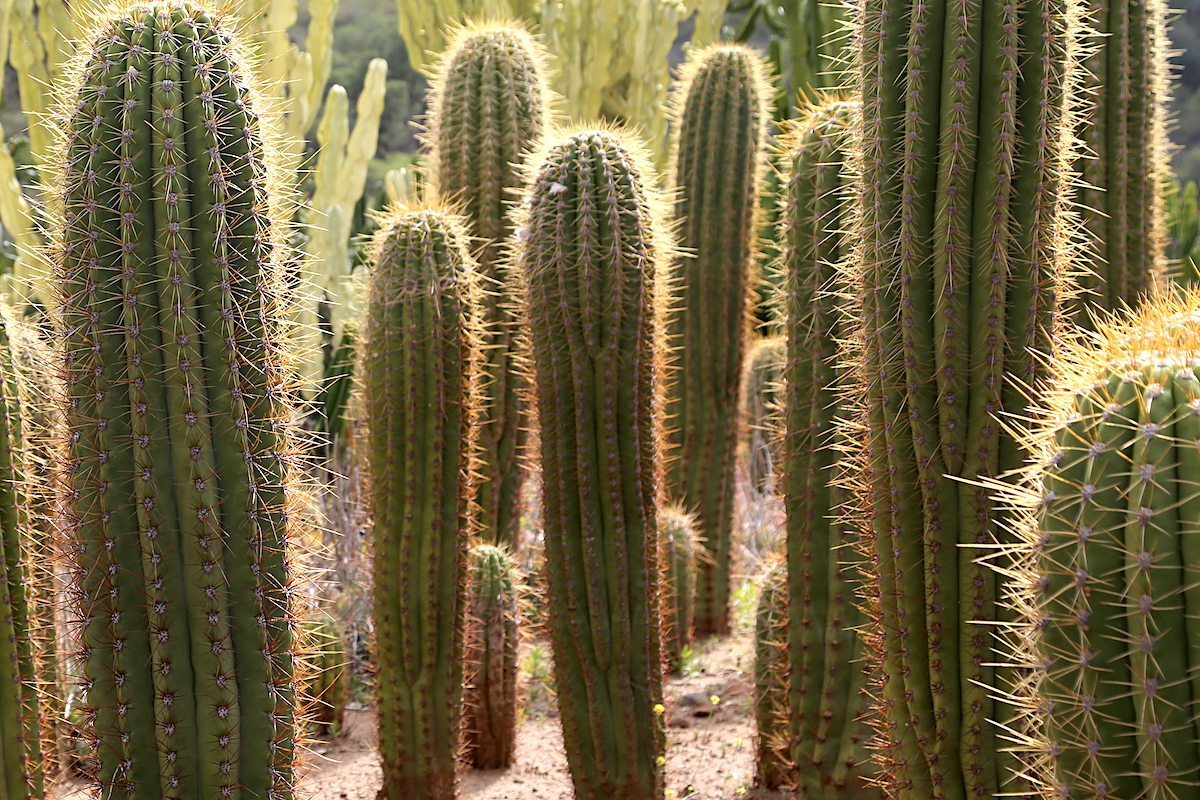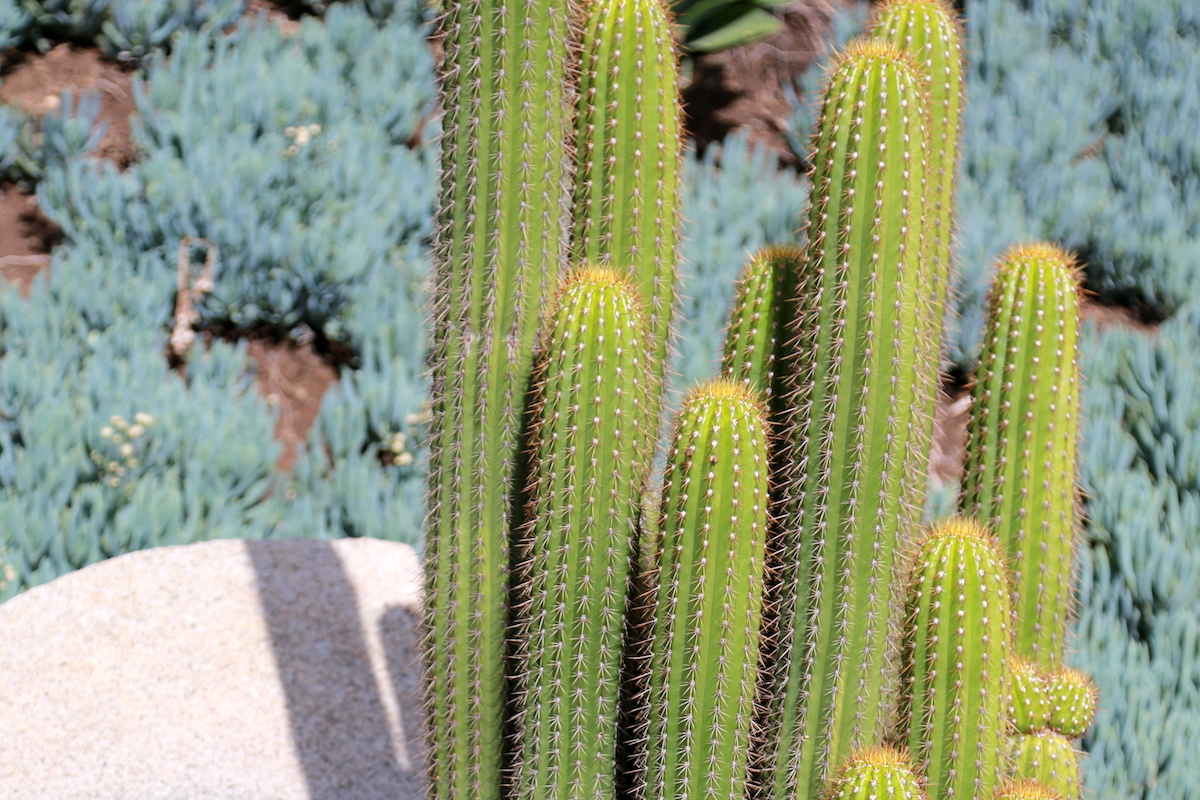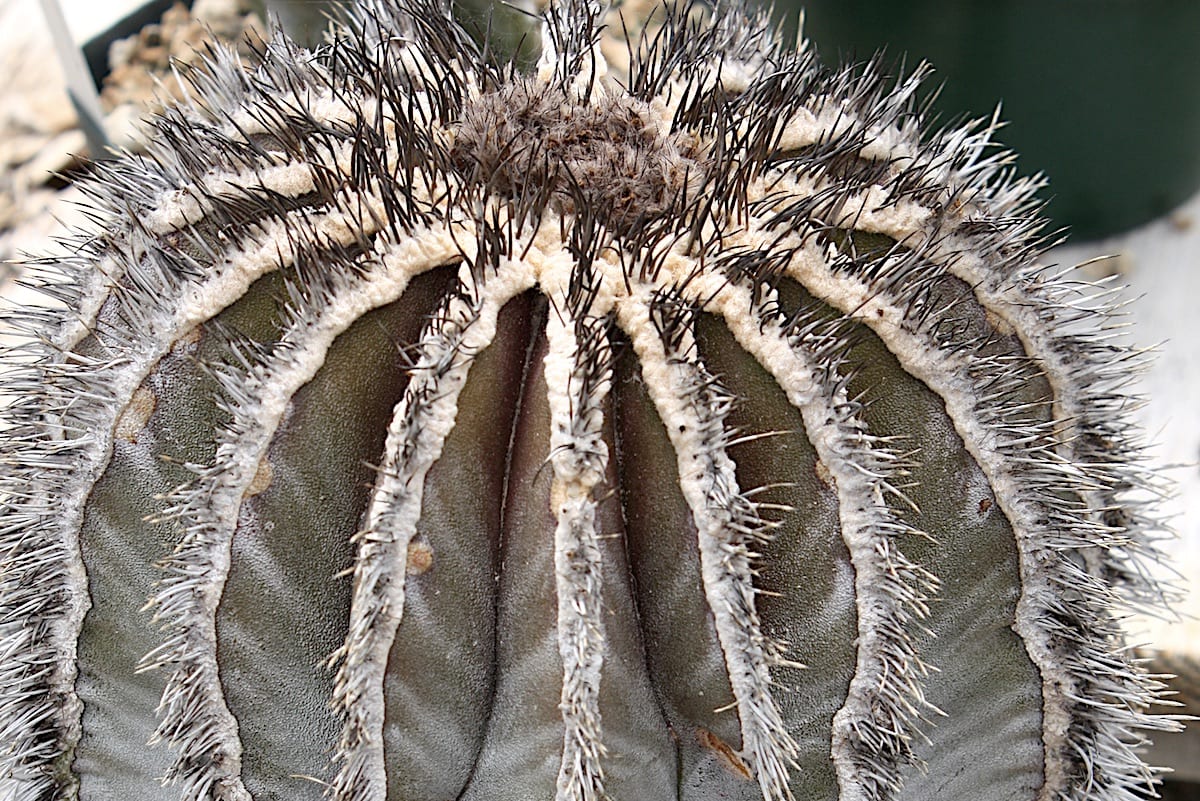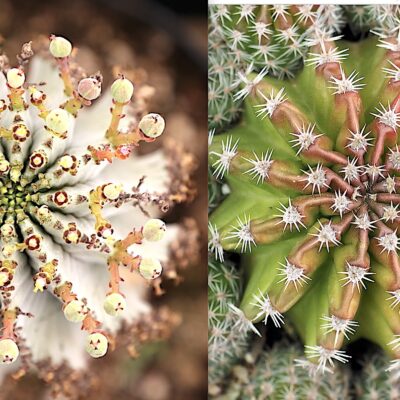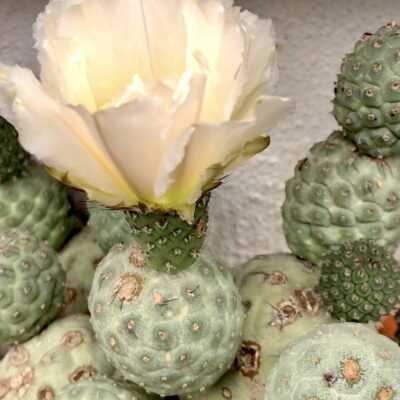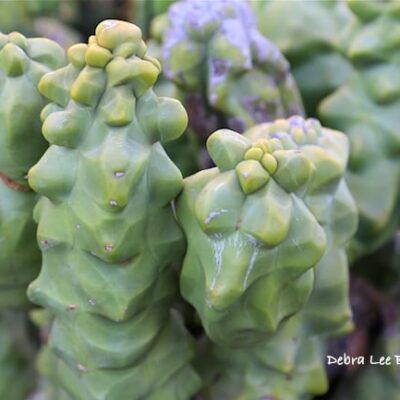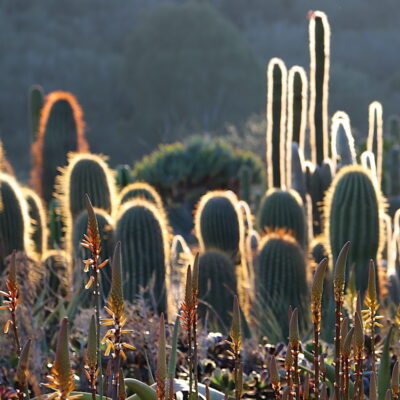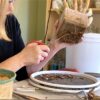About Cacti
Native to deserts and dry regions of the Americas, cacti are succulents at their simplest: a water-storing body and vestigial leaves (spines). These radiate from growth points called areoles and fend off thirsty predators. Unlike leaves, spines don't photosynthesize; the green skin of the plant's body does that.
Cacti are amazing. Imagine trying to fashion an object that retains moisture despite arid conditions, withstands temperatures upwards of 100 degrees F and below freezing, and doesn't disintegrate under ultraviolet rays. What would it be made of? Glass, plastic, metal or wood? None have a chance. Now, consider that this desert icon does all that, and also grows and reproduces!
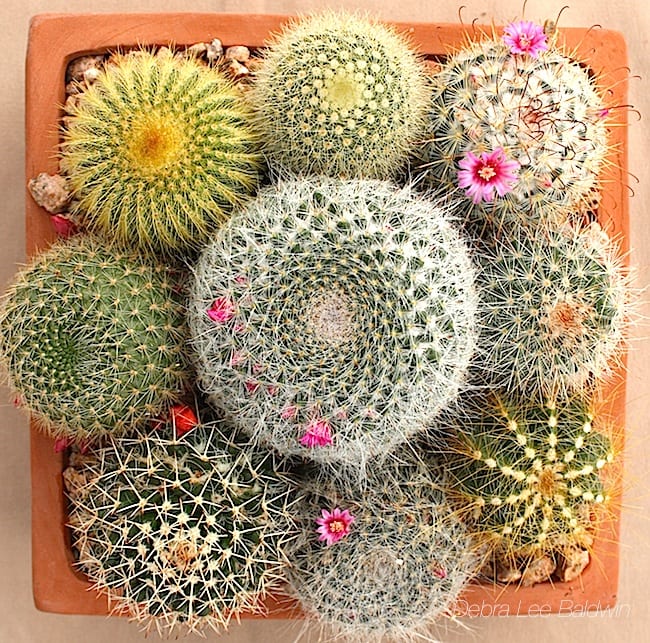
Round cacti in square pot. Note how some of the mammillarias are beginning to bloom
True, cacti can be difficult to garden around. But you can easily grow and enjoy small specimens in pots. Give them full sun for most of the day (in all but the hottest climates) and water sparingly. Be sure you have the right tools when it comes time to transplant them.
I'd rather photograph cacti than any other plants. Flowers are big and bright, and shapes are intriguing. Spines form patterns and glow when backlit. Because "cactus" deserves a gentler name, I think of them as "halo plants."
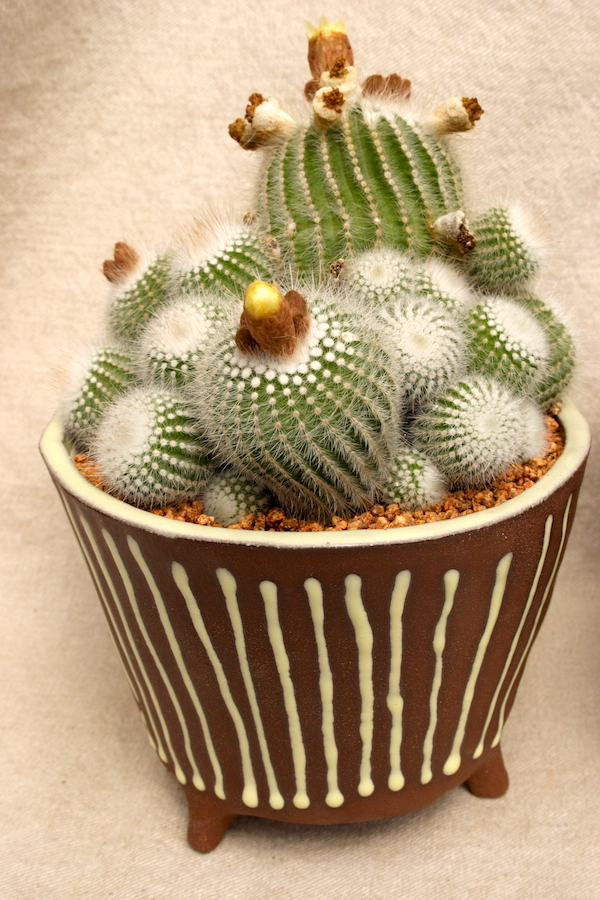
The right art pot can take a cactus from merely interesting to amazing
You too may find that an appreciation for these succulents' simple, sleek, sculptural forms is a natural progression. Is it any wonder that cactus collectors number in the millions worldwide?
Cacti aren't suitable, at least for the long-term, for floral-style succulent arrangements. Although they do add contrast and texture, most cacti (tropical varieties are an exception) have different light-and-water needs compared to soft-leaved succulents. So, give the spikies their own pots, or dedicate a "dry" section of the garden to them.
Cactus Flowers
Cacti bloom for a short period, usually in spring or summer. The flowers tend to open progressively instead of all at once.
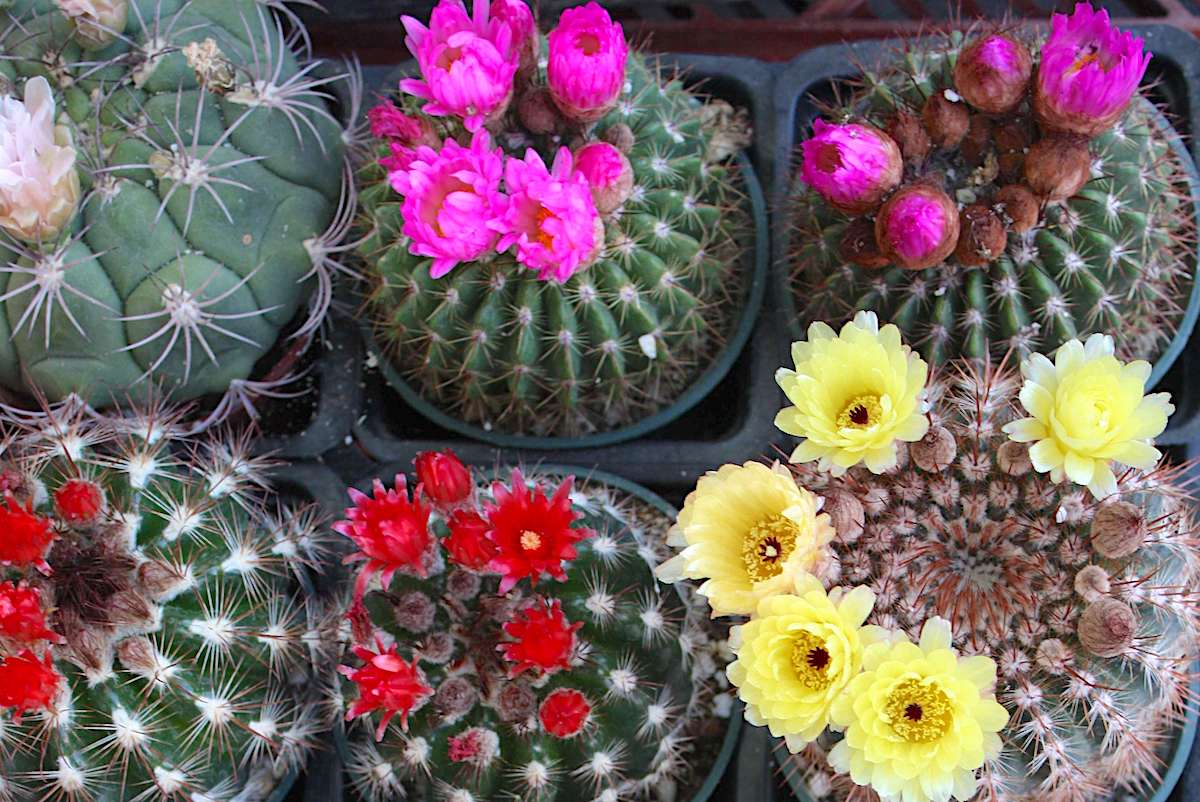
An assortment of small cacti are crowned with vivid flowers in spring
Typically flowers are large in proportion to the plant, so when cacti bloom, you really notice it. So do insects and other pollinators. These may have to come from a distance, so flowers with satiny, neon-bright petals helps.
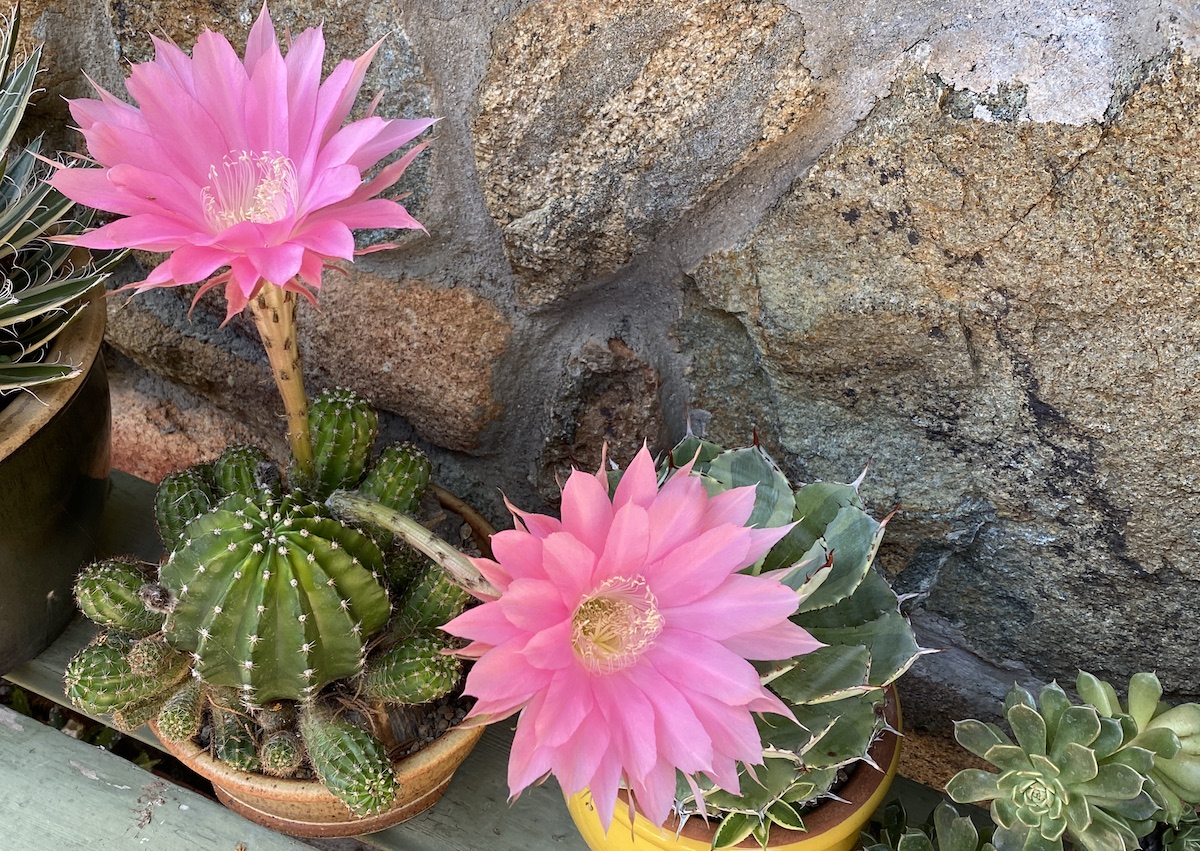
It's ironic that these desert plants have flowers that resemble waterlilies.
You might want to select a pot that’s the same color as the flower, so in combo they put on quite a show when the plant blooms.
Better than Blooms
Collectors are much more into form than flowers. They notice how the top of cylindrical or spherical cactus has an intriguing pattern, like a Fibonacci spiral.
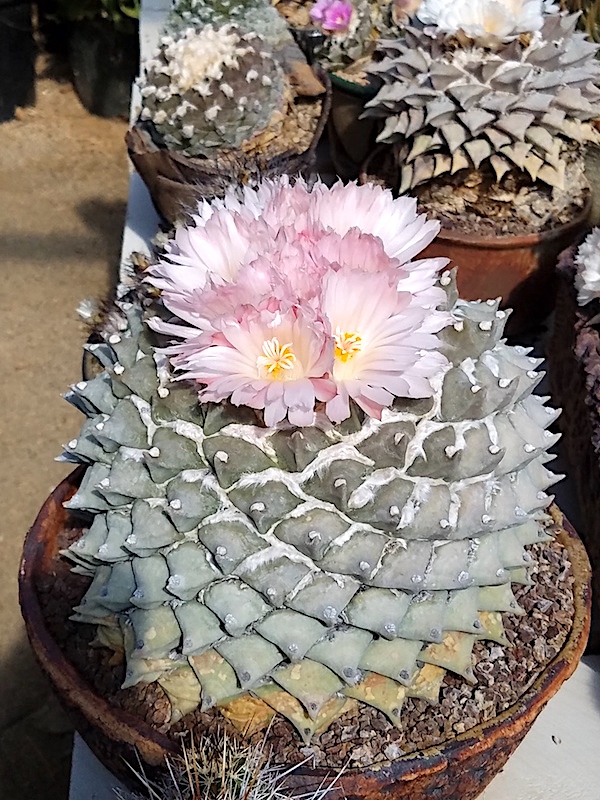
Ariocarpus retusus, collection of Peter Walkowiak
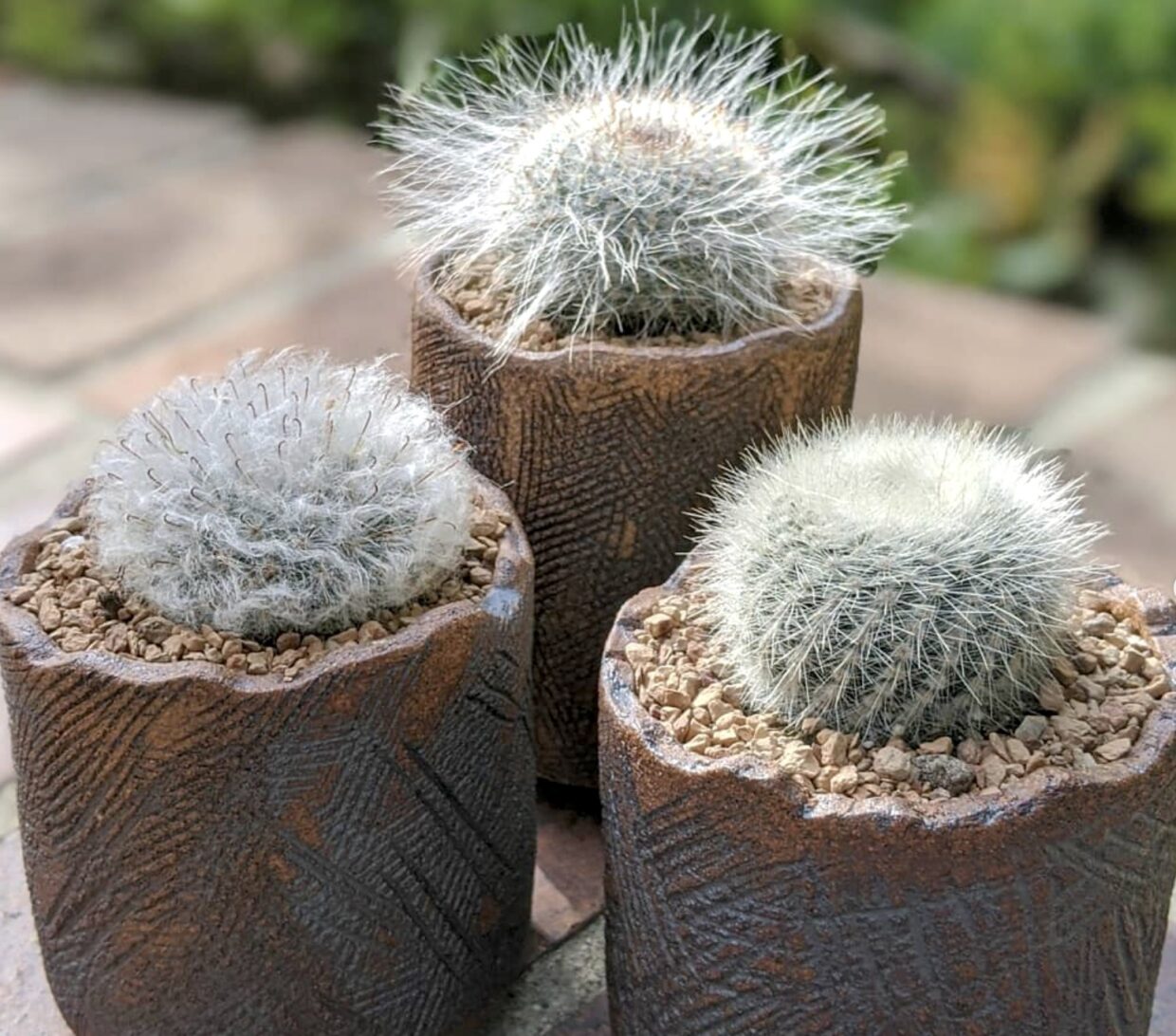
Some cacti have long wispy white fibers like hair. These Mammillaria and notocactus with white filaments are in Pottery By Patrice
Spines can be the worst thing about cacti, but they’re also one of the best. Translucent spines make the entire plant shine as though plugged into a light socket. So, when you place your cacti where they’ll get lots of light, they'll not only be happier, you’ll be able to enjoy them that much more.
Popular varieties for pots
These globular cacti, shown in my Cactus Curio Box project, are readily available in nurseries and online. All bloom beautifully. For more varieties and IDs, scroll to the gallery below.

LATIN NAMES (and common names if available):
Mammillaria mystax
Mammillaria hahniana (Old lady cactus)
Mammillaria carmenae (Isla Carmen pincushion)
Mammillaria elegans
Espostola melanostele (Peruvian old lady cactus)
Mammillaria celsiana (Golden pincushion)
Mammillaria sp. (sp. means “species unknown”)
Mammillaria fragilis ‘Cristata’ (Crested thimble cactus)
Notocactus sp. (Parodia)
Echinopsis ‘Domino’ (Domino cactus)
Mammillaria sp.
Notocactus ‘Silver Ball’ (Silver ball cactus)
Resources
Where to buy cactus
Videos
How to Repot a Stuck Spiny Succulent (5:47)
Plant a Trailing Cactus in a Tall Pot (3:45)
Create a Cactus Curio Box (3:54)
At the Cactus & Succulent Society Show & Sale (3:29)
Use Tweezers to Tend Spiky Succulents (2:59)
Articles
Why Grow Paddle Cacti? DLB's 16 Reasons. Of the dozen or so types of cacti in my garden, I have more opuntias than any other.
How Cactus Snowflakes Seduced Me. Remarkably, the spination of certain cacti suggests snowflakes...
Why Cactus is Popular. Long a pariah plant, cactus is gaining popularity...
I Come Out as a Cactus Lover. Are you a closeted cactus fancier? Time to be proud!
The Joys of Cholla (Cylindropuntia) "Could there be a more unfriendly plant?" I asked. You'd think I'd insulted the entire state of Arizona...
Hidden Gymnos: My Thai Succulent Mystery In mid-December a package from Thailand arrived with no explanation...
What You Should Know about Saguaro Cactus Wondering if you might own this desert icon? Here's what you should know...
Cactus Photo Gallery
I've identified and labeled these photos for you according to genus and species, and common names if available. If you think I've ID'd any incorrectly, I definitely want to know. Thanks! — Debra Lee Baldwin
Related Info
Euphorbia or Cactus? How to Tell
How can you tell a spiny euphorbia from a cactus? Observe key characteristics: the type of spines, flowers and leaves (or lack thereof). As I compiled my site’s new Euphorbia page, I happily acquired the ability to tell at a glance which is which. Sure, you can scratch a plant, and if it drips milky sap, it’s
See Rich Zeh’s 30-Year Succulent & Cactus Collection
Rich Zeh has an Aladdin’s trove of cacti and succulents. “I’m pretty much maxed out on space,” he says of his one-acre garden and greenhouse in Paradise Valley (Phoenix) Arizona.
Lophocereus schotii (Totem Pole Cactus)
Succulent expert Don Newcomer showed me a rare columnar, spineless cactus from Mexico: Lophocereus schotii (totem pole cactus). It can be chubby and lumpy, tall and skinny, or columnar and spiral-forming. Lophocereus (Pachycereus) schotii has spines. The monstrose form has club-shaped trunks with spineless protuberances. There are three monstrose varieties: fat (obesa), spiral (spiralis) and skinny or totem…
A Dozen Reasons to Love Cacti
Why do I love cacti? It’s a natural progression: As we gain appreciation for the lines, textures and shapes of succulents, we arrive at those that exhibit elegant simplicity—never mind that they have spines (in fact, sometimes because they do). Here are a dozen reasons.
How to Repot a Stuck Spiny Succulent
In a new YouTube video, I’d planned to show you how to repot a spiny succulent. For my overgrown corn-cob euphorbia, I picked an art pot in the perfect size, color and pattern. But (yikes!) the spiky succulent was firmly stuck in its old pot.

